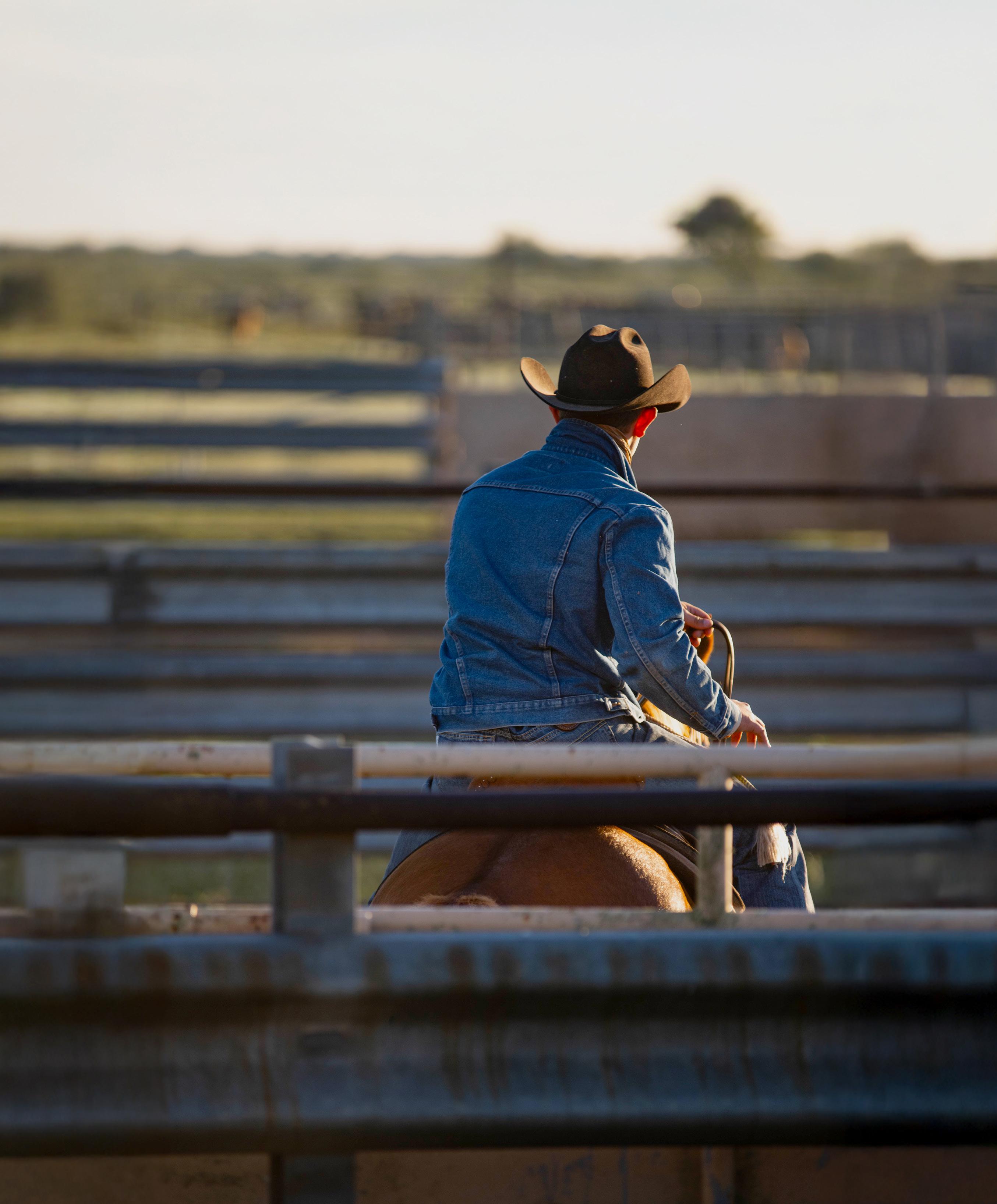
Passage Rate
Unlocking keys to nutrient absorption.
Mineral Matters
Five things to consider for supplements this fall.



Unlocking keys to nutrient absorption.
Five things to consider for supplements this fall.

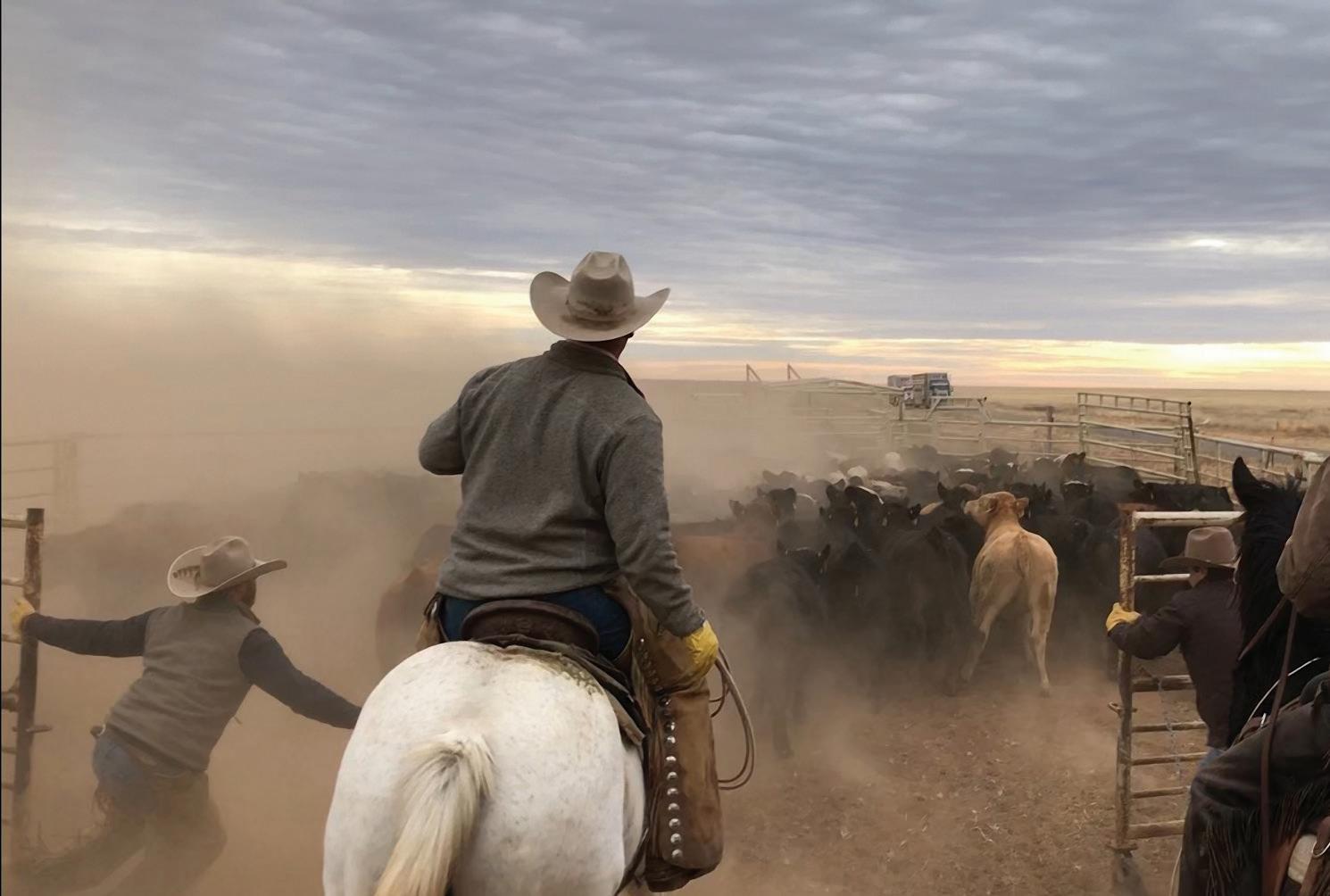

Birdwell Plainview, TX (806) 681-3667
Griffin Atoka, OK (580) 271-1333
Johnson Dallas, TX (214) 384-2653

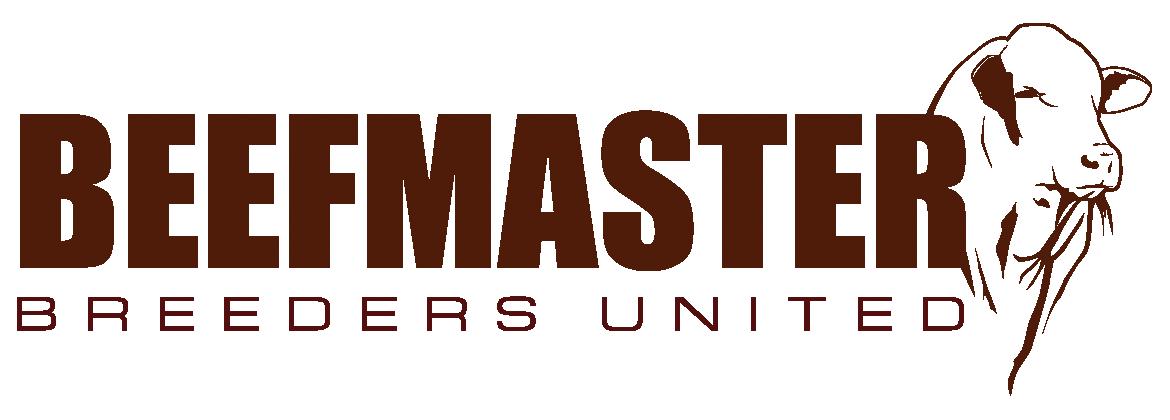

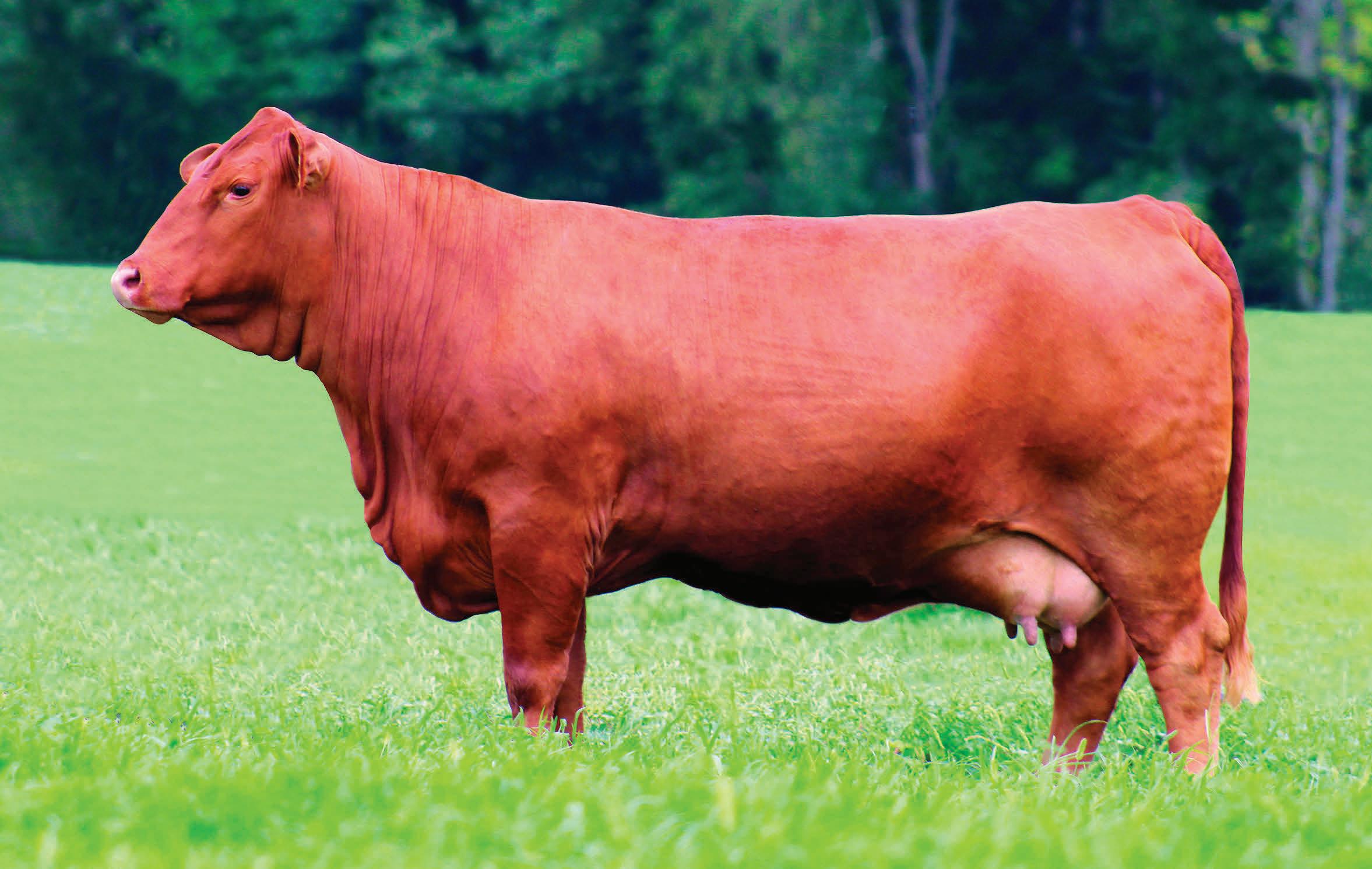

How to monitor and improve nutrient absorption.
By Krissa Welshans

Five things a cattle nutritionist wants you to know.
By Jena McRell


Nutrition can sometimes feel like one of the trickiest parts of cattle management. The science runs deep, the variables are many and no two herds are exactly alike.
That is why I am especially proud of this month’s issue of The Cattleman. Our feature stories go beyond surface-level advice and elevate the nutrition conversation based on the expertise of many specialists within the field. I think our readers will find great insight into how to “get it right.”
Our first feature, Unlocking Rate of Passage, looks at how nutrient absorption is influenced by both forage and feed, and how simple monitoring, even of manure, can provide valuable insights into how a nutrition program is working.
In Mind Your Minerals, we talk with a cattle nutritionist who shares the essentials every producer should know. From testing forage and water quality to ensuring cattle actually consume the minerals provided, this feature arms you with practical ways to improve your current nutrition strategies.
Leadership within Texas & Southwestern Cattle Raisers Association starts with members stepping forward. Committee sign-ups open this month, and volunteering to serve is a meaningful way to give back while helping guide the future of our industry. If you have thought about participating, now is the time. The deadline to apply is Dec. 31. You’ll find more information on page 26.
November is a time to give thanks, and I am especially grateful for our members who make this association strong. Wishing you and your family a blessed Thanksgiving season. T C

Jaclyn Roberts Parrish Executive
Director of Communications, Marketing & Partnerships/Editor-in-Chief, The Cattleman jaclyn@tscra.org • 817-916-1794
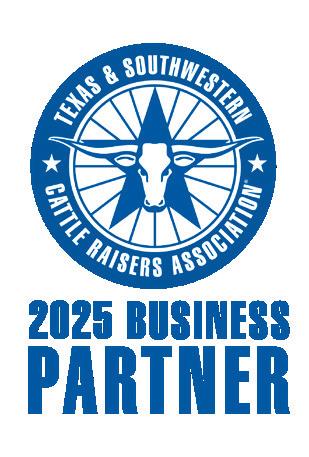

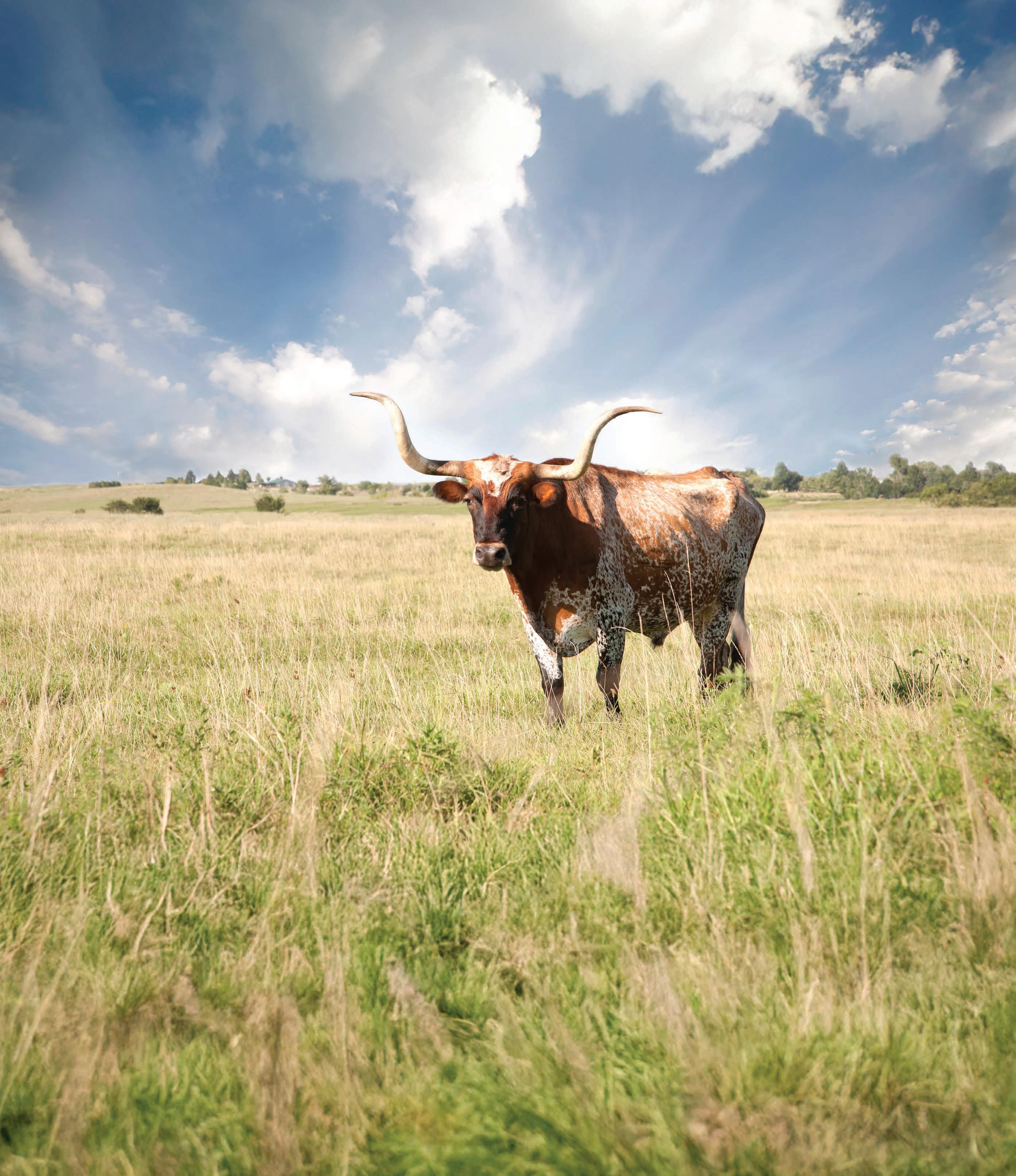
Local
Precipitation
November 2025 / / Vol. CXII, No. 6
Published by Texas & Southwestern Cattle Raisers Association
P.O. Box 101988, Fort Worth, Texas 76185
Phone: 817.332.7064 • Fax: 817.394.1864 tscra.org
EDITORIAL
Editor-in-Chief Jaclyn Roberts Parrish
Managing Editor Jena McRell
Associate Editor
Shelby Kirton
Copy Editors Kayla Jennings, Elyssa Foshee Sanders
Graphic Designer Ryan Barten
EXECUTIVE DIRECTORS
Executive Vice President/CEO Jason Skaggs
Communications, Marketing & Partnerships Jaclyn Roberts Parrish
Events, Education & Leadership Development Emily Lochner
Finance & Human Resources Megan Wills
Interim Government Relations Peyton Schumann
Law Enforcement, Brand & Inspection Services Clay McKinney
Membership & Operations Lisa Walker
OFFICE LOCATIONS
Fort Worth
2813 S. Hulen St., Suite 150 Fort Worth, Texas 76109
Austin 919 Congress Ave., Suite 750 Austin, Texas 78701
Subscription Inquiries: tscra@tscra.org or 800-242-7820
Advertising Sales: sales@tscra.org or 817-332-7064
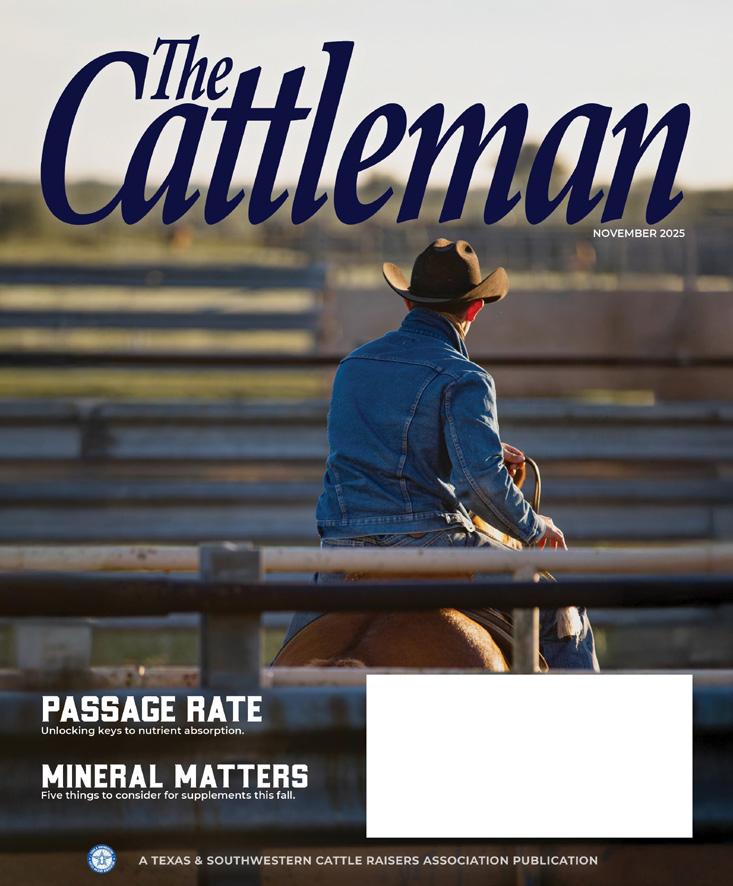
Seasons change, tradition remains. Working cattle on a ranch in southeastern Texas.
Photo by Katie Barnett
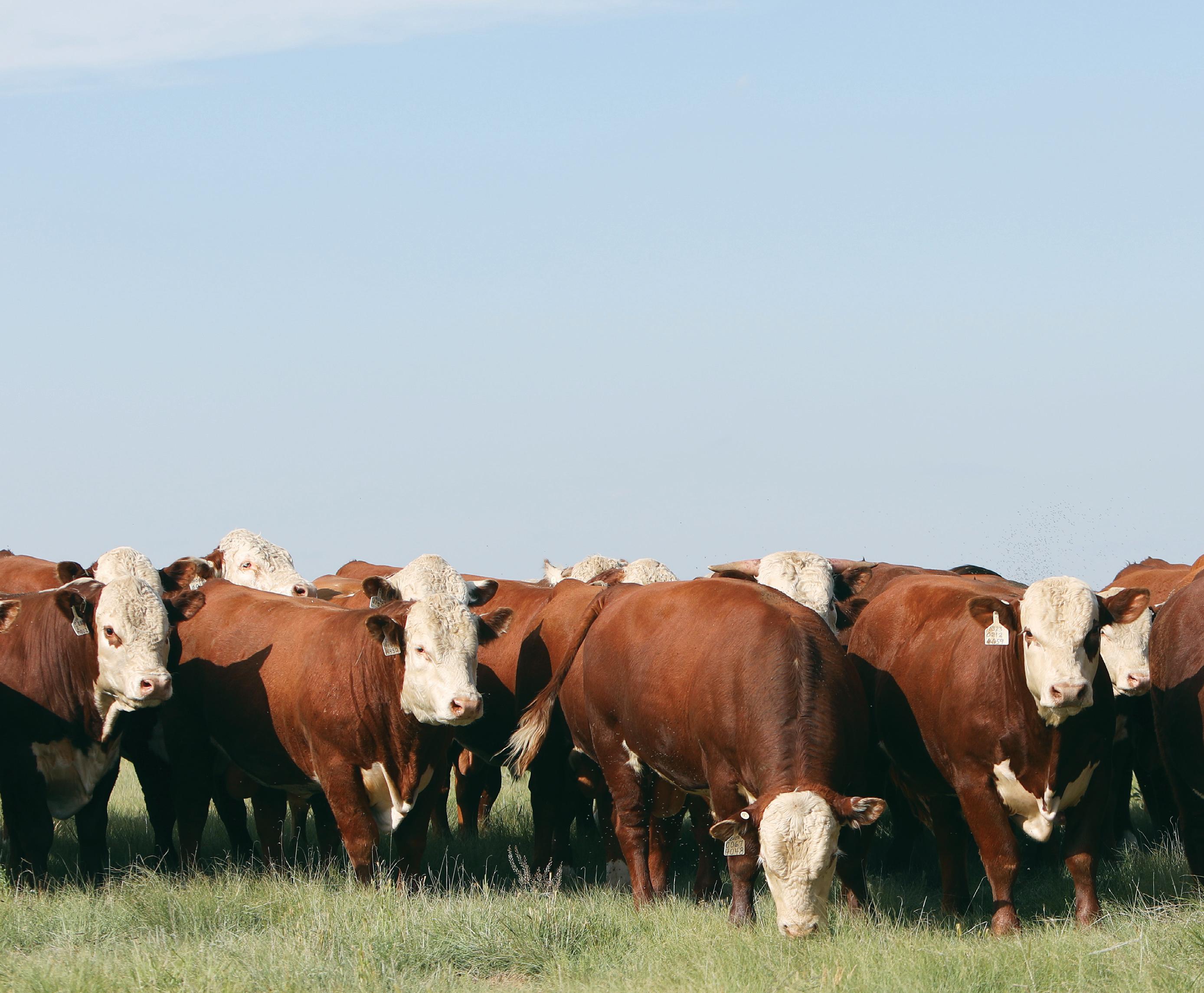
WEDNESDAY, NOVEMBER 12, 2025
11 a.m., Jordan Cattle Auction, San Saba, Texas
Horned, Polled & Homozygous Polled Hereford Bulls…Powerful…Docile…Efficient…Fertile…GE-EPDs


Progressive cattlemen have been choosing Barber Ranch bulls for over 100 years. Wanna know the reason?
Our emphasis has always been on extra muscle in an attractive package. Our 2025 sale bulls sport impressive carcass EPDs to complement their performance. We offer a unique combination of calving ease, explosive growth and highly desirable carcass traits with extra good looks.

In addition to approximately 100 Hereford bulls ready to work for you, our 2025 San Saba sale will feature approximately 50 head of spring bred registered Hereford heifers— all with genomically enhanced EPDs.





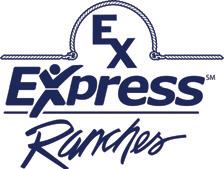

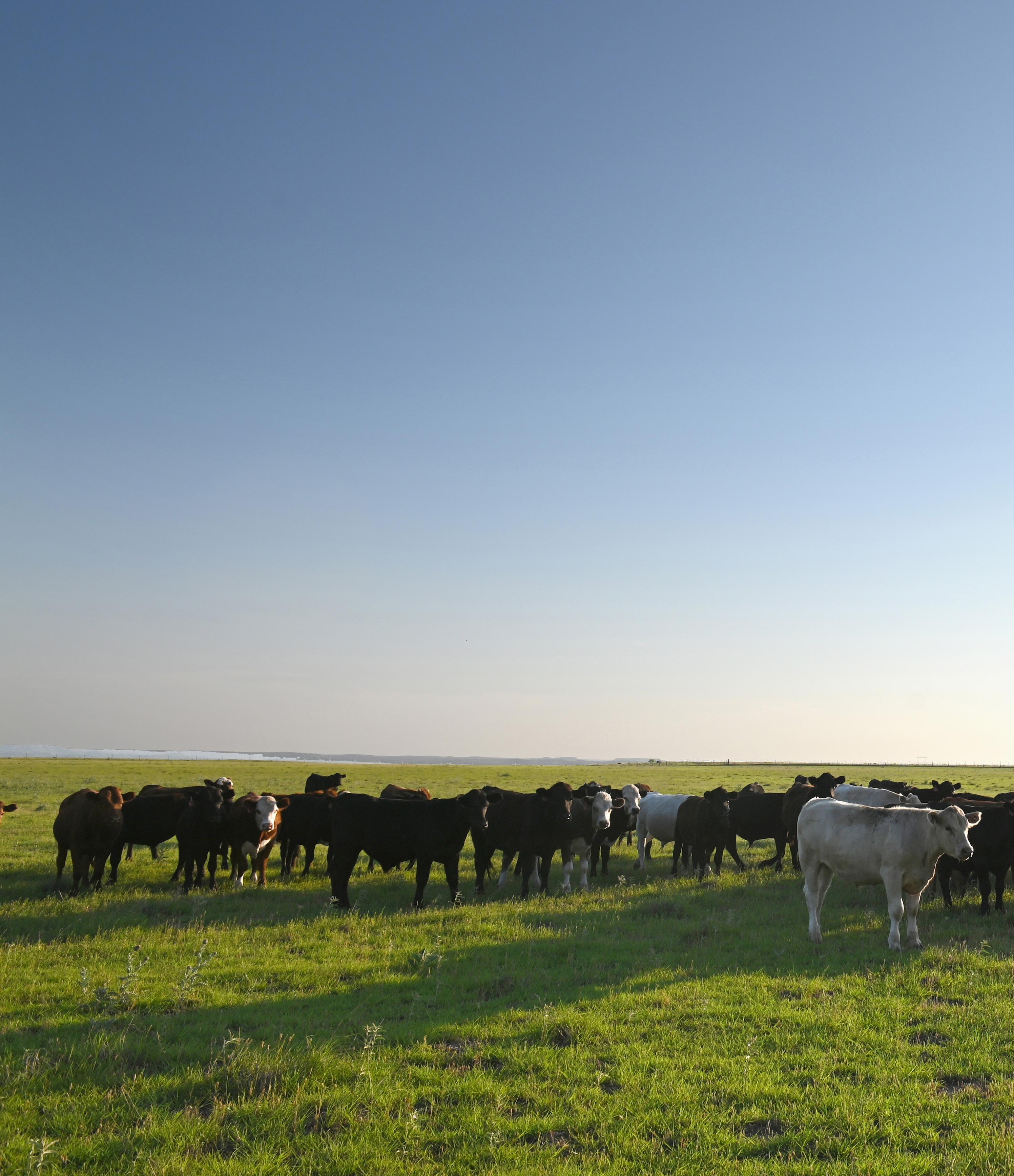
By Krissa Welshans
Nutrient intake and forage utilization are key to optimizing cattle performance and running an efficient beef cattle operation, especially since feed is traditionally the single largest expense. Even the smallest nutritional change can impact performance, potentially affecting a producer’s bottom line significantly.
Cattle are highly efficient at extracting nutrients from forages. Their fourchambered, ruminant digestive system uses microbial fermentation to break down plant fibers. One factor that plays a vital role in their digestive process is rumen passage rate, or the rate at which feed moves through the rumen and digestive tract.
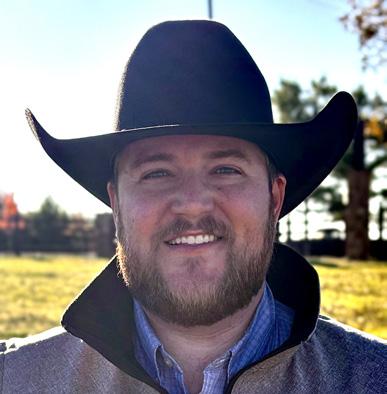
If passage is too fast, cattle rumen microbes — often called bugs — are unable to ferment, digest and break down the feed and forage, and absorb all the nutrients before being expelled. Contrarily, if passage is too slow, cattle are unable to consume enough dry matter to meet energy and protein demands because their system isn’t emptying fast enough for the animal to consume more. In both cases, animal performance is affected.
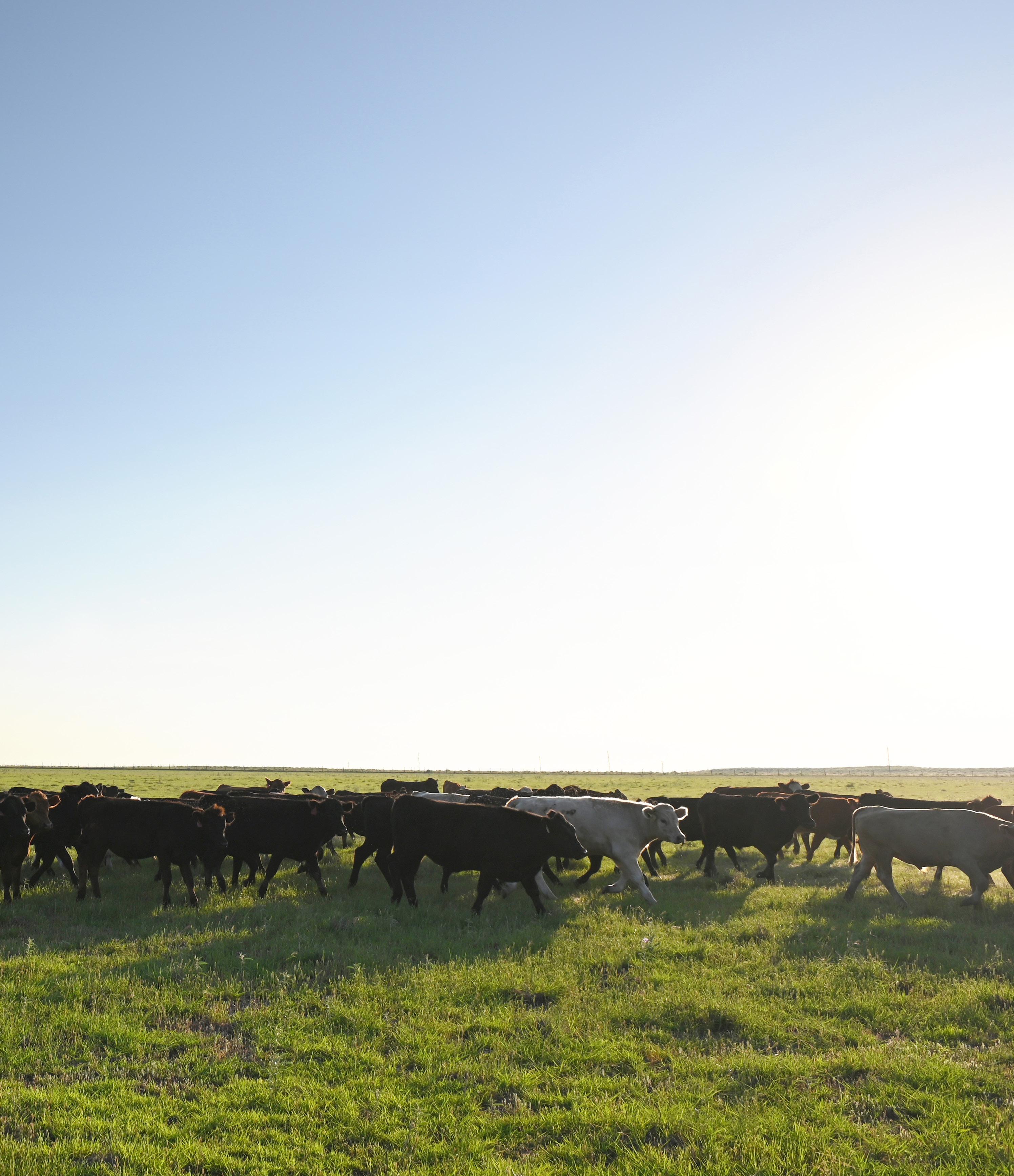
Comparing stocker calves grazing highly digestible winter wheat pasture with cows consuming dormant, low-quality forages illustrates the concept firsthand. Depending on the scenario, the ideal absorption process is achieved differently because passage rate needs to be slowed in stocker cattle and accelerated in beef cows. Overall, optimizing passage rate can improve rate of gain, body condition, breeding success, and ultimately, profitability.
Russell Carrell, Ph.D., a beef cattle nutritionist with Livestock Nutrition Center based in Nacogdoches, says when developing a nutrition program, producers must first understand the basic biology of the livestock they are managing. Nutrient requirements change with age, stage of production, sex, breed, environment and forage quality.
“When we’re thinking about a stocker calf on wheat, this is a growing animal,” Carrell says. “We are making money off the ability of that animal to put on weight over a relatively short period of time.”
A cow, on the other hand, is more like a factory that needs to be maintained. “We have to give her all the things she needs for maintenance and upkeep,” he adds.
Wheat pasture is extremely digestible with a high crude protein content of around 20% to 25% and low fiber content, resulting in rapid passage.
Slowing the rate of digestion and passage through supplementation can help improve absorption of nutrients, allowing producers to potentially increase weight gain, increase carrying capacity, lengthen the grazing period or prevent health issues commonly associated with running stockers on wheat.
In Carrell’s region of East Texas and parts of Oklahoma, he estimates about half of producers use supplementation programs.
“We still see a lot of traditional wheat-pasture producers who turn calves out on wheat ground, but I’m seeing a lot more people backgrounding cattle in a dry lot setting or even in a pasture setting, where they put them in a space and use a blended feed, a blended feed and hay or a total mixed ration,” Carrell says.
In the second scenario, he explains, supplemental feeding provides a consistent source of nutrition for the calves and allows the producer to more efficiently manage inputs.
According to Dusty Abney, Ph.D., a beef cattle nutritionist near Athens, many producers find it difficult to justify spending more money unless they experience health or death loss issues like pneumonia, grass tetany or bloat.
For stockers grazing wheat, Abney recommends supplementing with feed that is higher in energy and lower in protein because wheat already has an overabundance of protein. Many producers, he says, prefer the convenience of a cube. Other options include free-choice hay, protein blocks with added fiber or dried distillers grains.
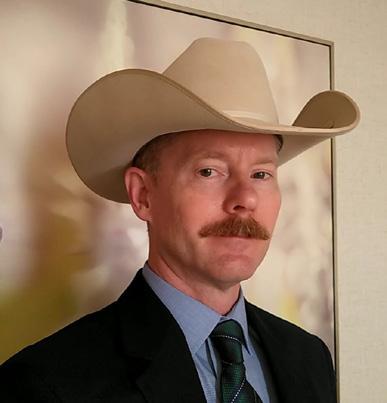
“I don’t think there is one right way to do it; the right way is the one that makes money,” Carrell says.
Though it changes year to year, Carrell says feed is currently relatively cheap.
“If we can substitute a half-percent up to 1% of that animal’s body weight in supplement,” he says, “we’re getting that animal an extra shot of energy and more targeted nutrition, instead of just saying ‘it is what it is.’”
In the case where rumen passage rate must be slowed, the right supplementation can improve nutrient absorption and weight gain. Photo by Emily McCartney Eiguren.
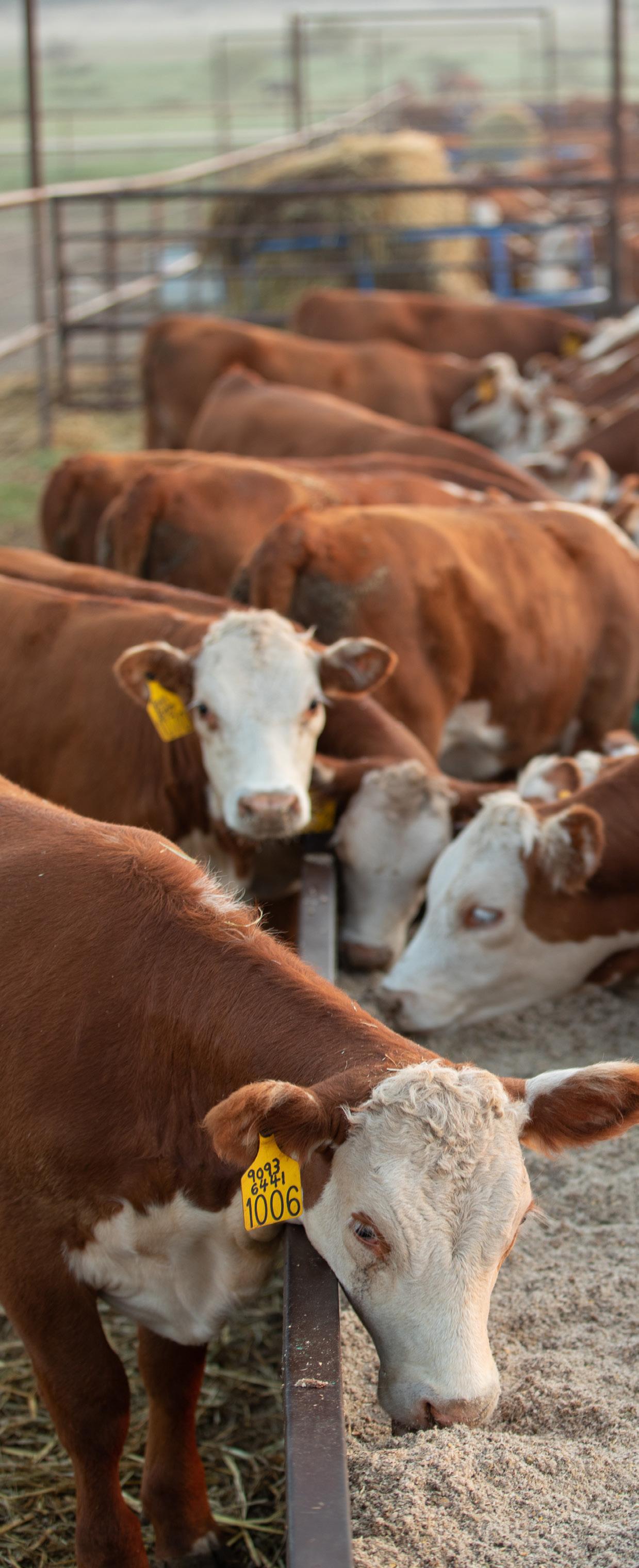
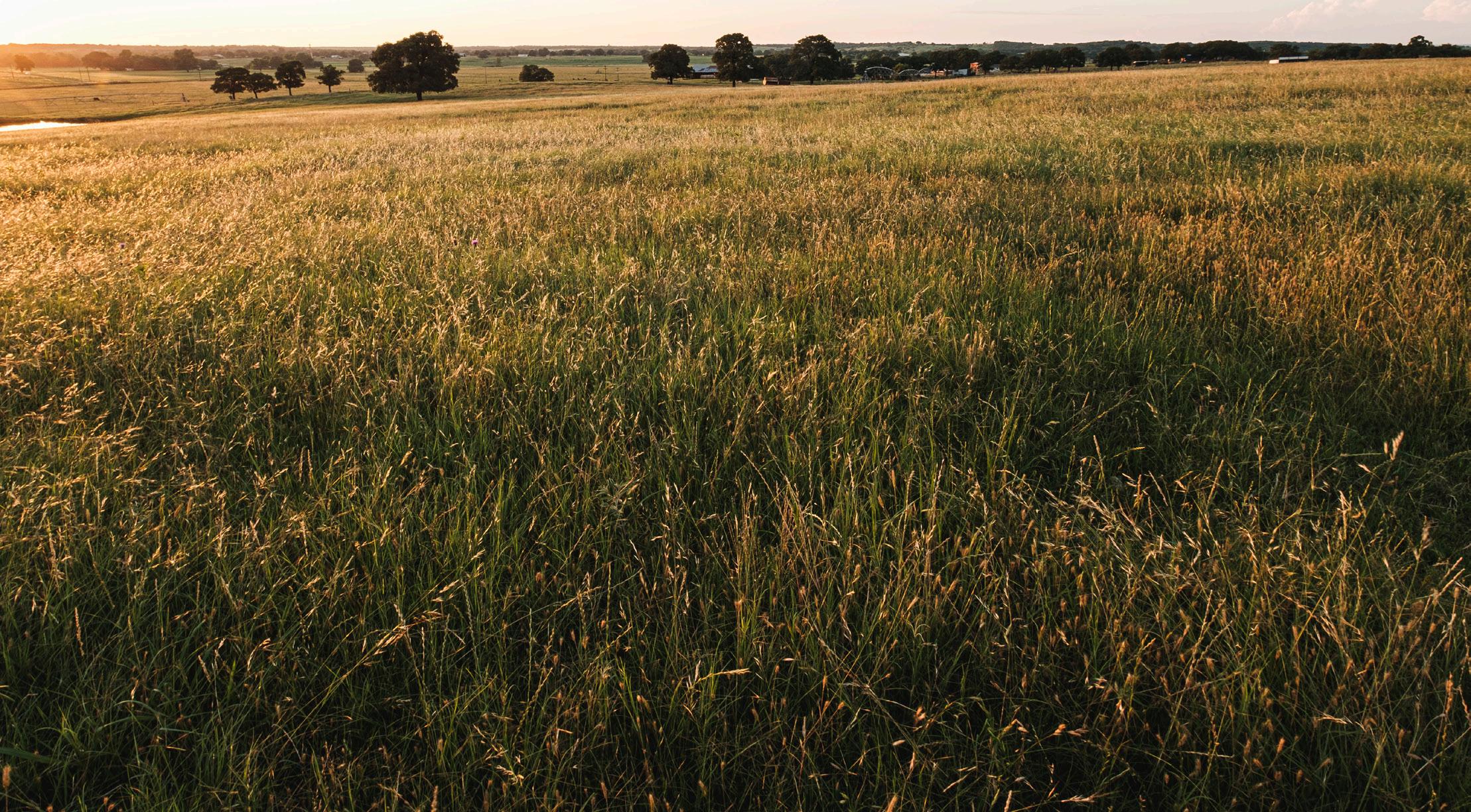
Source: Texas Agricultural Experiment Station
For cows, Carrell says the goal is to maintain the factory rather than fuel the race car.
Abney explains that a mature cow has a rumen capacity between 40 to 50 gallons. The faster forage breaks down in the rumen, the faster it moves through the animal. This provides more energy, protein and other nutrients because it’s more completely digested. “Once the rumen empties, she wants to do more grazing,” he says.
Generally, a faster rate of passage means more nutrients can run through and be absorbed by the digestive tract.
Research from the Texas Agricultural Experiment Station has shown that crude protein content differs among forage classes and declines as plant growth slows, while lignin content increases (see chart above). Hay and dormant pasture or rangeland are considered low-quality
forages due to a higher lignin content and a lower crude protein. According to an Oklahoma State University study, a typical range for protein concentration is 6% to 14% for Bermudagrass hay and 4% to 8% for prairie hay. Low-quality pasture or rangeland crude protein content is typically around 5% to 7%.
Given the rigidity in the stalk from the lignin content and the lower crude protein level, Abney says there often isn’t enough nitrogen for the rumen bugs to break down the fiber or carbohydrates. Digestion rate slows along with everything else, including intake and performance.
Abney says 9% crude protein is needed to meet a cow’s minimum requirements. Carrell prefers between 10% to 12% crude protein for optimal nutrition but says it depends upon the stage of lactation.
“There’s just nothing good that happens when a cow doesn’t have enough protein,” Abney stresses.
“the right way is the one that makes money.”
— Russell Carrell, Livestock Nutrition Center
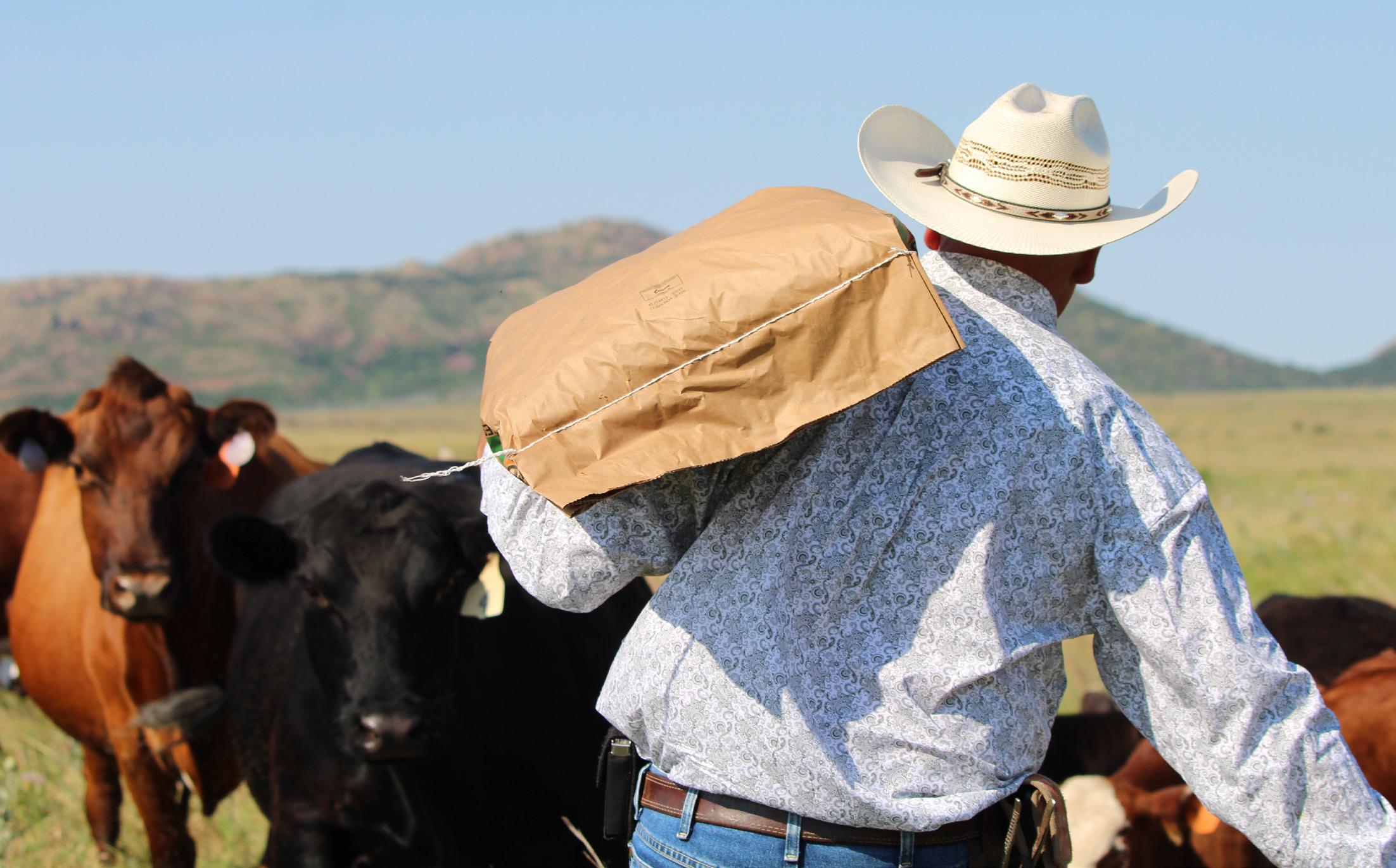
Before landing on an appropriate supplementation program, Abney says the most critical starting point for cow-calf producers is testing the forage.
It’s inexpensive and provides an informed baseline toward achieving optimal nutrition. He says most state land-grant universities will do a forage protein analysis for less than $20.
When testing once a month for a yearly total of about $240, Abney notes it wouldn’t take much feed-bill savings to cover the cost. The investment is also offset by overall performance improvements, including calves that wean heavier and cows that breed better.
Having the numbers is just the first step, though. Abney says cattle raisers should follow up with a nutritionist for advice tailored to their herd needs and then consistently implement the recommendations.
As for what to feed and how much, Texas A&M AgriLife Extension recommends 1 to 2 pounds per day of highprotein supplement for non-lactating cows on dormant forage, or up to 4 pounds a day if forage is extremely poor. After calving, those needs double.
Cubes and lick tubs are the most common delivery methods in Texas and Oklahoma. Producers can
conveniently put 3 to 5 pounds of cubes on the ground for each cow, with no waste and no infrastructure cost.
Most producers feed cubes three to five times a week, but Carrell points to research that shows feeding frequency can vary within a seven-day period as long as cows receive the total pounds required.
“We can split those total pounds of feed up over two, three, five or seven feedings and still have the same effect,” he says, emphasizing that is not the case for stocker cattle or replacement heifers. They require a more consistent type of frequency.
Another option is providing self-serve feed via a tub. Depending on whether it’s a cooked or pour tub, Carrell says daily intake will be 1 to 2 pounds per day. Cows can eat at will, and the tub has different limiting agents to keep them from overconsuming. They get the supplement of protein and energy they need, and then they can return back to grazing.
Those who put in the sweat equity on a nutrition program should also reassess annually, Abney recommends. New products or byproducts may become available, and commodity prices will always change.
“Why wouldn’t you go the extra mile to figure out what the best bang for your buck is?” Abney asks.

As for how producers can best monitor whether a program is successfully meeting the nutritional needs and goals of the herd, Carrell and Abney offer a few suggestions.
For stockers, Carrell recommends tracking average weights every 30 days, along with morbidity and mortality, to calculate daily gain and cost of gain. “It’s hard to call anything successful if it’s not making money,” he says.
When assessing cows, he is more subjective, asking whether the cow is bringing a calf to the weaning pen. Still, he says there are phenotypic signs that can indicate cow performance.
“If a cow is a body condition score 3 or 4, the chances of her being open are much greater than if she is a body condition score 5 or 6,” Carrell adds.
Abney says body condition score can be tough to monitor, even when producers see their cows often because changes happen subtly over time. He recommends using a phone or camera to take monthly pictures of cows that are easily identified. Review those pictures throughout the feeding season and year to see how their condition has changed.
“That’ll actually give you a really good barometer,” he says.
In both scenarios, scoring manure can provide a quick read on whether a nutrition program is working. According to Noble Research Institute, manure is scored on a 1 to 5 basis, with 1 being very fluid and 5 being extremely dry and segmented.
“If a cow has rock-hard manure, she’s probably eating a really low digestibility diet and isn’t getting all the nutrients she needs,” Carrell says.
In contrast, if the manure is looser, that doesn’t mean that she’s not getting all the stuff that she needs. It’s probably the opposite, he says. “She’s getting a really high-quality diet, and she’s getting good nutrition.” T C

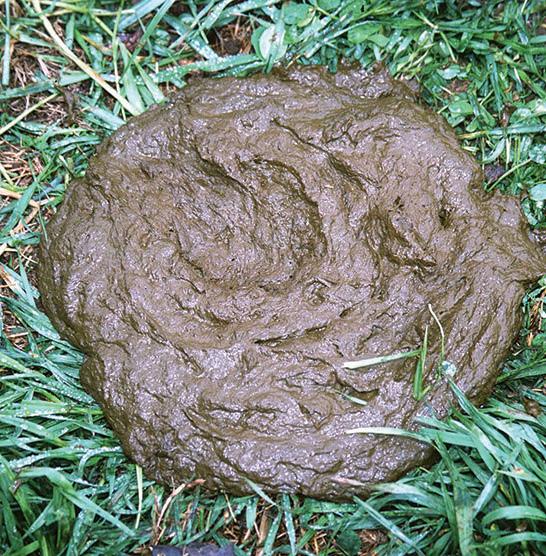
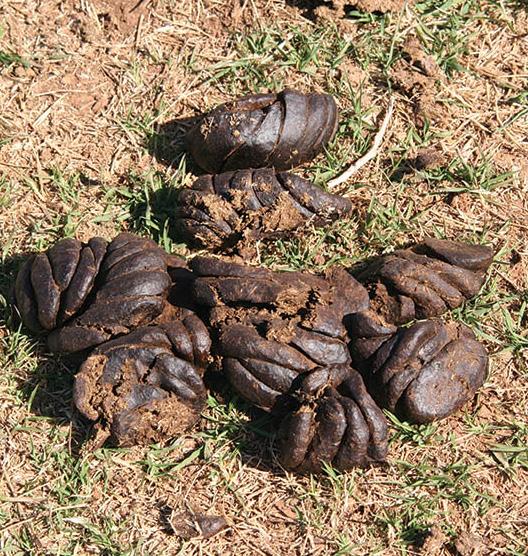
With the change in season and forages entering dormancy comes the need to pay closer attention to the supplementation strategy to ensure cows do not lose body condition.
Manure scoring, based on a score of 1 to 5, can indicate the quality of nutrition a cow has had in the past one to three days, while body condition score will indicate the nutritional history of the past several weeks to months. Cattle must be in good health for this to be accurate.
A manure score of 1 is of cream soup consistency. It can indicate a sick animal or a highly digestible ration that contains excess protein, carbohydrates or minerals, and low fiber. The addition of hay will slow down the rate of passage and thicken the manure.
Manure that will score a 2 doesn’t stack; the pat is usually less than 1-inch thick and will lack consistent form. This manure has the consistency of cake batter. Excess protein, carbohydrates and low fiber characterize the diets that produce this manure. Rate of passage is very high, and adding hay to this diet will slow it down to allow for more absorption in the intestinal tract.
Manure score 3 is ideal and will typically start to take on a normal pat form. The consistency will be similar to thick pancake batter. It will exhibit a slight divot in the middle. The pat will be deeper than a score 2 pat but will not stack. This diet is not lacking nutritionally, yet is not in excess for the cow and her physiological stage.
Score 4 manure is thick and starting to become somewhat deeper, yet is not stacking. The consistency of the manure will be equivalent to peanut butter. This manure indicates a lack of degradable rumen protein, excess low-quality fiber or not enough carbohydrates in the diet. Supplementation of additional protein with high rumen-degradable protein can increase total diet digestibility. Cottonseed meal and soybean meal are excellent sources of this type of protein.
The highest and least desirable score is 5. This manure is firm and stacks more than 2 inches in height. It will also have clearly defined segments and is very dry. This manure indicates the cow is eating a poorquality forage diet that is inadequate for protein and carbohydrates, and high in low-quality fiber. Rate of passage has slowed down to the point that excess water has been reabsorbed in the intestines. The rancher will need to consider additional supplementation to meet the cow’s protein and energy requirements.
Source: Robert Wells, Ph.D., former Noble Research Institute senior regenerative ranching advisor
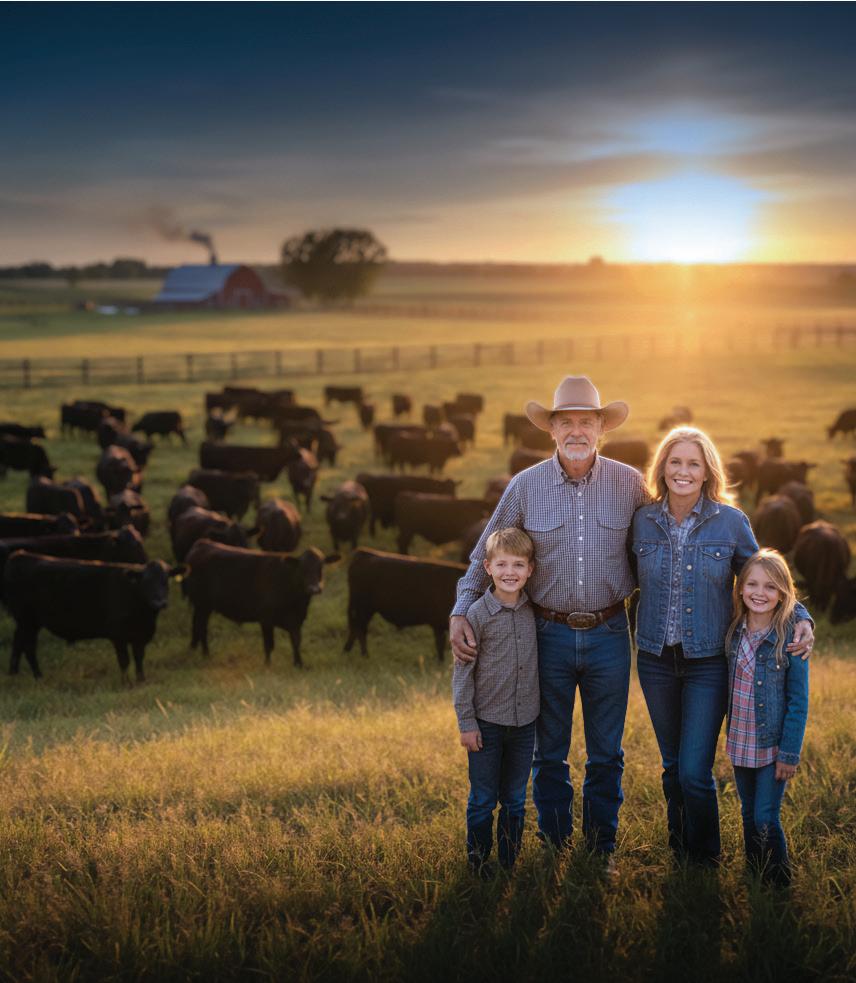
By Jena McRell
On a ranch near Seguin, Justin Ramirez says his young son Witten was quick to pick up on the full picture of beef cattle production.
“The cows eat the grass, then the cows get big and we take them to the sale barn,” says Ramirez when recounting his two-year-old’s description.
Easy enough, he quips. As it is well-known, the seemingly simple process of raising beef cattle is also one filled with countless variables and complexities along the way. Chief among them is developing a game plan for herd nutrition.
Ramirez, a Cargill beef technical services specialist, sees a wide range of strategies at play throughout his coverage territory in Central and South Texas, as well as on his family’s cattle operation. Together with his wife and two children, they raise Simmental and Simbrah show and commercial cattle.
Based on his experience, Ramirez says that small, targeted changes in nutrition can often transform herd health, reproduction and profitability.
“When you start making adjustments and are open minded in how we implement your program, it is invaluable,” says Ramirez, who has a master’s degree in ruminant nutrition from Texas A&M University.
Here are five considerations he offers, which are grounded in practical experience and research, to optimize minerals within a herd’s nutrition plan.
Collecting samples and quality testing for both forage and water are critically important. “The only way we know what direction to go is by knowing where we are at,” Ramirez says.
Testing different hay cuttings, purchased hay or pasture samples gives a baseline for core nutritional components including dry matter, energy, crude protein, fiber, vitamins and minerals. The nutritionist also urges cattle raisers to remember the number one nutrient for cattle is water.
A cornerstone of nutrition, water drives feed intake and mineral absorption. Poor water quality can sabotage even the best plans. Ramirez advises that producers test water annually and sample across multiple sources including ponds, troughs or wells.


by Jerod
When reviewing the water quality test results, Ramirez says to pay close attention to the iron and sulfur levels, which can both have a negative effect on copper. Copper is an essential trace mineral that contributes to beef cattle immune function and reproduction, along with other health benefits.
Iron and sulfur levels above 0.5 and 500 parts per million, respectively, are considered high and may negatively affect zinc and copper absorption.
Hard water with calcium carbonate levels greater than 120 parts per million exacerbates iron’s influence on zinc absorption, another important trace mineral in the beef cattle diet, which can affect immune function and health.
Understanding the water quality makeup allows for a more targeted and successful mineral program. “Now we know what type of mineral profile we need to implement into the program to help offset, so to speak, those antagonists,” he says.
On his ranch, Ramirez says the water supply is high in sulfur, often smelling like rotten eggs, and high in iron and calcium carbonate. He adjusted the mineral program accordingly, and his wife later noticed how hair coats improved; the animals looked more vibrant overall.
“That is a telltale sign of when copper is either deficient or the right copper source is not in place,” he says. “Those hair coats can look washed out or not as appealing, and copper and zinc are going to play a big role in that.”
If a mineral program is not fully aligned with water quality and forage test results, producers could be leaving money on the table. For example, when faced with highsulfur water, Ramirez says any mineral containing copper sulfate may not be fully used by the animal. Within that type of environment, he recommends cattle raisers look for basic copper chloride or organic copper — and that’s a different meaning of the word than one might think. It relates to the chemical makeup of a mineral bound to amino acids.
“You will want to look for a tag that says copper amino acid complex as a potential option, because that copper is now bound to an amino acid,” Ramirez explains. “That is where the mineral goes through what is called active transport, meaning the animal’s body is actively looking for those amino acids.”
Across all classes of cattle, macro-minerals including calcium, magnesium, phosphorus and potassium are needed in higher amounts than micro-minerals or trace minerals. The goal is for the available forage to provide the bulk of those minerals, but when that is not possible, a tailored supplement plan can make all the difference.
“When you look at a tag on a bag of mineral, those [macro-minerals] are going to be represented in percentages because they are required in higher amounts,” Ramirez says.

In addition to forage testing, sampling water sources is also essential to building a balanced and complete herd nutrition program. Photo by Rylee Crockett.




Macro and trace minerals and their roles in cattle performance.
Calcium: Bone growth, muscle contraction, milk production
Phosphorus: Bone development, energy metabolism, reproduction
Magnesium: Nerve and muscle function, prevention of grass tetany
Potassium: Fluid balance, nerve impulses, especially important in young or growing cattle
Sodium & Chlorine: Maintain osmotic balance, nerve function
Sulfur: Important for rumen microbes and amino acid synthesis but can be toxic if overfed
Note: Typically measured in percentages of the diet.
Copper: Enzyme systems, reproduction, immune function, hair or wool pigmentation
Zinc: Hoof health, skin integrity, immune response, reproduction
Selenium: Antioxidant, immune system, prevention of white muscle disease
Manganese: Reproductive health, bone formation
Iron: Hemoglobin production (deficiencies rare in grazing cattle)
Cobalt: Energy metabolism and immune function; needed by rumen microbes to make Vitamin B12
Iodine: Thyroid function, metabolism
Note: Needed in parts per million, milligrams or kilograms.
The first line item Ramirez reviews when making a nutritional plan is the calcium-to-phosphorus ratio. On dry cows, the goal is 1.5:1 for calcium to phosphorus. For lactating females, that can double to 3:1.
“Some forages are going to be either a 1:1 ratio or they might even be inversed,” Ramirez says. “That gives you an idea of whether you are deficient in one or the other. Then the mineral is going to come in as a supplement and bridge the gap of what the forage is contributing towards their requirement.”
Because there are many variables at work, the nutritionist cautions against following inherited formulas or simply matching what others are doing.
An example of this is with buffelgrass, which might deliver more phosphorus than other types of grasses. In that case, the ideal mineral would have up to 16% calcium and 6% phosphorus.
Phosphorus is known to affect palatability, so Ramirez says it is important to tread carefully. Higher phosphorus levels generally lead to lower mineral consumption, especially if there is a lot of phosphorus already present in the environment.
For instance, in West Texas, there tends to be more calcium and less phosphorus than what is found in the southeastern side of the state, which experiences higher water salinity.
“Something I tend to see is producers not putting the appropriate mineral out and then, as a result, might not be getting the needed consumption,” Ramirez says.
Even a perfectly tailored mineral program will fail if cattle are not eating the necessary amount. Ramirez says oftentimes the thought process is that any mineral left behind means the herd’s requirements have already been met. That is not always the case.
“I can’t emphasize enough that we have to have a mineral that they are going to consume,” he says.
Whether delivered in blocks or tubs, loose mixes or fortified in feed, salt content is what attracts cattle to the mineral. If there is a 100% salt block sitting next to a 15% to 20% salt mineral in a feeder, it should come as no surprise which one the cattle will eat first.
“A salt block is essentially like a candy bowl out in the pasture,” Ramirez says. “They are going to go and lick that block because what is driving them there is the salt.”
While salt drives intake, too much can deter mineral consumption and leave cattle deficient. Coastal areas, for instance, are going to have higher salt content in the water and cattle might back off if the mineral contains too much. In these locations, Ramirez recommends minerals with around 7% to 8% salt to boost palatability, targeting 4 ounces per head daily.
Non-coastal areas typically have minerals ranging between 15% to 25% salt depending on water quality and average consumption. Cattle will consume roughly 0.005% to 0.01% of their body weight in salt daily.
Consumption can also be improved by proper placement. Putting out mineral near water or shaded
loafing areas offers added convenience for the herd. Ramirez advises cattle raisers to monitor intake, especially as pastures dry out or green up, and adjust as needed to ensure the herd receives the needed nutrition.
In addition to visually appraising cattle and monitoring body condition scores, understanding general herd trends can provide valuable insight into how a mineral program is working.
“Have we had any concerns with reproduction, growth and development, female cycling or herd health?” Ramirez asks. “All of those are components that stem from mineral quality. And that’s generally where we can make a lot of ground if somebody doesn’t have the right mineral in place.”
While on ranch visits, he often poses questions about calf health, fertility rates and overall cost of gain. Understanding the larger picture helps inform where nutrition strategy adjustments might prove to be beneficial.
Modern tools like Cargill’s Beef Max software and NeoSpectra, a handheld near-infrared device, also help take the guesswork out of nutrition. By inputting animal stage, weights, feed intake and forage data, producers can project gains, costs and estimated timelines.
“We’re able to scan forages and commodities onsite to balance diets in real time to see how long it’ll take this set of cattle to go from point A to point B. And what the cost is going to be,” Ramirez explains.
The software can also identify any mineral deficiencies within the herd. For example, zinc is a key trace mineral when it comes to epithelial tissue and immune response. That tissue acts as a barrier against pathogens and irritants such as dust. If a herd is experiencing respiratory issues, Ramirez says he would try a more effective form of zinc that is more bioavailable to the animal.
“Now we can start improving herd health simply from getting a better mineral in there,” he explains. “I’m trying to improve a lot of things for the customer that are going to save them not only money, but, more importantly, time because that is not something we can get back.”
Because the research, science and technology surrounding beef cattle production is ever-changing, Ramirez stresses the importance of working with others to achieve herd goals.
“I tell everyone, you and I are a team. I can only do as good of a job to help you as the information you provide,” he says. “The more transparent they
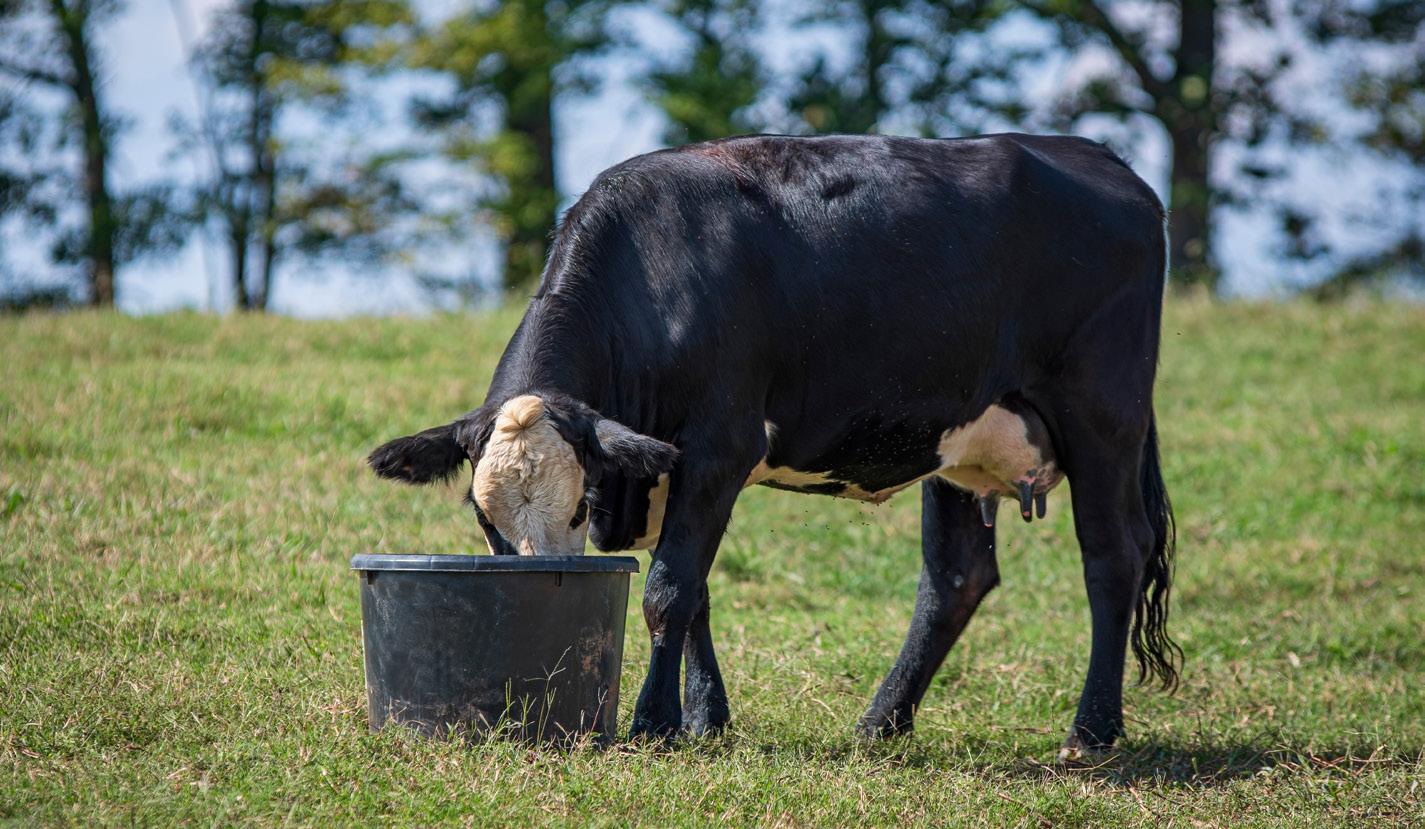
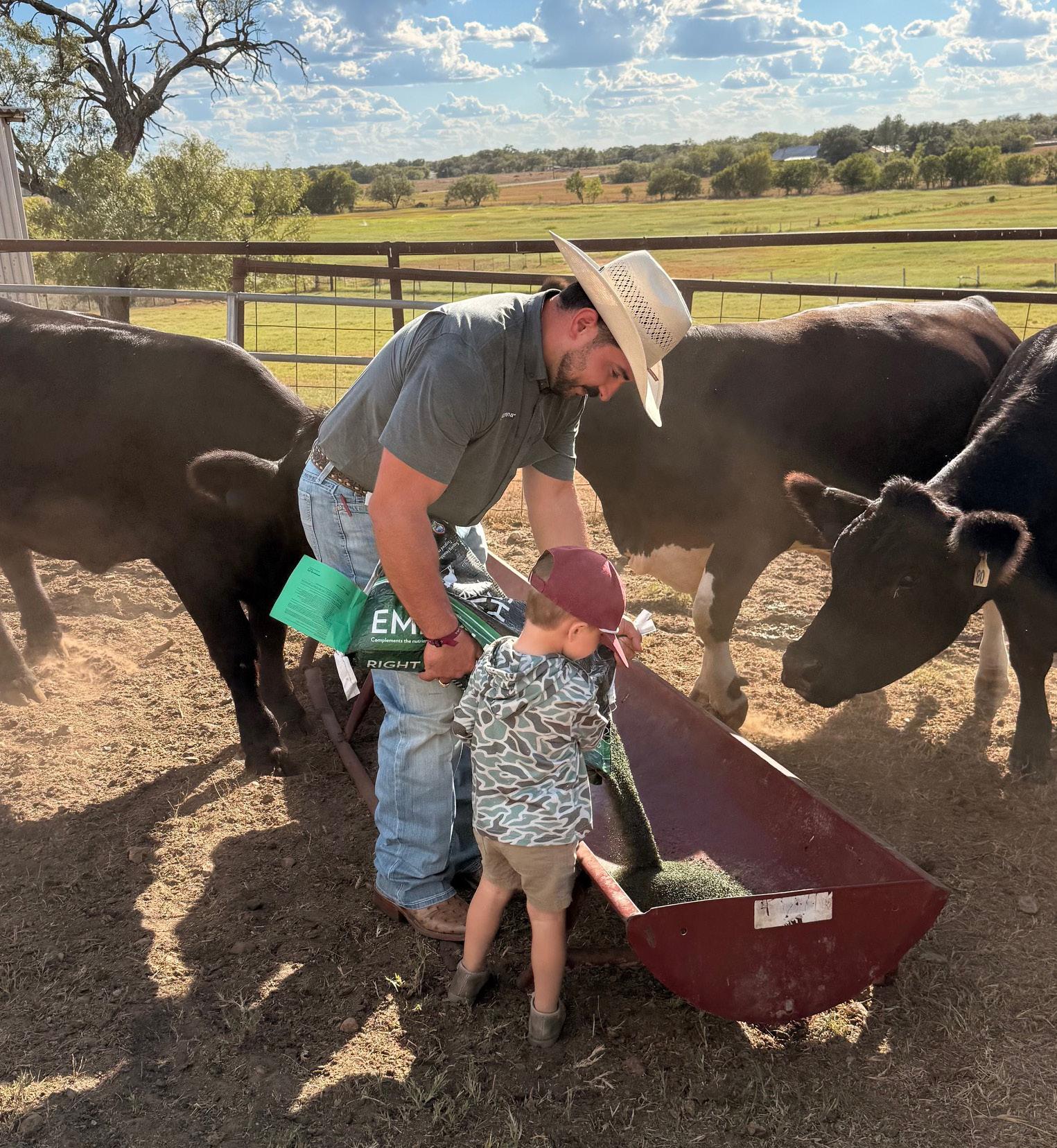
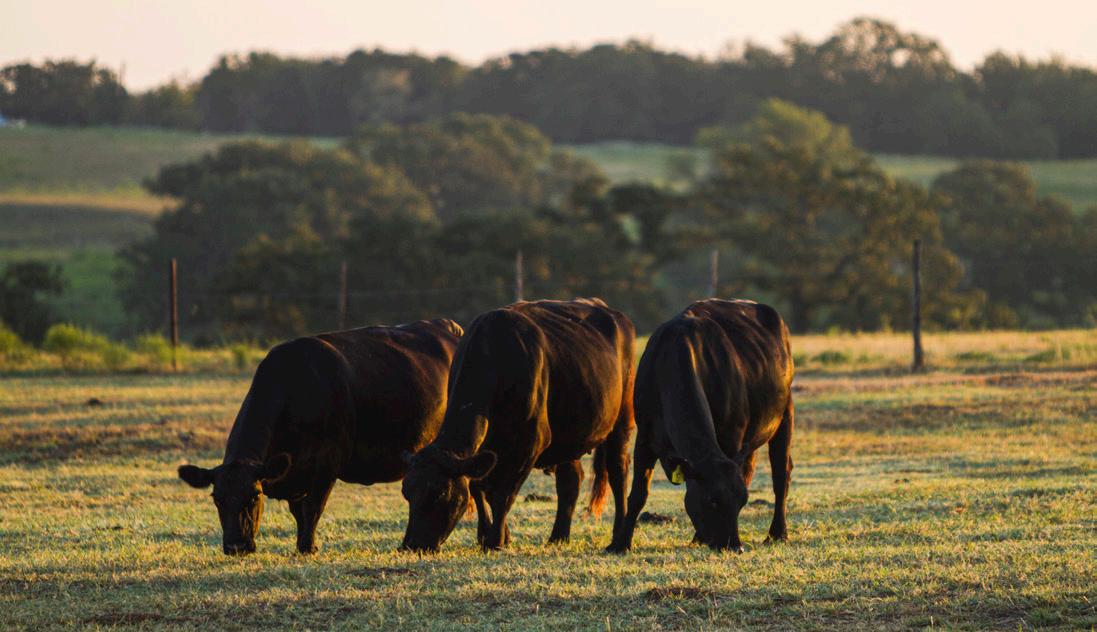
are in their program about what’s working and what’s not working, then I can make adjustments.”
Ramirez says there have been a lot of recent advancements in mineral technology. A wide range of additives can help tackle common herd struggles including fly control, mitigating heat stress, improving reproduction or colostrum quality. Additional additives like rumen modifiers or postbiotics allow cattle to fully maximize energy gained from available forage, generally gaining more pounds with fewer resources.
“I highly encourage people to work with a nutritionist, they’re going to be able to guide you in what direction you need to go in,” he says.
When all the elements of a nutrition program come together, from the initial testing to cattle consumption, Ramirez says the goal is keeping animal requirements in mind and addressing any variables that could cause potential issues, such as heat and cold stress that can increase requirements.
“We’ve built a diet where we are getting key trace minerals that are going to reduce sickness, improve fertility and help that embryo implant into the uterus,” he says. “We’re doing all these things by the book. Now it’s time to let those genetics come through.”
A recent success story Ramirez points to involves a stock contractor for roping calves. By adjusting their rations to include a higher protein, targeted energy diet with balanced organic minerals and rumen-modifying additives, the herd’s death loss improved from 60% to under 5%.
Once frequent doctoring is now a minimal occurrence as overall animal health has greatly improved. Ramirez recalls how the rancher was getting calls from his pharmaceutical representative asking if he was still in business because he hadn’t purchased medicine in quite some time.
“I truly believe this is God’s purpose for me,” Ramirez says. “This is their livelihood. This is what their whole life is built on. And when you’re able to help people like that, it’s the best feeling in the world.” T C
As the days grow shorter and temperatures dip, it is time to assess winter feeding plans and potential impacts on herd performance. Justin Ramirez, a Cargill beef technical services specialist, encourages producers to keep the following objectives in mind.
• Test Forage for Energy and Dry Matter: Don’t rely on total digestible nutrients, or TDN, alone. “I would emphasize getting an energy value,” he says. “Whether that’s net energy for maintenance, NEm, or net energy for gain, NEg, because that’s going to give you a more accurate measurement of the megacalories that are within that forage.” From there, it is a numbers game. Mature hay digests slowly, limiting intake, so test to ensure it meets the needed daily requirements. For a 1,200-pound cow, target 24 to 36 pounds of dry matter, or 2-3% body weight, respectively. If lush grass is 70% water, that animal’s going to have to eat 80 pounds of grass to hit that mark, which short pastures often can’t provide. Supplement with hay to add the scratch factor and ensure their bellies are full to maximize digestible energy.
• Separate by Stage or Age: Some groups may only need a loose mineral, while others on hay, without winter grazing like rye or wheat, might require protein or energy supplementation. “If they have the ability, I definitely recommend separating cattle based on either age or stage of production,” Ramirez says.
• Target Ideal Body Condition: Aim for a body condition score of 5 to 6 to boost reproduction for cows and heifers. “If we go from a body condition score 4 at 60% pregnancy rate to a body condition score 5, that goes up to 85%,” Ramirez says. For a 1,000-pound cow, research suggests 7.7% body weight, or 77 pounds, is one body condition score and that becomes our target for gain. A 1,000-pound dry female has an NEm of 7.57 daily megacalories. With hay at 45 megacalories per hundredweight, expect 1.5 pounds daily gain if consumption is 2-2.5% body weight, taking about two months to move from a body condition score 4 to 5. For faster results, an increase in daily energy will expedite the process.
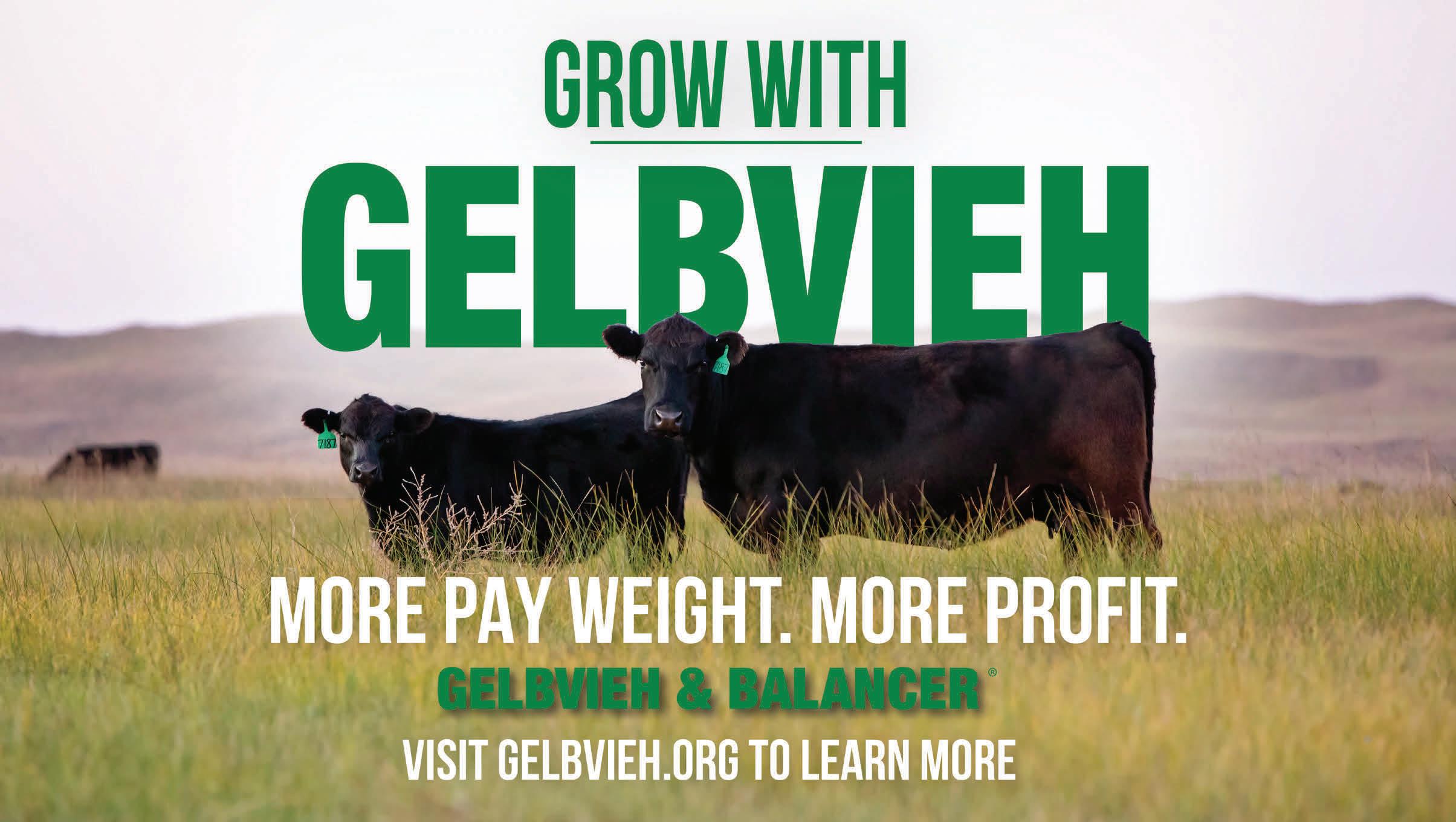

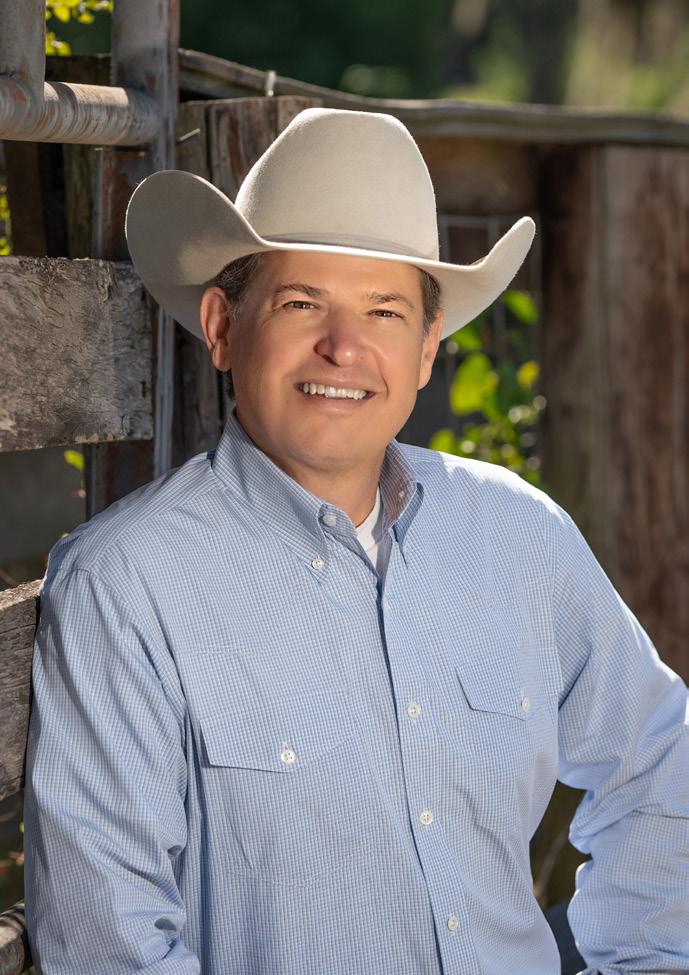
By Carl Ray Polk Jr. , Texas & Southwestern Cattle Raisers Association president
As we look toward the future of land and livestock in the Southwest, one thing remains clear: The strength of our association lies in the commitment and leadership of our members. From seasoned ranchers to new land stewards, your voice, insight and engagement are what keep our policy engine running.
In September, we gathered in Fort Worth for three full days of policy committee meetings — a cornerstone of our grassroots process.
These sessions brought together passionate, informed members who addressed pressing issues and helped shape future direction for the association. Policy committee discussions tackled a range of critical topics including cattle health, marketing, natural resources and property rights.
Here are a few highlights:
• The marketing and transportation committee introduced policy supporting Livestock Risk Protection Insurance and a program expansion to include breeding cows and bred heifers. This policy also calls for a comprehensive review of the program to ensure Livestock Risk Protection is based on wellreported pricing metrics, does not increase market volatility or negatively impact the futures market.
• The natural resources and wildlife committee updated the association’s watermasters policy to reaffirm superior water rights for domestic and livestock users. Changes to the policy included eliminating the number of petitions the Texas
Commission on Environmental Quality would need to create a watermaster and included support allowing the Texas Legislature to establish new watermasters on a case-by-case basis.
• The cattle health and well-being committee revised association policies related to foreign animal diseases and New World screwworm eradication, aligning these policies with the urgency of the situation and northern spread of the pest.
• The property rights and tax committee held indepth conversations about potential rule changes within the Railroad Commission of Texas for allocation wells and agreed the committee will revisit the need for action should rule changes occur.
The proposed policy changes were sent to the resolutions committee, which will review and vote before passing to the board of directors for final approval during the end-of-year meetings held later this month.
At the heart of our work is a simple truth: Without engaged members, Texas & Southwestern Cattle Raisers Association does not exist. If you have ever considered becoming more involved, now is the time.
This fall, we are issuing a call for leadership and an invitation for members to consider serving on one of our four policy committees for the 2026-2028 term.
Serving on a policy committee means more than attending meetings. It is a commitment to guiding the association’s advocacy efforts with real-world insight and industry knowledge.
Being part of a Texas & Southwestern Cattle Raisers Association policy committee involves:
• Attending in-person meetings twice a year;
• Testifying and joining legislative fly-ins to represent cattle raisers’ interests;
• Helping identify experts or speakers on topics your committee is reviewing; and
• Attending committee-sponsored educational sessions at Cattle Raisers Convention & Expo.
To be nominated, association members must be recommended by two current directors. Final appointments are made based on leadership needs, diversity of experience and commitment to participation.
The committee application period is open Nov. 1 through Dec. 31. Committee selections will be confirmed in February 2026, so keep an eye out for communication on how to apply or email tscra@tscra.org to learn more.
Author Elizabeth Andrew once said, “Volunteers do not necessarily have the time; they have the heart.” We know our landowners, ranchers and wildlife managers are some of the busiest. But we also know that you have the heart, drive and vision to shape the future of our association.
Serving on a committee is an opportunity to ensure your perspective is heard, your community’s challenges are understood and our policies reflect the realities on the ground. Texas & Southwestern Cattle Raisers Association committee members are the driving force behind the policies protecting landowner rights, promoting sound conservation and defending our industry’s integrity in Austin and Washington, D.C.
Thank you for your passion, service and dedication to our mission. Together, we will continue to protect and promote the values that matter most to you. T C
Hailing from Pattison in Waller County, Rep. Stan Kitzman currently serves District 85 in the Texas House of Representatives. Kitzman is a sixth-generation Texan and a descendent of Stephen F. Austin’s “Old Three Hundred,” who were among the original grantees of land from Mexico in early 1820’s Texas.
As a second-term legislator, Kitzman serves on the Texas Sunset Advisory Commission, House Appropriations Committee and Agriculture and Livestock Committee. He was appointed chair of the Appropriations Article III subcommittee, a Texas representative to the Energy Council and was elected by his peers to chair the bicameral Water Caucus.

trafficking of children through Texas and rural communities. He is passionate about protecting ranching for generations to come in Texas.
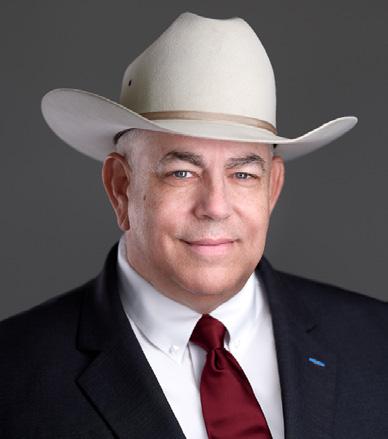
During the 89th Texas Legislative Session, Kitzman was an advocate for protecting Texas production agriculture, the future of Texas water and energy, agriculture Extension, and ending
One of his more recent wins for agriculture was the passage of House Bill 43. The bill creates the Texas Agricultural Finance Authority to provide funding for production agriculture, including pest and disease control research for threats like the New World screwworm.
Texas & Southwestern Cattle Raisers Association supported the inclusion of provisions for NWS research and proudly stood behind legislators like Kitzman, who recognize the vital role agriculture plays in Texas’ economy.
Kitzman is a small business owner, former Waller County Commissioner and a former public school teacher. He earned a bachelor’s degree in agricultural systems management from Texas A&M University. T C
New World screwworm detected in a heifer in Nuevo Leon, Mexico.
On Sept. 21, Mexico’s National Service of AgroAlimentary Health, Safety and Quality confirmed a positive detection of New World screwworm in Sabinas Hidalgo, located in Nuevo Leon, Mexico. According to the USDA Animal and Plant Health Inspection Service, this case was located less than 70 miles from the U.S.-Mexico border.
The NWS detection was found in an eight-month-old heifer recently moved to a certified feedlot from a region in Southern Mexico with known active NWS cases. USDA Animal and Plant Health Inspection Service continues to restrict movement of cattle, bison and horse imports from Mexico.
Texas Animal Health Commission is working closely with USDA to implement existing response plans to enforce pest monitoring at Texas’ southern border and into the state. In addition to extensive federal activities illustrated in Secretary of Agriculture Brooke Rollins’ fivepronged plan, the commission continues to collaborate with response partners and producers to educate, train, prepare and strategically respond to a possible incursion.
To support a swift response if NWS reaches Texas, producers located on the southern border and travelers from NWS-affected areas should closely monitor animals for signs and promptly report suspected cases of NWS.
NWS are larvae or maggots of the NWS fly, Cochliomyia hominivorax, that cause the painful condition NWS myiasis. NWS flies lay eggs in open wounds or orifices of live tissue.
These eggs hatch into dangerous parasitic larvae, and the maggots burrow or screw into flesh with sharp mouth hooks. The wound can become larger, and an infestation can often cause serious, deadly damage. NWS primarily infest livestock and wildlife, but can also affect other mammals, including humans and birds.
The parasite was last eradicated from the U.S. in 1966, with costly efforts by federal and state animal health officials, livestock producers and veterinary practitioners. Eradication efforts have continued in Central America, but the pest is considered endemic in Cuba, Haiti, the Dominican Republic and South America.
NWS infestations begin when a female NWS fly is attracted to the odor of a wound or opening of a live warm-blooded animal to lay eggs. These openings can include wounds as small as a tick bite, nasal or eye openings, umbilicus of a newborn, or genitalia. One NWS female fly can lay 200 to 300 eggs at a time and may lay up to 3,000 eggs during her lifespan.
Eggs hatch into larvae, or maggots, that burrow into a wound or other opening to feed. After feeding, larvae drop to the ground, burrow into the soil, and emerge as adult NWS flies. Adult NWS flies can fly long distances, and the movement of infested livestock or wildlife can lead to the spread of even longer distances.
Producers should monitor animals closely and often for signs associated with NWS and report suspicions to a veterinarian or Texas Animal Health Commission immediately. Signs of NWS myiasis may include:
• Irritated or depressed behavior;
• Loss of appetite;
• Head shaking;
• Smell of decaying flesh;
• Evidence of fly strike;
• Presence of fly larvae (maggots) in wounds; and
• Isolation from other animals or people.
Quick detection and reporting are essential to stopping the spread of NWS, if they get to Texas. If you suspect NWS in your livestock or domestic animals, contact Texas Animal Health Commission immediately and do not move your animals. A representative will advise you on current collection protocols for submitting suspicious maggots.
Producers, veterinarians, diagnostic laboratories, or anyone with suspicious livestock or domestic animals must make reports to a Texas Animal Health Commission region office or the 24-hour vet on-call line, 1-800-550-8242, within 24 hours of suspect or confirmed cases. If you suspect wildlife with NWS infestations, contact your local Texas Parks & Wildlife Department wildlife biologist.
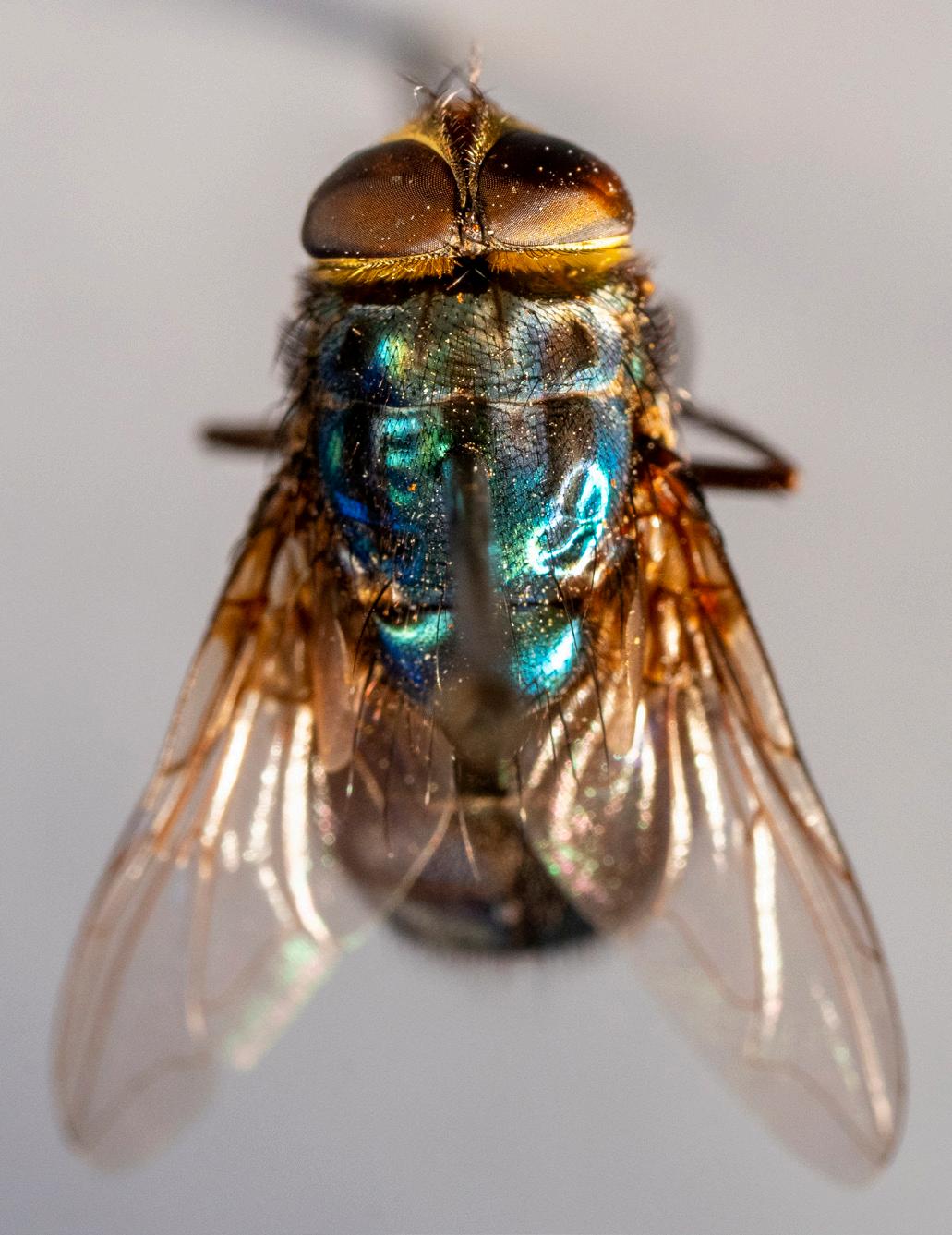
To avoid introduction of NWS, monitor pets and livestock closely for open wounds, and clean, treat and cover any wounds immediately. When traveling, especially in NWS-infested areas, ensure pets and vehicles are inspected for NWS flies and larvae before returning to the U.S.
Animals exhibiting signs of myiasis, or NWS infestation, and any potential secondary infection should be immediately treated with an appropriate method by a veterinarian. Left untreated, animals may die within one week from complications associated with infestation.
Eradication of NWS infestations can be accomplished through the sterile insect technique. Sterilized male flies are released to mate in an area with an established NWS population. Females, only mating once in their lifetime, then lay nonviable eggs. The population decreases without the addition of new larvae and dies off naturally over a few lifecycles. T C
Texas & Southwestern Cattle Raisers Association President Carl Ray Polk Jr. Sept. 22 released the following statement after USDA confirmed a New World screwworm case less than 70 miles from the U.S.-Mexico border.
“With the recent detection of New World screwworm just 70 miles south of Texas’ border, TSCRA remains actively engaged with USDA, Texas Animal Health Commission and Texas Parks & Wildlife Department to intensify surveillance, coordinate response efforts and prepare cattle raisers and landowners for any potential incursion.
“Since last year, TSCRA has supported timely, effective measures to protect the U.S. from a potential incursion of NWS, including increased production of sterile flies. The pest’s continued northward movement underscores the urgency of these efforts, and we thank all who have recognized the threat and contributed to U.S. preparedness. We continue to see unprecedented collaboration among our state and federal partners, and we have full confidence in their ability to implement measures that protect the health of U.S. livestock and wildlife while also ensuring the current speed of commerce.
“TSCRA is also supporting these efforts by equipping ranchers and landowners with the knowledge and tools to serve as the first line of defense inside our own borders. To date, we have hosted 12 educational programs teaching ranchers and landowners how to monitor their own herds, implement best management practices and report suspected cases of NWS. In addition, TSCRA has multiple representatives serving on the Texas New World Screwworm Response Team, established under the directive of Texas Governor Greg Abbott. TSCRA is also a founding member of the Screwworm Coalition of Texas where we are working to coordinate response, share resources and ensure ranchers and landowners are prepared should NWS reach our state.
“Now is the time to accelerate these efforts. TSCRA will continue to do our part, but we also call on all partners to fully implement and expedite USDA’s five-prong plan. Increasing domestic sterile fly production, limiting cattle movement from infested areas of Mexico and strengthening southern border surveillance must remain top priorities to protect the health of the U.S. livestock and wildlife.”
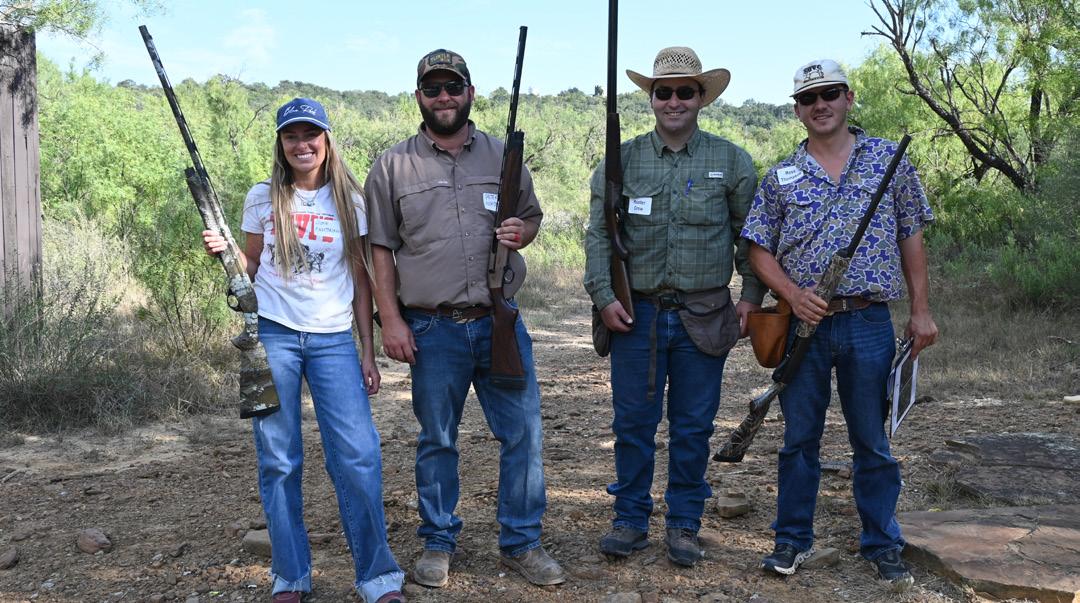
Texas & Southwestern Cattle Raisers Association held three days of policy committee meetings mid-September in Fort Worth, bringing together members to shape the future of the cattle industry.
Throughout the meetings, the association policy committees addressed a range of critical topics, including cattle health, marketing, natural resources and property rights. These discussions played a vital role in setting the association’s advocacy priorities for the coming year. Key highlights and next steps were detailed in this month’s Where We Stand column by Texas & Southwestern Cattle Raisers Association President Carl Ray Polk Jr.
At the conclusion of the fall committee meetings, young professionals came together at Greystone Castle in Mingus for the Young Cattle Raisers Skeet Shoot and Dinner, enjoying friendly competition and camaraderie.
Congratulations to Hunter Crow, who earned the title of this year’s skeet shoot champion.
Stephen Diebel, Texas & Southwestern Cattle Raisers Association first vice president, and Peyton Schumann, the association’s interim executive director of government relations, in early September participated in the first meeting of Gov. Greg Abbott’s New World Screwworm Response Team established in June.
Texas & Southwestern Cattle Raisers Association was invited to the table as an industry leader to provide


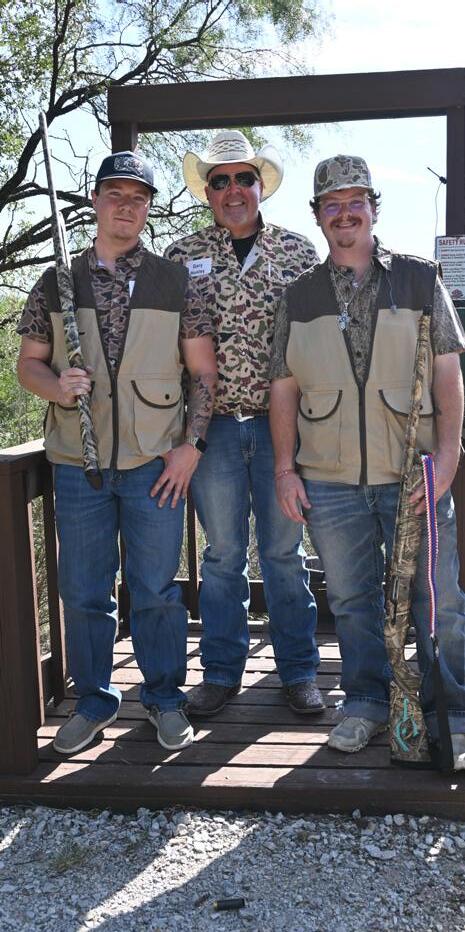
updates on the Screwworm Coalition of Texas and ensure the cattle industry’s voice is included in statewide response planning.
During the meeting, Diebel and Schumann emphasized the importance of early communication, transparency and clear response protocols to help protect livestock across the state. The task force will meet again in the coming months, and Texas & Southwestern Cattle Raisers Association remains committed to representing producers and supporting coordinated efforts to mitigate this growing threat.
Also in September, Schumann visited Washington, D.C. to meet with U.S. Rep. Monica De La Cruz’s staff to discuss New World screwworm and the new $750 million production facility in Hidalgo County that the Congresswoman helped secure.
On Sept. 3, Texas & Southwestern Cattle Raisers Association Special Rangers Kenny Murchison and Nathan Hale joined the inaugural Williamson County Sheriff’s Cattle Ranch Gathering, hosted by the Williamson County Sheriff’s Office.
The program featured guest speakers including Texas & Southwestern Cattle Raisers Association Second Vice President Dan Gattis; Murchison; Jason Cleere, of Texas A&M University; and Sheriff Matt Lindemann.
More than 300 members of the local cattle industry and community attended the event at the Williamson County


Expo Center in Taylor. Presentations covered timely topics such as livestock vaccination, the threat of New World screwworm, Texas & Southwestern Cattle Raisers Association operations and the value of membership.
Texas & Southwestern Cattle Raisers Association attended Bosque Ranch Live in September as a vendor, where they shared its mission and visited with attendees.
The festival provided a unique stage to highlight the deep ties between Texas & Southwestern Cattle Raisers Association and the storied Four Sixes Ranch. Samuel “Burk” Burnett, founder of the Four Sixes Ranch, was also one of the original 40 cattlemen who established Texas & Southwestern Cattle Raisers Association in 1877.
Texas & Southwestern Cattle Raisers Association has once again partnered with the Fort Worth Stock Show & Rodeo to offer all active association members two free commemorative pins per membership, which grant complimentary access to the entire 23-day run of the 2026 Fort Worth Stock Show & Rodeo.
Visit tscra.org to claim FWSSR Ground Pins by Dec. 15.
Members are invited to attend the TSCRA Rodeo Roundup Party, Saturday, Jan. 17, from 4:30 p.m. to 6:30 p.m., in the Michelob Ultra Roadhouse. There will be food, entertainment, and TSCRA pins will be available to pick up.
Texas & Southwestern Cattle Raisers Association has opened the application window for the 2026 Cattle Raisers Convention & Expo internships held March 27-29 in Fort Worth.
This internship program allows college students to gain experience and knowledge, while making connections with industry leaders. Students will build their communication and networking skills, acquaint themselves with a wide range of work departments, and get a behind-the-scenes look at hosting the largest agricultural event in the Southwest.
Convention internship applications are due Jan. 1 and available at tscra.org/employment.
Texas & Southwestern Cattle Raisers Association is accepting applications for its summer 2026 Gilly Riojas Memorial Internship Program. The association offers college students the opportunity to spend a semester interning in Fort Worth or Austin.
The internship program offers students the chance to broaden their network while collaborating with association personnel and industry partners. An internship with Texas & Southwestern Cattle Raisers Association allows students to develop skills in various departments such as administration, education, events, association marketing and more.
Applications for summer 2026 internships are due Jan. 1 and can be accessed at tscra.org/employment.
The Texas & Southwestern Cattle Raisers Association Leadership Development Foundation, a 501(c)(3) organization committed to future generations of land and livestock stewards and leaders, announced the application window for the TSCRA Leadership Development Foundation Working Grant Program is now open.
The program will distribute financial capital to business owners with a demonstrated interest in the beef value chain. Applications are open to entrepreneurs in Texas and Oklahoma including cow-calf operations, stockers, feeders, packing plants, large animal veterinary clinics and other industry segments. The TSCRA Leadership Development Foundation Working Grant Program was designed to support individuals establishing, operating or growing a beef business.
To be eligible for consideration for financial assistance, applicants must operate a business in an economically depressed or blighted area in Texas or Oklahoma and face disadvantages. Eligible applicants must also demonstrate the difficulty of obtaining conventional financing because of such disadvantages.
The online application will remain open until Dec. 31. Details about the TSCRA Leadership Development Working Grant Program, including the application and eligibility requirements, can be found at tscra.org/ leadership-development-foundation. T C


Join or renew your membership today.
Member benefits include the support of TSCRA Special Rangers, government relations advocacy, educational programs, networking and social events, member-only discounts, The Cattleman magazine and phone app, and insurance services.

To learn more about membership, scan the code above or visit TSCRA.org.
Companies whose values and mission align with Texas & Southwestern Cattle Raisers Association are invited to join the organization and engage directly with our 28,000+ members. As a TSCRA Business Partner Member, your company will be part of a community that shares a commitment to advancing the cattle industry and its future.
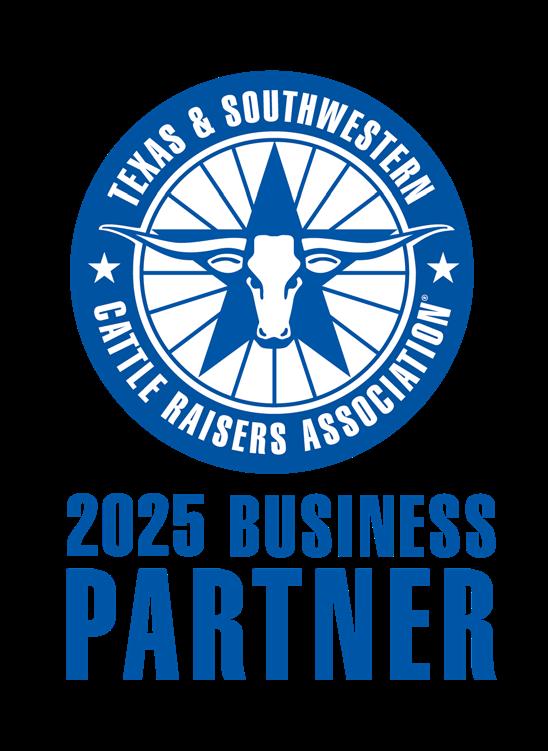




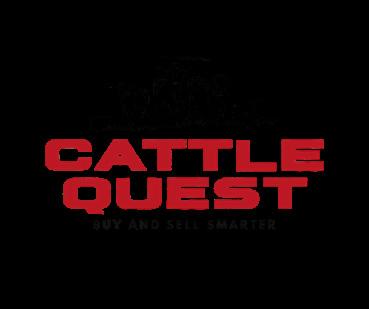
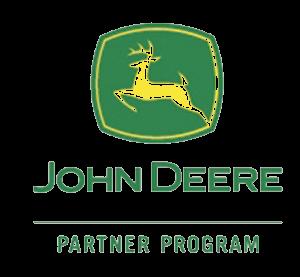
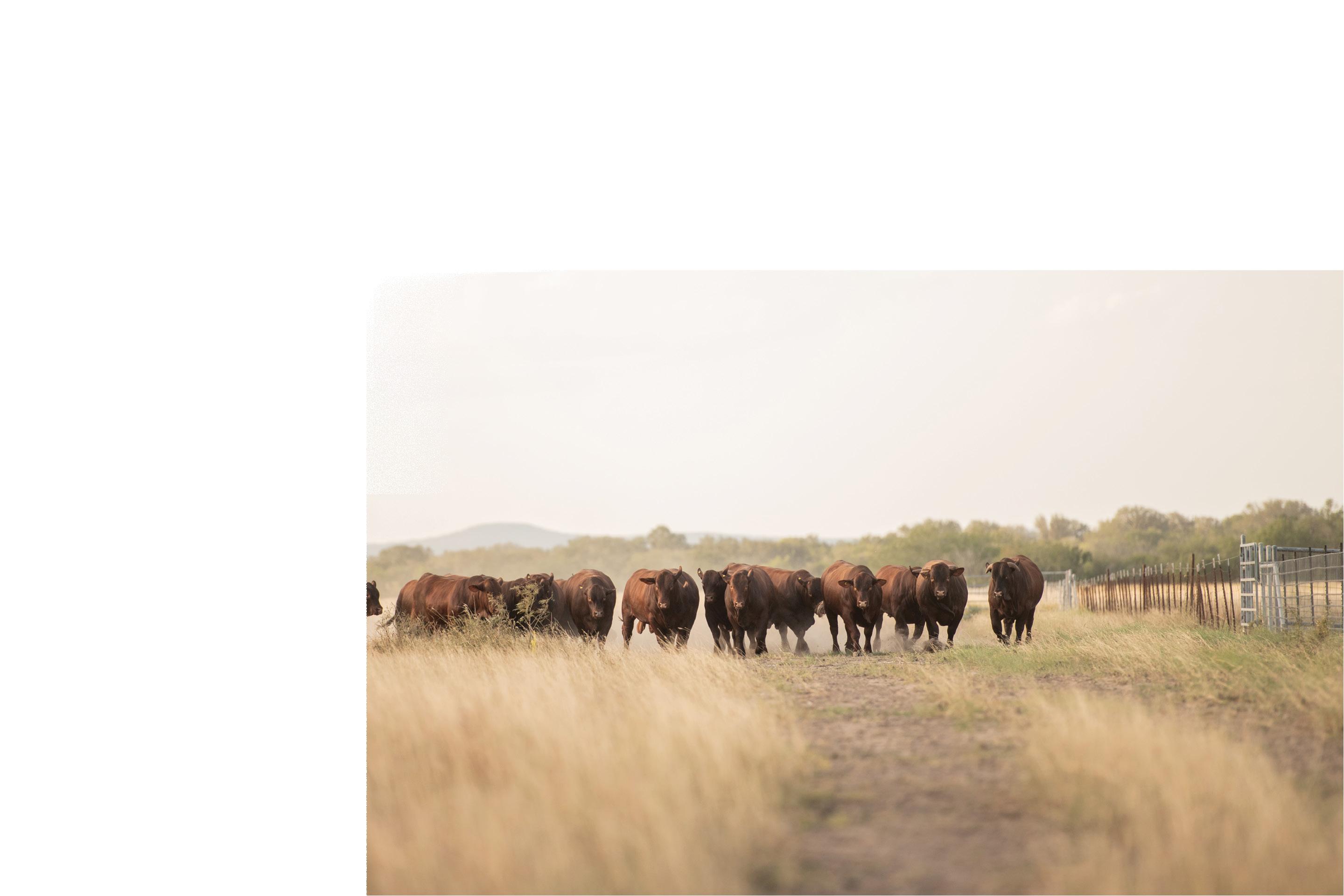
30% OFF at Cabela's and Bass Pro Shop 10% OFF CattleMax Software 15% OFF Ranchbot products John Deere Rewards upgrade

On Sept. 9, National Cattlemen’s Beef Association welcomed the release of the Make America Healthy Again Commission’s second report. In May, the commission’s first report highlighted the positive role beef plays in a healthy diet. Now, the second report expanded on the benefits of high-quality protein like beef and the critical role cattle producers play in helping make America healthy again.
“From every angle, it is tough to beat American beef. Our farmers and ranchers raise the best beef in the world, providing a healthy, fresh protein option to millions of families every day,” said National Cattlemen’s Beef Association President Buck Wehrbein. “We responsibly steward millions of acres of land, water and wildlife habitat, including some of America’s most cherished landscapes and species. We pump lifeblood into the local economies of tens of thousands of communities across the rural American heartland. No matter how you look at it, American beef is the perfect fit for the MAHA Commission’s goals.”
The second report takes a holistic approach to the health, safety and security of the food supply chain. Highlights from the report include:
• Stressing the need for a diet high in whole, unprocessed foods like fresh beef, fruits and vegetables to support Americans’ health at every age and stage of life.
• Encouraging innovation that helps American agriculture stay at the leading edge of safe, healthy and nutritious food production.
• Jumpstarting gold-standard scientific research to answer targeted questions on the connection between diet, other lifestyle choices and health outcomes.
• Exploring ways to boost consumption of fresh, healthy, locally produced foods.
“This report confirms the science-based recommendation that making America healthy again has to start with safe, nutritious, fresh, whole-ingredient and American beef hits the target on all of the above,”
said National Cattlemen’s Beef Association Senior Vice President of Government Affairs Ethan Lane. “As this administration has pointed out before, beef is the crown jewel of American agriculture. Millions of American families build a healthy plate around our product every week. We will continue working with President Trump’s administration to keep the supply chain moving and keep the safest, highest quality beef in the world on grocery store shelves.”
Years of peer-reviewed research, including clinical trials — the gold-standard for research — have proven that beef plays a key role in a healthy, balanced diet for Americans of all ages. A single 3-ounce serving of lean beef provides half of Americans’ daily protein needs with 10 essential nutrients, in fewer than 170 calories.
To receive the same amount of protein from most plant sources, one would have to eat at least twice as many calories. The nutrients in beef, including protein, iron, zinc and B vitamins, are critical for strengthening muscle, fueling a healthy metabolism, supporting cognitive development and ensuring healthy living. As a source of nourishment and satisfaction in balanced diets, beef can help build and sustain healthy eating habits from childhood through adulthood.
Market access obstacles continued to weigh heavily on exports of U.S. beef, with the vast majority of plants still ineligible to ship to China, at time of press. That’s according to data released by USDA and compiled by the U.S. Meat Export Federation.
U.S. beef performed very well in July in leading market South Korea, as well as in the Caribbean, Central America, Chile, the Philippines and Africa. But with shipments to China nearly halted due to a lack of eligible plants, July beef exports were down 19% from a year ago to 89,579 metric tons, the lowest in five years. Export value declined 17% to $752.5 million, the lowest since January 2023.
From January through July, exports were 8% below last year in volume, at 691,800 metric tons, and down 7.5% in value, at $5.67 billion.
The decline was largely due to China’s failure to renew registrations for the vast majority of U.S. beef plants and cold storage facilities, most of which expired in March. China has also suspended 11 U.S. beef facilities since June.
“The plant registration impasse with China unfortunately drags on, and it has left U.S. beef essentially shut out of the market after exporters worked through their eligible inventories,” said U.S. Meat Export Federation President and CEO Dan Halstrom. “Demand
elsewhere has remained fairly resilient, even in the face of higher pricing, but restoring access to China is clearly the urgent priority. Export value and share of production exported declined in July, reflecting the loss of competing bids from Chinese buyers.”
Texas A&M AgriLife Research has received approval from the Texas A&M University System Board of Regents to begin designing a state-of-the-art research center for the Rio Grande Valley to address issues specific to local health and dietary needs, improved agricultural productivity for low-water environments and the biosecurity of food systems.
The new Texas A&M AgriLife Rio Grande Valley Research Center at McAllen, a roughly $53.5 million investment in the region, will occupy about 43,500 square feet on the Texas A&M University Higher Education Center at McAllen campus.
“Food security is national security, and the research at this facility will help ensure we keep Texas and the rest of the nation secure and healthy,” said Jeffrey W. Savell, Ph.D., vice chancellor and dean for agriculture and life sciences. “This center will advance our land-grant mission to bring research, teaching, extension and service together to solve urgent challenges facing producers and communities — in the Rio Grande Valley and beyond.”
G. Cliff Lamb, director of AgriLife Research, emphasized the importance of delivering tangible results for South Texas. “The new research center will create a powerful platform for AgriLife Research and the Higher Education Center at McAllen to directly address the needs of the Rio Grande Valley. By bringing together world-class scientists, modern facilities and regional partnerships, we will deliver practical, science-based solutions for agriculture, health and food security across South Texas.”
In addition, AgriLife Research and the Texas A&M University Higher Education Center at McAllen are further partnering to create student-centered spaces that will support the campus’ continued enrollment growth.
“The new research center will strengthen Texas A&M’s presence in the Rio Grande Valley by pairing worldclass research with student-centered opportunities that address the region’s agricultural, health and workforce needs,” said Ernie Aliseda, associate vice president and chief operating officer of the Higher Education Center at McAllen.
The facility design will include flexible infrastructure to respond to rapidly evolving agricultural and public health challenges. The Board of Regents will review the project
for construction approval following completion of the design phase.
Planned features include the following: modern laboratories, procedure rooms and shared laboratory support space; clinical research support facilities that incorporate best practices in design; sample-based screening capabilities to provide regional lab services related to food system biosecurity; and a fabrication center for developing and prototyping sensors and controls to enhance food system safety.
On Sept. 15, McDonald’s USA unveiled its largest investment in regenerative agriculture to date with the launch of the Grassland Resilience and Conservation Initiative, along with the National Fish and Wildlife Foundation, USDA’s Natural Resources Conservation Service, as well as key McDonald’s U.S. suppliers.
This initiative will invest more than $200 million throughout the next seven years to help promote and accelerate regenerative grazing practices, habitat restoration, water and wildlife conservation on cattle ranches spanning 4 million acres across up to 38 states.
Through the Grassland Resilience and Conservation Initiative, participating ranchers will have the opportunity to leverage tools and resources to help them improve wildlife habitats, conserve water and enhance soil health. McDonald’s USA also believes that this initiative will help boost its U.S. supply chain resilience, by providing participating ranchers economic returns such as incentive payments.
Certain McDonald’s USA suppliers, including Cargill, Golden State Foods, Lopez Foods, OSI and the Coca-Cola Company have elected to provide funds to the National Fish and Wildlife Foundation alongside McDonald’s USA. The foundation will independently award competitive grants to organizations that will assist participating ranchers in adopting practices that advance wildlife conservation and regenerative agriculture.
As part of the initiative, the National Fish and Wildlife Foundation will manage and invest conservation funding to advance ranchers in their voluntary conservation efforts. The foundation is collaborating with its conservation partners across America’s grasslands to identify impactful landscape-scale projects that will generate the greatest possible benefits to both wildlife populations and the productivity of vital U.S. ranch lands.
The first round of competitive grant-making will culminate in the announcement of awards, expected in January 2026. T C
Ranching 101 webinar to explore the storyline of nutrition.
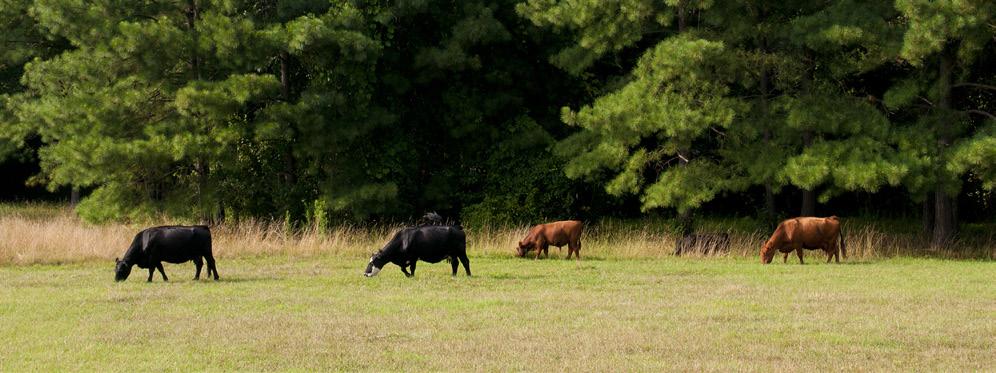
Join Texas & Southwestern Cattle Raisers
Association for the next Ranching 101 at 1 p.m. Tuesday, Nov. 18. During the hour-long Zoom webinar, participants will learn how soil health, forage quality and smart supplementation practices work together to support herd performance, reduce costs and build long-term ranch sustainability.
Cattle nutrition starts with healthy soils that grow quality forages. From soil health to plant diversity, each step plays a role in meeting livestock needs throughout the year. The upcoming Ranching 101 webinar will connect the dots from forage availability to supplementation strategies, allowing for more informed decisions that improve herd productivity and manage costs.
Understanding the full nutrition chain allows cattle raisers to build a stronger foundation for both the cattle herd and entire operation.
Ranching 101 webinars provide participants with practical, sound guidance on the tools and equipment needed to get started in ranching or land ownership. The webinars are available online on the third Tuesday of every month.
Registration is complimentary for any Texas & Southwestern Cattle Raisers Association member. Visit tscra.org to learn more. T C




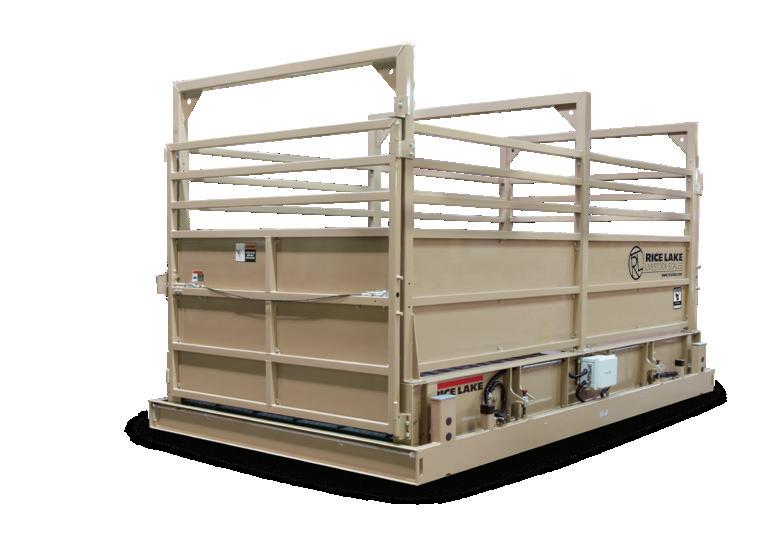
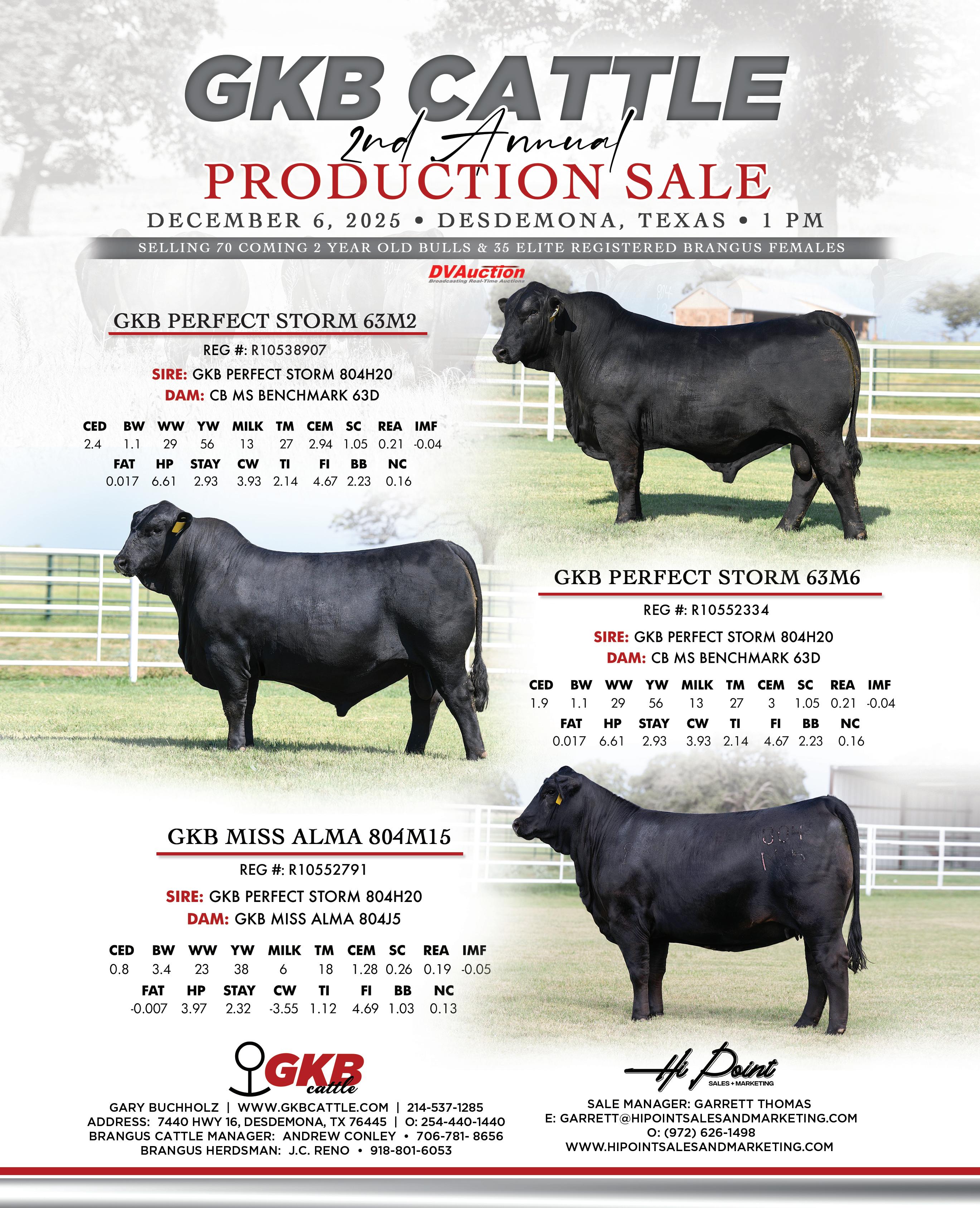
Texas & Southwestern Cattle Raisers Association District 24 Special Ranger Nathan Hale, with support of fellow Special Ranger Robert Fields of District 25, successfully recovered six stolen horses across three separate theft cases in Jackson and the surrounding counties. The unrelated cases led to the arrests of Jackson County residents Elizabeth Jameson and Hayden Morton for theft of livestock.
Hale was contacted July 31 by the City of Ganado Police Chief, who had received a report of three stolen horses and requested Texas & Southwestern Cattle Raisers Association assistance in an investigation. The City of Ganado Police Department posted about the theft on Facebook. From the post, a Texas & Southwestern Cattle Raisers Association member recognized the horses and
contacted Hale, leading him to their location in Victoria County. Working in close partnership with the Ganado Police Department and the Jackson County Sheriff’s Office, Hale confirmed the recovery of the three horses.
Jameson was arrested Aug. 6 on felony livestock theft charges and later released on bond.
In a separate investigation, Hale was contacted by the Jackson County Sheriff’s Office after deputies received a complaint of a stolen horse. A responding deputy provided Hale with information on a possible suspect and a phone number connected to the case. Using phone records and additional investigative leads, Hale and Fields located and recovered the stolen horse in Brazoria County.
Morton was taken into custody Aug. 27 after an arrest warrant was issued for theft of livestock. Morton was released on bond Aug. 28.
Hale and Fields’ investigation revealed Morton had ties to another horse theft, and an investigation remains ongoing in DeWitt County. The two stolen horses in this case have since been recovered, and warrants are pending.
Texas & Southwestern Cattle Raisers Association extends sincere appreciation to the Ganado Police Department, Jackson County Sheriff’s Office and members of the public who provided valuable tips and assistance. T C

Saturday,December6,2025
@10:00a.m.–SanSaba Booksareclosed!
Saturday,January24,2026
@10:00a.m.–SanSaba Consignmentswelcome!
Inconjunctionwithourregularsale.Bullswillsellat10a.m. Bullswillbefertilitytested,meettrichrequirements,and readytogotowork.
Thursday,December18,2025
@10:00a.m.–SanSaba Leachman’sTexasFallStabilizerBullSale–60StabilizerBulls Booksareclosed!
Thursday,January8,2026
@10:00a.m.–SanSaba FeaturingSchaeferFarmsAngusBulls
Thursday,February12,2026
@10:00a.m.–SanSaba FeaturingMartin-BruniBrangus&STSRanger RegisteredAngusBulls
HELD AT 11:00 a.m.
Monday – Mason Thursday – San Saba
Formoreinfoonabove salesoronlineviewing andbidding,pleasecall orvisitourwebsite.
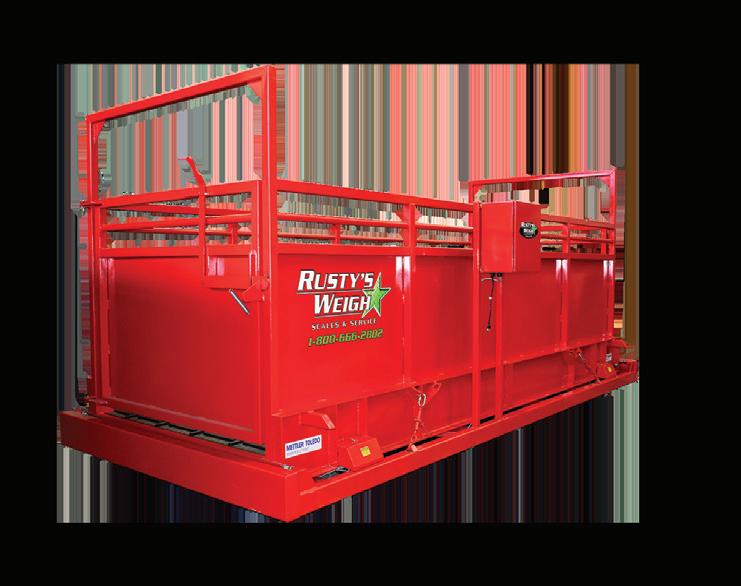






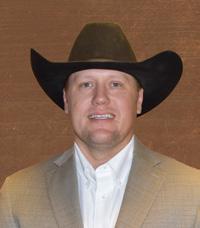
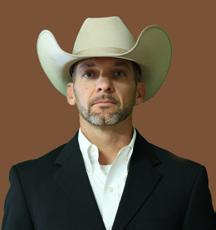
Matthew Turney, Manager
Cactus, TX
office: (806) 966-5151 cell: (806) 282-7077
Adam Gerrond, Manager
Ulysses, KS








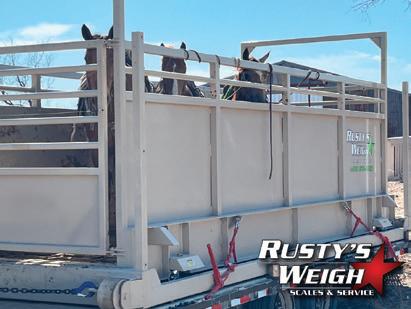
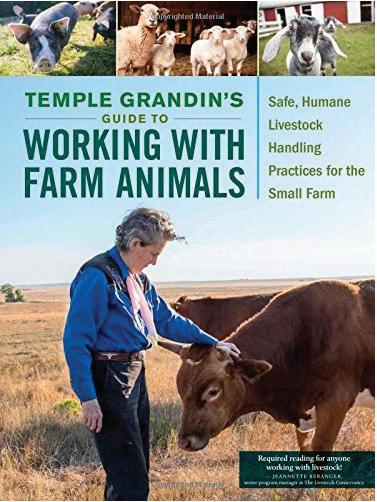

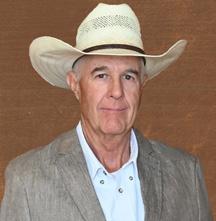
Jon Vanwey, Manager
Spearman, TX office: (806) 882-4251 cell: (719) 251-2381



Kacey Graham, Manager Hereford, TX office: (806) 364-0693 cell: (806) 316-8799
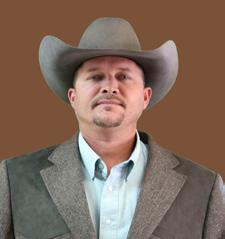
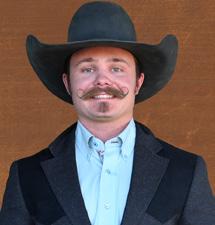
Stratford Feedyard
Pistol Audrain, Manager
Stratford, TX
office: (620) 356-2010 cell: (806) 390-9034 Frontier Feedyard
office: (806) 396-5501 cell: (806) 753-7133
Burlington Feedyard
Logan Hardin, Manager
Burlington, CO office: (719) 346-8532 cell: (620) 575-6702

Rusty Jackson, Manager
Hale Center, TX office: (806) 879-2104 cell: (806) 773-9457 Southwest Feedyard

Ulysses Feedyard
Adam Gerrond, Manager
Ulysses, KS office: (620) 356-1750 cell: (806) 390-9034
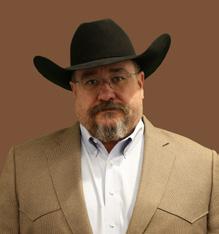
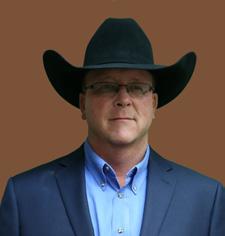
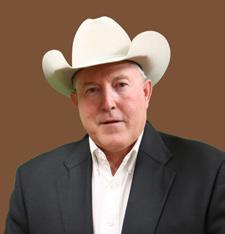
Wolf Creek Feedyard
Keith Brinson, Manager
Perryton, TX
office: (806) 435-5697
cell: (806) 282-7588
Wrangler Feedyard
Randy Shields, Manager
Tulia, TX
office: (806) 583-2131 cell: (806) 290-0559
Syracuse Feedyard
Phil Moreman, Manager
Syracuse, KS
office: (620) 384-7431
cell: (806) 340-4790

Cow-calf pair missing in Collingsworth County.
Texas & Southwestern Cattle Raisers Association Special Ranger Chris Ward reports a cow-calf pair missing from a property off County Road 150 south of Samnorwood. The 4-year-old black baldie cow, which has since been recovered, has “MK connected” branded on her left hip, but her one-month-old, cream-colored calf remains missing. It was last seen July 22.
ATV stolen in Hartley County.
Ward also reports a 2022 Army green CFMOTO four-wheeler stolen from a property off FM 3138 in Hartley County. The four-wheeler’s VIN No. is LCELDZA0N6004073. It was last seen Aug. 15, midmorning and was discovered missing that evening. Anyone with information on these cases is urged to contact Ward at 806-205-0119.
Seven head of cattle missing in Washington County.
Texas & Southwestern Cattle Raisers Association Special Ranger Brent Mast reports seven head of cattle missing from a property off Highway 290 in Brenham. The missing livestock include a black bull, three registered black cows, one registered white cow, one black calf and one blackand-white faced calf. The registered cows are former show heifers. The missing cattle were last seen on Aug. 23. Anyone with information on this case is urged to contact Mast at 936-714-6619.
Jersey cow missing in Hardin County.
Texas & Southwestern Cattle Raiser’s Association Special Ranger Mike Boone reports a Jersey cow missing from a property off FM 421 in Kountze. The red-orange cow displays a bobbed tail with a lower crop on the left ear. She was discovered missing Sept. 5. Anyone with information is urged to contact Boone at 409-658-5725.
Front-end loader missing in Brazoria County.
Texas & Southwestern Cattle Raisers Association Special Ranger Nathan Hale reports a Kubota M6060HD front-
end loader stolen from a property off FM 1301 in West Columbia. On Aug. 10, suspect(s) cut the chain on the entrance gate to gain entry to the property to steal the loader.
Cattle stolen in Austin County.
Hale also reports nine cows and an Angus bull missing from a property off Ashorn Lane in Sealy. The cattle are branded with “AR” on their left hip and have an orange, Attalla’s Ranch ear tag printed with a number. They were last seen May 20.
Bull missing in Austin County.
The special ranger reports a white bull missing from a property off FM 2754 in Bellville. The 9-month-old bull is believed to have entered the Rocky Creek and Mill Creek bottoms. He was last seen July 8. Anyone with information on these cases is urged to contact Hale at 979-627-5823.
Black Angus bull missing in Lavaca County.
Texas & Southwestern Cattle Raisers Association Special Ranger Robert Fields reports a black Angus bull missing from a property off Highway 77 south in Hallettsville. The 3-year-old bull has “D bar d” below branded on his left hip with a No. 72 branded below or beside it. He was last seen Aug. 10. Anyone with information on this case is urged to contact Fields at 361-207-5207.
Angus yearling bulls missing in Menard County.
Texas & Southwestern Cattle Raisers Association Special Ranger Todd Jennings reports 12 black Angus yearling bulls missing from a property off Clear Creek Lane, west of Menard. The bulls weigh approximately 900-1,000 pounds and are branded with “mashed O over the numeral 5” on their left hip. They have a red ear tag and a swallow-fork in their left ear. They were last seen and accounted for Aug. 5. At time of press, nine out of the 12 missing bulls have been recovered.
Angus bull calves missing in McCulloch County.
Jennings also reports 18 head of Angus bull calves missing from a property in McCulloch County. The calves are 9 to 11 months old and weigh 700 to 800 pounds. The cattle have the following left ear tag numbers: 1W, 127, 128,131, 136, 605, 611, 622, 624, 631, 635, 641, 644, 651, 676, 688, 704 and 755. They have an under-bit and a fly tag in their right ear. None of the cattle are branded. They were last seen before the July 4 flood. Anyone with information about these cases is urged to contact Jennings at 830-997-7585. T C
TSCRA offers a cash reward for information leading to the arrest and/or grand jury indictment of individuals for theft of livestock or related property. Anonymity is guaranteed. To provide information, call the Operation Cow Thief tip line at 817-916-1775.
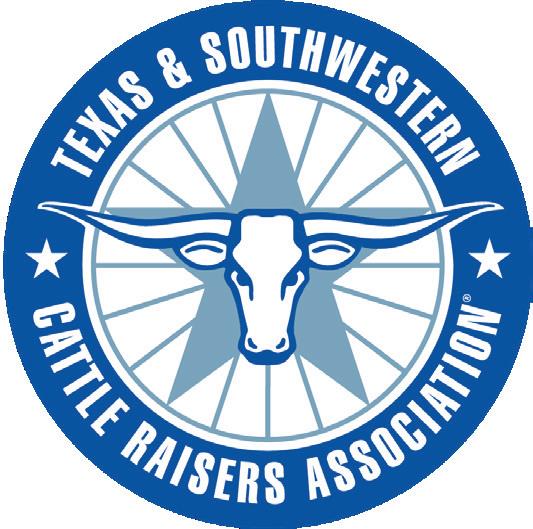
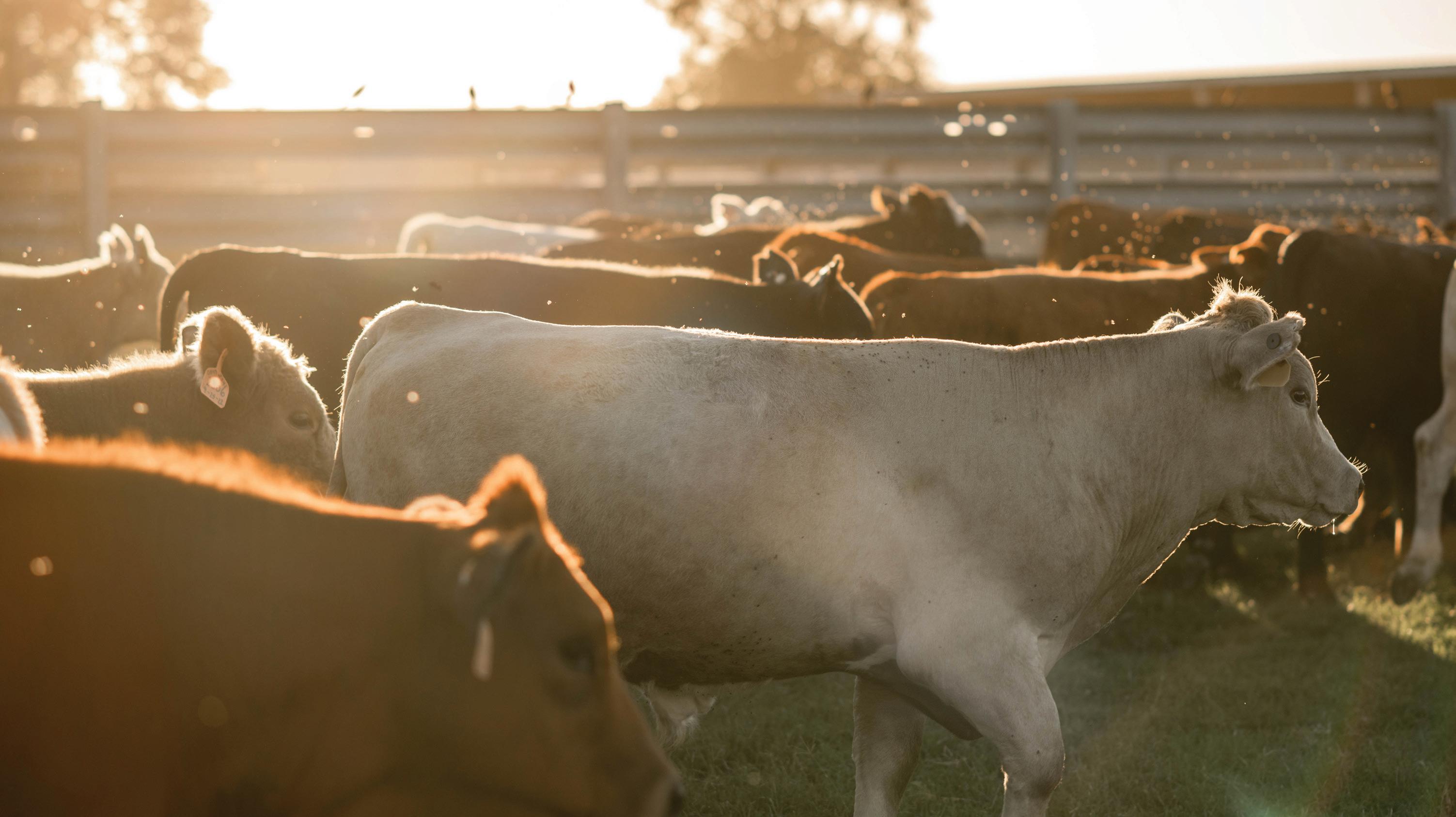

Protect your herd from the threat of New World screwworm. Learn identification, prevention and response strategies from veterinarians, producers and industry experts, and hear the latest updates from leading agencies.
This event is free to attend, and lunch will be provided. To ensure there’s plenty of food for everyone, please be sure to register.
Wednesday, November 12 10 AM - 2 PM



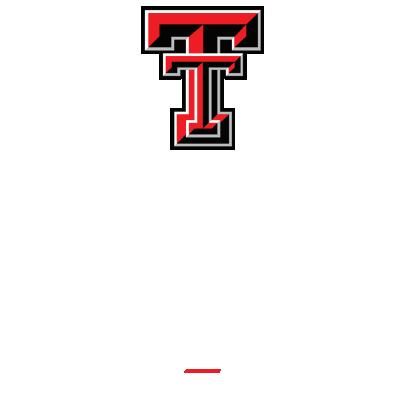
For more information or to register, email education@tscra.org or call 800-242-7820. Scan to Register

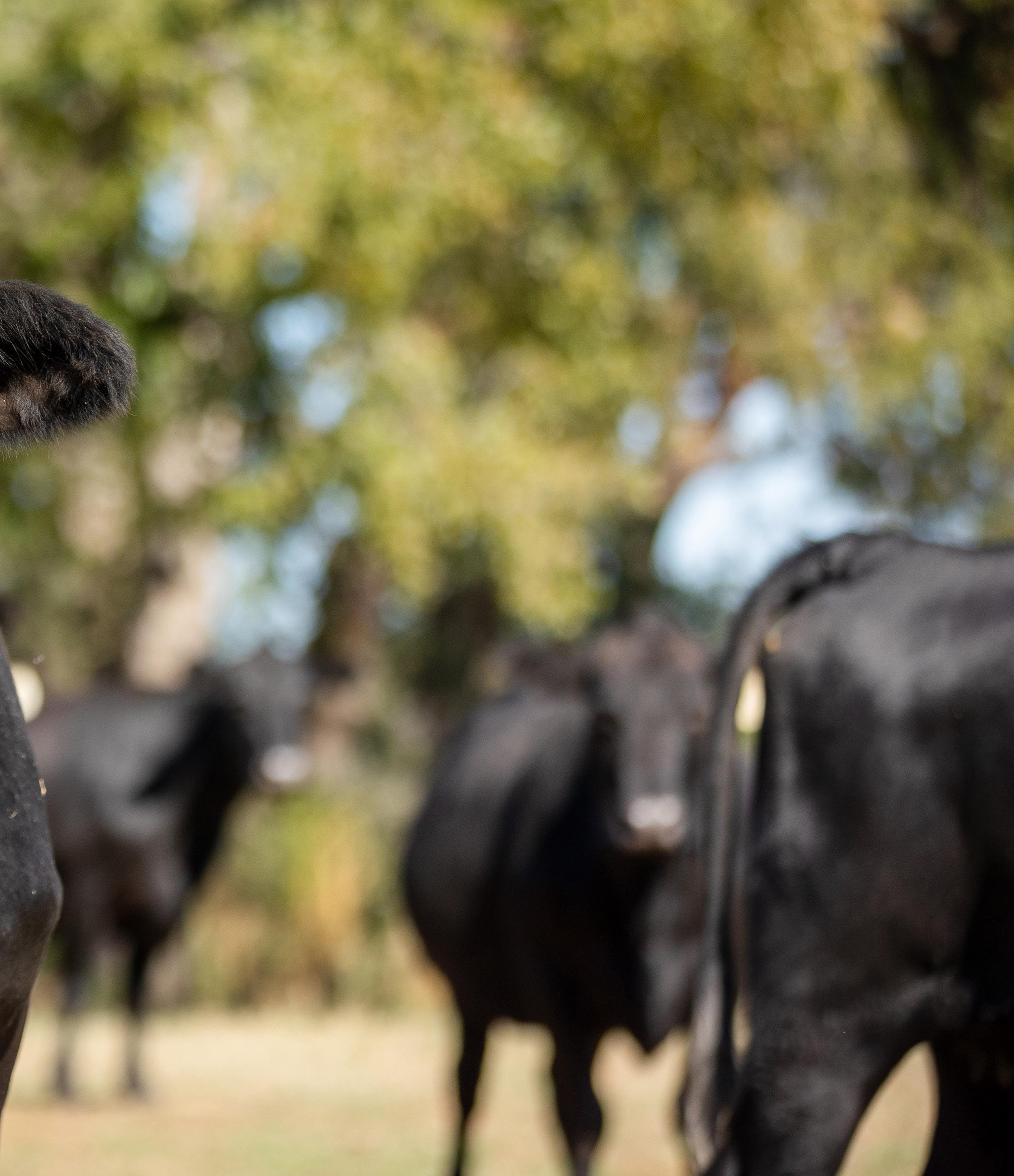
How forage analysis and supplementation strategies elevate cattle performance.
Story by Diane Meyer
Photos by Ben Humphrey
In the humid, wooded areas of Southeast Texas, Robert Barrett recalls tales from his grandfather and great-grandfather about cattle raising. In those days, ranchers would cut down trees so cattle could eat the moss, a practice that met the modest expectations of the time. What worked then would not meet today’s standards.
That reality shaped the message Barrett delivered during a Texas & Southwestern Cattle Raisers Association Ranching 101 webinar, presented by AgTrust Farm Credit. Cows are expected to produce a healthy calf each year, rebreed on schedule and perform at levels that earlier generations never required. Meeting those expectations, the speaker emphasized, begins with proper nutrition.
Barrett has spent more than 20 years with Producers Cooperative Association in Bryan, focusing primarily on cow-calf and stocker nutrition. He holds animal science and ruminant nutrition degrees from Texas A&M University in College Station and Amarillo.
The foundation of any supplement program, Barrett said, is forage analysis. “We’ve already got that hopefully in the barn or out in the pasture,” he said, “so this is already a cost that we put in. We want to make the best use out of it.”
Forage analysis provides a reliable picture of protein and energy levels, guiding whether supplementation is needed and in what amounts. Representative sampling is key to a well-rounded report. To do this, Barrett recommended cattle raisers use a probe on at least 10 to 15 bales from a lot, or truckload, to collect cores and submit them to a lab. He noted that near infrared spectroscopy, or NIR, is sometimes the most economical testing method, typically costing $15 to $20 per sample plus shipping.
Hay quality differences can have significant financial implications. Lower quality hay requires more supplementation to meet performance
requirements, often at a cost of $1.20 more per head per day, Barrett said. Over the course of a season, that adds up.
“That equates to another $100 per ton that we could spend on hay,” he explained. “What could we do with those $100 a ton? Could we fertilize better? Could we lose a little quantity to save some quality and bale that earlier in the season? There are several things that we could do rather than spending it on feed.”
In addition to forage analysis, the animals themselves provide solid feedback on nutrition. Body condition scoring remains one of the most practical tools available. Unlike body weight, which can fluctuate with gut fill, pregnancy or water intake, body condition score is a reliable and convenient way to assess fat cover.
“Think of her fat stores as a battery,” Barrett explained. “How much energy does she have left in her battery?”
Cows should enter calving in a body condition score of 5 to 6, giving them reserves to produce milk and still rebreed within the crucial 80-day window after calving. Heifers, with the added demand of growth, should be slightly higher. Too little condition can delay breeding, while too much wastes feed and increases calving risk.
Simply put, Barrett said, “I always like to say that the cows that are easy on the eyes are the ones that are doing the best.”
Producers can also monitor manure consistency to gauge diet balance and watch water quality for hidden problems such as nitrates or blue-green algae. These simple checks round out the picture of how well nutrition is supporting performance.
Ultimately, Barrett said, the forage base is the core of every operation. “Our forage base is our pantry,” he said. “Our job is to improve digestibility or maintain good digestibility on these forages so that our cows do well. Supplementing should only be used to correct nutrition deficiencies.”
Heading into the winter months, the first deficiency to appear is usually protein. Supplementing protein not only corrects a deficiency but also improves forage digestibility and overall animal performance.
Common protein sources are oilseed meals such as cottonseed or soybean, non-protein nitrogen sources like urea or byproducts such as distillers grains. Winter pasture itself can provide high protein and energy, though supplementation may be needed to stretch it.
Regardless of the source, Barrett’s rule of thumb is to provide about a pound of supplemental protein per cow each day. “I am a big fan of range cubes,” he said. “I like their flexibility, I like their handling characteristics. Generally speaking, cubes are a very good way to supplement cattle.”
Because protein supplementation is flexible, it does not have to be fed daily; two to three times per week can achieve the same results, he said.
Energy through carbohydrates and fat intake is important to uphold, as well. Beyond cubes, ranchers have options like range mixes and commodity blends to liquid feeds and tubs. Each has advantages and drawbacks related to intake, waste and cost, but the goal remains the same: meeting requirements without overspending.
Minerals and vitamins round out a supplementation program, once protein and energy needs are covered. “We need to make sure that we’ve got our protein and our energies taken care of and then we can bring in our mineral supplementation,” Barrett said.
Vitamin A is particularly important in winter, and key minerals such as calcium, magnesium, phosphorus, copper, zinc and manganese play essential roles in reproduction, calf health and immunity. Barrett warns of antagonists, like iron and sulfur, which can hinder absorption. Above all, minerals need to be palatable, otherwise they are useless in hitting targets.
“None of our energy pathways would work correctly if we didn’t have a good trace mineral supplementation program,” he said.
Protecting investments with high-quality feeders helps prevents waste and ensures cattle consume what they need. Additives such as ionophores, coccidiostats, antibiotics or fly control products can also be included if they fit the operation’s goals, and in some cases need veterinary oversight.
Nutrition, Barrett concluded, is not a place to cut corners. As cattle face winter conditions and dormant forages, a thoughtful supplementation program protects both performance and profitability. Feeding cows cake, in other words, is about giving animals what they need to meet expectations placed on them today. T C

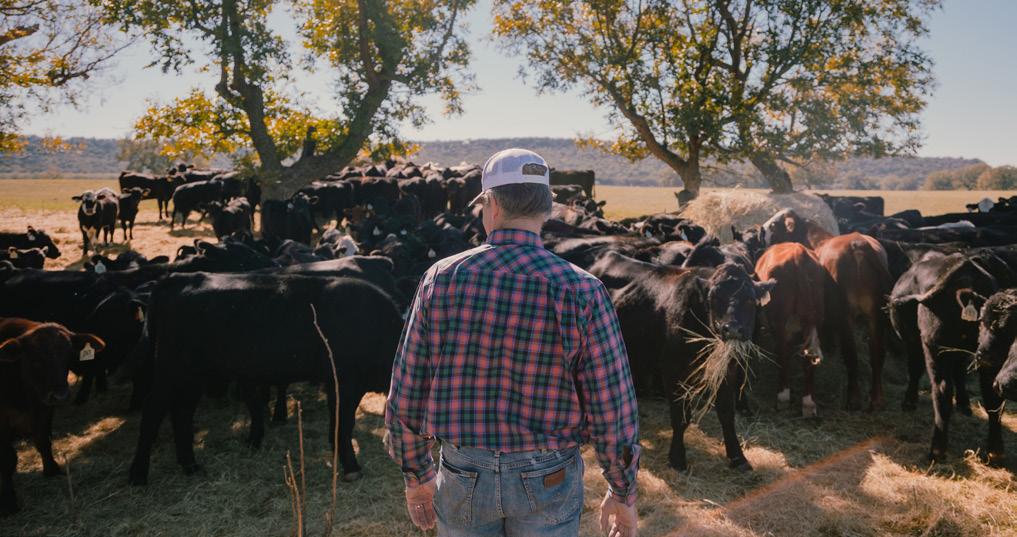
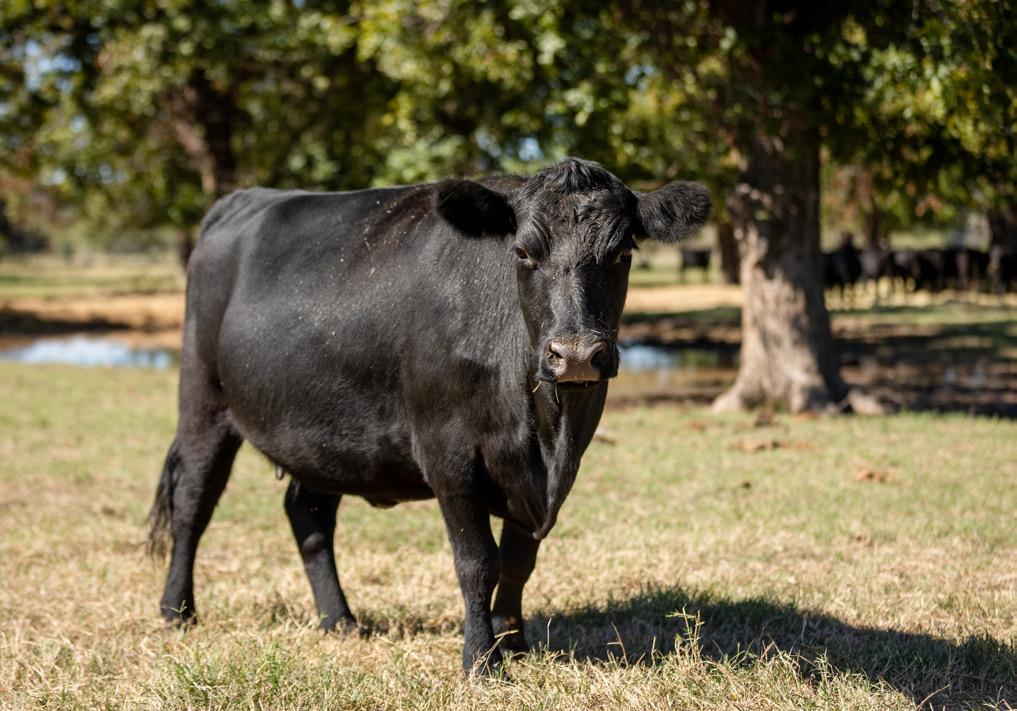
From quality forage to protein, energy, vitamin and mineral supplements, balanced nutrition keeps cows in breeding condition, supports calf health and helps ranchers meet today’s high performance expectations.
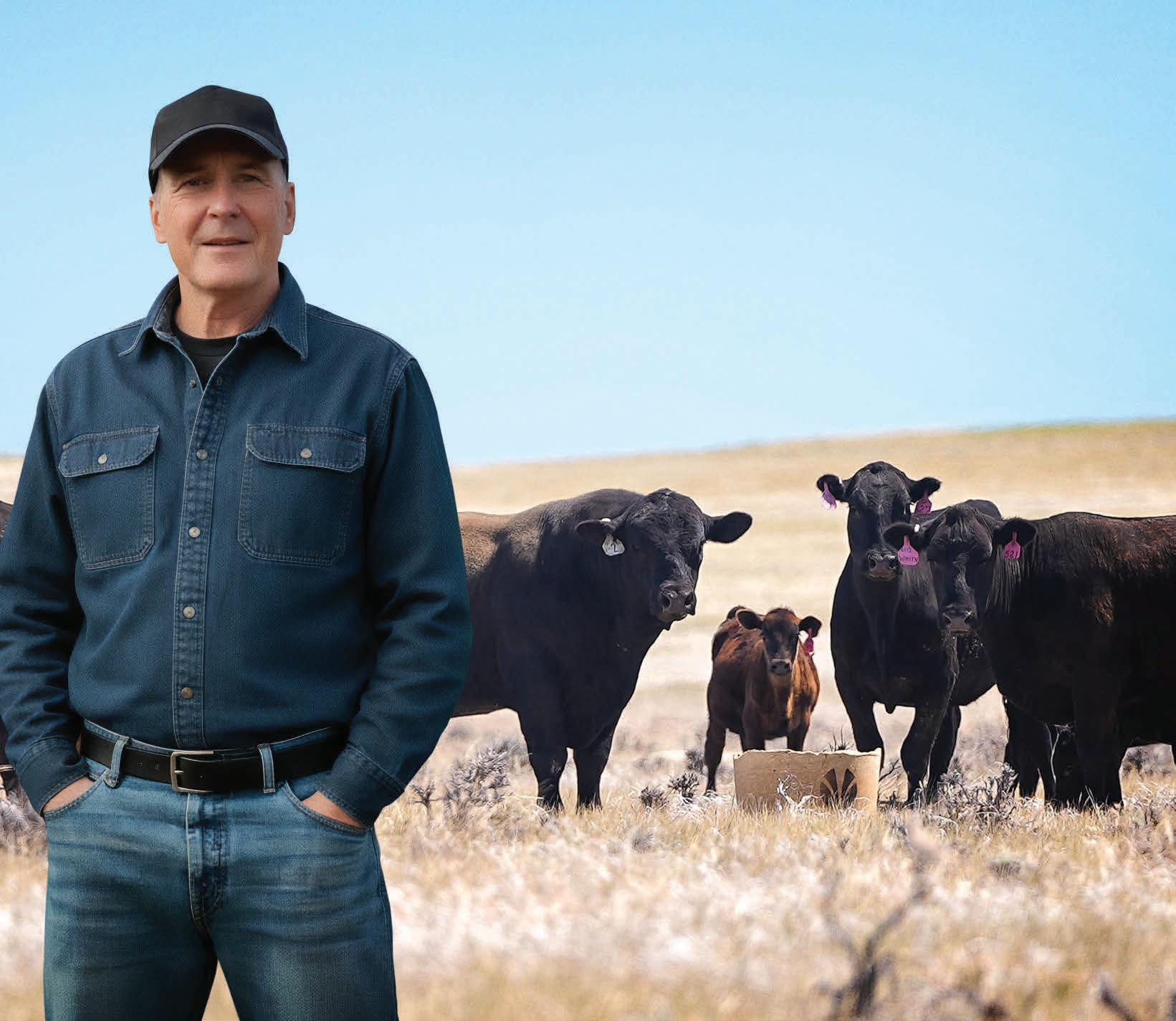
SmartLic® FlaxLic® tubs deliver omega-3s that improve conception, fertility, and pregnancy retention. Premium, weatherproof, self-fed nutrition—so your herd performs, your labor drops, and you keep more calves on the ground.

By Kent Ferguson
by Steve Dewey
Saltcedar, a small tree or large shrub, is an introduced woody plant growing in most areas of Texas and many other states across the country. It can be found along riparian areas, lakes and ponds.
Saltcedar, which is identified by USDA’s National Invasive Species Information Center, can be a serious problem for rangelands and is considered a menace to the state. The plant:
• Reaches up to 30-feet tall and has a twisted trunk with red bark indicating young growth, while older branches will be light or dark gray.
• Has delicate, gray-to-green leaves resembling scales, which is similar to the juniper species. The scales will often have salt deposits secreted on the surface.
• Produces pink buds that turn into dense clusters of pink-to-white flowers, which produce fruit in small, 1/8-inch-long capsules with three parts.
• Produces up to 500,000 seeds, which are tufted with hairs on the tips, per plant annually.
Saltcedar has little to no value for livestock or wildlife with the exception for goats, which will readily consume the plant. Initially, saltcedar arrived in the U.S. as an import from Asia and Europe to be used in landscaping and to control erosion on riparian areas. As it spread, it proved problematic because it consumes a vast amount of water from streams.
Saltcedar should be controlled as soon as it is spotted and not allowed to make seed. It can be controlled by mechanical methods and herbicides, however, several years of treatment will be necessary to control the population of the species. T C
Kent Ferguson, a retired rangeland management specialist from the USDA Natural Resources Conservation Service, provides plant identification photo stories to help ranchers.











Cool-season annual forages like ryegrass, wheat and oats are often planted to provide high-quality grazing. To increase yields, these forages require nitrogen fertilizer applied at the right time — and in the right amount.
Fertilizer timing and amounts will vary based on rainfall throughout the growing season, and whether they are planted in a prepared seedbed or overseeded on bermudagrass.
In general, the first nitrogen application should occur in the fall, followed by a second application during the winter. If needed, a third application can be applied in the spring.
Fertilizer spills or over application can increase forage nitrate content and should be avoided.





Stop using half-measures and start restoring your rangeland with Invora® herbicide. With one simple treatment, you get 10+ years of mesquite control, and five for huisache — giving native vegetation the time it needs to fully recover. With healthier forage, your productivity and profitability will thrive for years to come.
See how one treatment can increase forage availability and reduce grazing pressure at envuhealthyforage.com.

Story by Lindsay Graber-Runft
Photos courtesy of Certified Angus Beef
The meat science discipline has advanced by leaps and bounds under Gary Smith’s guidance.
From food safety to quality beef production, it could be argued that his research findings helped save the beef industry during some of its most challenging times.
Known as the Dean of Meat Scientists, the renowned researcher and educator has never shied away from getting in the trenches and putting in the work. Under his guidance, college students were educated, inspired and trained to be top-notch leaders.
For the indelible mark he left on the beef community, Smith earned the 2025 Certified Angus Beef Industry Achievement Award, which was presented Aug. 24 during the Feeding Quality Forum in Rochester, Minnesota.
A lasting impression
Smith’s first exposure to protein processing was during his childhood in Caddo County, Oklahoma. His family would gather to harvest the meat from livestock and

poultry. From cattle and hogs to chickens and turkeys, generations of the family would work together, without electricity, to get the job done.
Witnessing the challenges of drought and socioeconomic issues on the farm made an impression on Smith. When choosing a degree path, he settled on teaching agriculture — his experience guiding him to help other farm families earn the money necessary to survive.
After high school, Smith headed to California State University, Fresno, known as Fresno State, to pursue a bachelor’s degree in vocational agricultural education. However, he spent a year student-teaching high school agriculture classes and decided he needed a change.
At the encouragement of a college advisor, Smith returned to graduate school. He planned to finish a master’s degree and return to the classroom as a junior college instructor.
Although he finished his master’s in animal breeding, it was his time at Washington State University that set the pivot for Smith’s next chapter in meat science.

Growing up, Smith dabbled in meat judging and later took a meats course at Fresno State. But he had no plans to become a meat scientist. While finishing graduate school, Gene Ensminger, department head at Washington State University, tapped Smith to fill a vacant meat science professor position.
After four years teaching meat science, Smith took a leave of absence and went to Texas A&M University. There, he completed a Ph.D. under famed animal scientist O.D. Butler. And the rest is history, literally.
“I got into [meat science], I loved it and spent the rest of my life trying to be better at it,” Smith says.
Since his academic detour, Smith has been at the forefront of industry-changing research. A key to his success has been establishing a deep network of colleagues and peers within meat science, the beef community and the agriculture industry. Another key: Smith’s work ethic, passion and initiative to find solutions for producers.
“The things I enjoyed the most were getting involved with people who were in the trenches trying to make a living, trying to make a better life for themselves and others,” Smith says. “We just helped them by finding ways to use research.”
In the span of 60 years, Smith’s body of work varied and expanded greatly. In the early years, he was educating people on how to cure meat with the right combination of salt, nitrate and nitrite. By retirement, his research had touched all corners of meat science — a nod to one of his top qualities; the ability to keep an ear to the ground on what problems existed and where solutions needed to be found.
Smith has been at the forefront of studies on beef palatability, food safety, product packaging, beef shelf life, transoceanic shipment of meat and food safety, including mitigation of E.coli 0157:H7, Salmonella and Listeria in packing plants.
Alongside a team of researchers from Texas A&M and Colorado State University, Smith pioneered the National Beef Quality Audit. Other notable industry research projects include the International Beef Quality Audit, National Consumer Retail Beef Study, and exploring USDA beef quality and yield grade standards.
That research had a direct impact on the trajectory of Certified Angus Beef, exploring the importance of marbling and its influence on flavor and tenderness.
The infamous War on Fat was also fought during Smith’s research tenure. There was a belief that cattle had too much backfat, and the issue needed to be rectified. “I think we were scared to death we were going to lose beef over quality,” Smith says.
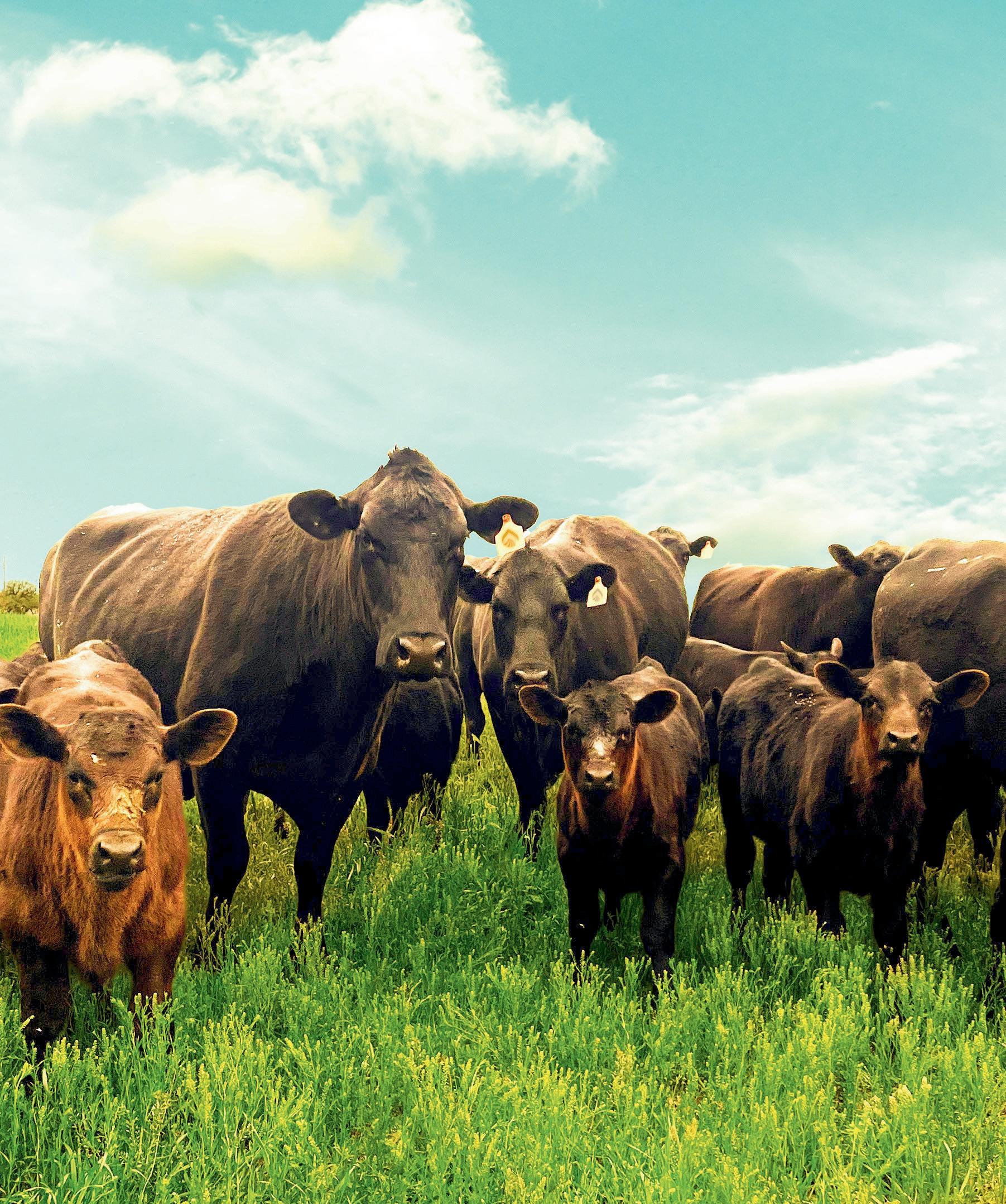








Getting rid of the waste fat, while simultaneously keeping the taste fat, proved to be the answer — one that Smith says saved the beef industry.
“It took us time,” Smith says. “Fortunately, there were people who went the right direction. CAB did it. The industry as a whole did it.”
Jeffrey Savell, Texas A&M University vice chancellor and dean of agriculture and life sciences, distinguished professor in meat science, and E. M. “Manny” Rosenthal chair in animal science, says that at that time, many people were skeptical.
“He let the data support what he had to say,” Savell says.
And that paved the way for the industry’s understanding of quality and its importance.
Savell says Smith could bring research results to life — translating them and explaining what the research meant to others — with a magic unlike anyone else.
“He’s an icon,” says Russell Cross, Texas A&M University senior professor in the department of animal science. “We call him the Dean of Meat Scientists.”
Smith has taught thousands of students and mentored hundreds of graduate students. Many of those past students are industry leaders in research, academia and government roles.
To Cross, a former colleague who worked alongside him for decades, Smith’s unique teaching and communication styles bring out students’ ideas and inspire them to ask questions. It’s part of what made him such an admired educator and the recipient of many teaching awards. The other part? The genuine care and love he has shown his students.
Now retired from academia, Smith’s passion is still present. It’s not uncommon to see him in the halls of Texas A&M’s buildings, dropping off news articles and notes he’s meticulously written for those still actively doing research and teaching college courses.
U.S. Postal Service Statement of Ownership, Management and Circulation
1. Publication title: The Cattleman
2. Publication number: 95000
3. Filing date: Sept. 19, 2025
4. Issue frequency: Monthly
5. Number of issues published annually: 12
6. Annual subscription price: $60
7. Complete mailing address of known office of publication: 2813 S. Hulen, Fort Worth, Tarrant, Texas 76109
8. Complete mailing address of headquarters or general business office of publisher: P.O. Box 101988, Fort Worth, Texas 76185-1988
9. Full names and complete mailing addresses of publisher, editor and managing editor: Publisher – Texas & Southwestern Cattle Raisers Association; Editor – Jaclyn Roberts Parrish, P.O. Box 101988, Fort Worth, Texas 76185-1988; Managing editor – Jena McRell, 3101 Frederick Ave., Suite C, Saint Joseph, MO 64506

of Certified Angus Beef, during the 2025 Feeding Quality Forum.
Purpose follows passion — and Smith found purpose in bettering the beef business.
The application of his research findings has improved every sector of the beef community, from cow-calf ranchers to feedyards, packers and end-users. Beyond the practical implications of Smith’s research, he is known for his unmatched work ethic, no-stone-leftunturned research methodology and ability to build collaborative — and deeply meaningful — relationships with students, colleagues and peers.
“You can measure people by who they had around them, who they trained and the impact that they had,” Cross says. “For Dr. Smith, it’s impossible to measure. He will go down in history as the one who had the greatest impact on the meat science community.” T C
10. Owner: Texas & Southwestern Cattle Raisers Association – P.O. Box 101988, Fort Worth, Texas 76185-1988
11. Known bondholders, mortgages and other security holders owning or holding 1% or more of total amount of bonds, mortgages or other securities: None
12. Tax status: Not applicable
13. Publication title: The Cattleman
14. Issue date for circulation data below: October 2025
15. Extent and nature of circulation. Total number of copies:
• Avg. no. copies each issue during preceding 12 months, 14,784.
• No. copies of single issue published nearest to filing date, 15,002.
• Free or nominal rate distribution: avg. 352; single issue 391.
• Total distribution: avg. 14,765; single issue 15,002.
• Percent paid: avg. 97.62%; single issue 97.39%.
16. Paid electronic copies: avg. 27,720; single issue 27,720.
17. Publication of statement of ownership: Nov. 1, 2025.
18. Signature and title of editor, publisher, business manager or owner: Jaclyn Roberts Parrish, editor-in-chief, Sept. 19, 2025.
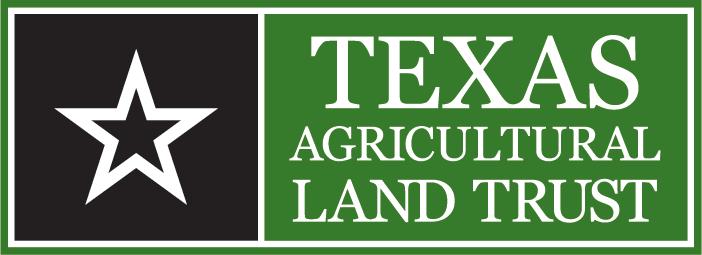
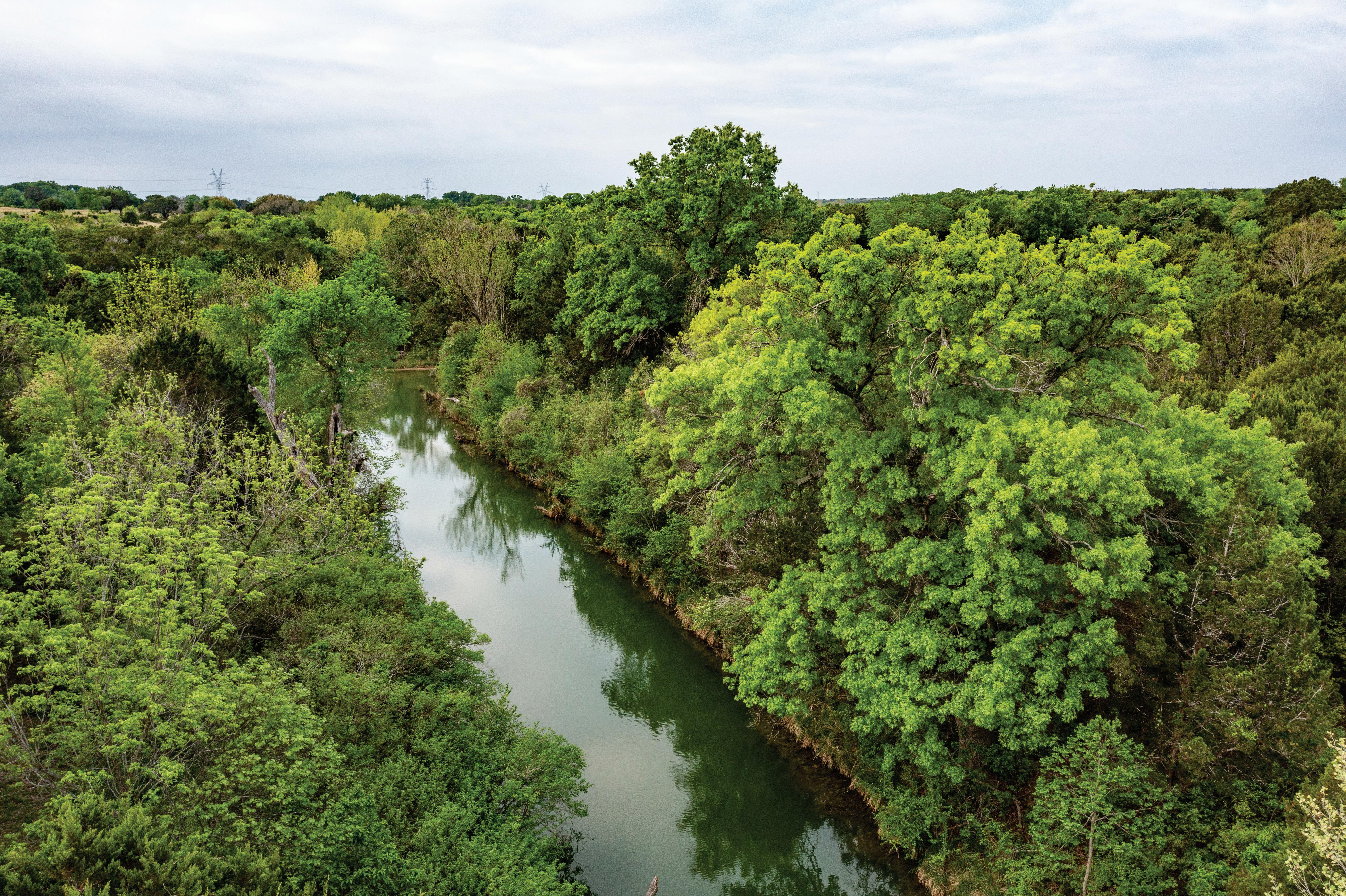
The land is our legacy and on January 31, 2026, join us at Fall Creek Ranch in Granbury for a one-of-a-kind trail run across pastures, creek crossings, and wide-open country.
Every stride supports the Texas Agricultural Land Trust’s mission to conserve working lands. Whether you run the 5K, 10K, or Half Marathon—or cheer from the sidelines—you will be part of protecting the land, water, and wildlife that define Texas ranching.
JANUARY 31, 2026
Register Today! Early Bird ends November 7th.

TSCRA Director DA Harral’s family has thrived in West Texas for generations.
By Shelby Kirton
When DA Harral tells the story of his family’s ranch, it involves a two-and-a-half-year trek on horseback and wagon from California to Texas — and continues through Indian raids, a crippling blizzard and devastating range fires. For Harral, ranching isn’t just a business; it’s a testament to endurance, adaptation and a family’s promise to the land.
As owner and manager of Harral Livestock Co. in southeastern Pecos County, a fourth generation rancher in Texas, Harral is part of a 10-generation ranching and farming family, which immigrated from England in 1635 and arrived in Gloster, Virginia. They arrived in Texas in 1859.
“This family operation has gone on for 10 generations,” Harral says. “And I’ve got two generations right behind me here at the ranch. That’s what keeps me going — knowing this legacy continues.”
Generations ago, his ancestors secured financing in San Antonio and traveled west to California to purchase sheep. They returned to Texas to eventually establish their headquarters in Pecos County. The family raised sheep for four generations until range fires in 2008 forced another change.
“The fires wiped out fences and windmills, even the headquarters,” Harral says. “Without the fences we couldn’t keep the coyotes out, so we moved into cattle. People said you couldn’t run cattle in this short-grass country, but it worked.”
The family transitioned into the cattle business that today includes a cow-calf herd, stockers and a finishing operation. By crossing Corriente cows with Angus and Limousin bulls, they developed a hardy herd suited for West Texas. “Those crossbred cattle are almost as strong as a Spanish goat,” Harral says.
Harral Livestock also supplies beef directly to grocery retailers nationwide. A portion of the herd is finished through smaller feedyards and local plants, with beef reaching shelves from West Texas to Dallas-Fort Worth.
“Everything is ear-tagged and electronically tagged, and the stores know those boxes of meat came from us,” Harral says. “They’re buying the records as much as the beef, and that’s important.”
After growing up on the family ranch, Harral’s own story includes earning a bachelor’s degree in economics,
accounting and finance from Texas A&M University in 1978.
He later worked as a banker in Midland, gaining experience in oil-and-gas trust management before returning to the ranch.
“I was trained as an accountant, and that’s helped me my whole life,” he says. “You can’t sell out when prices are low and buy back when they’re high and expect to stay in business. It’s impossible.”

For Harral, participating in Texas & Southwestern Cattle Raisers Association was natural part of the family’s shift into raising cattle. In those early days, he met with an association special ranger who encouraged him to join.
Relationships, Harral adds, have always mattered in ranching. Mentors and peers opened doors and broadened his experience, from the families in the sheep and goat industry, to others he has met through cattle raiser events.
Harral was elected to the Texas & Southwestern Cattle Raisers Association board of directors in 2018 and currently serves on the property rights and tax committee.
Together with his wife of 42 years, Angela, they’ve raised five children — Mark, Kristi, Kati, Kelli and Jake — and now enjoy sharing ranch life with their grandchildren.
“Angela and I, along with our five grown children and their families, are all owners and active participants in the family operation,” Harral says. “It’s a family operation in every sense.”
The Harral family ranch recently received a Family Land Heritage Award from the State of Texas, recognizing more than a century of operation. Harral appreciates the honor, but says his focus is always on what comes next.
“Look to the future,” he says. “Glance back to see where you came from but focus on where you’re going. That’s the only way this way of life continues.” T C







CARL RAY POLK JR.
President P.O. Box 155108 Lufkin, Texas 75915
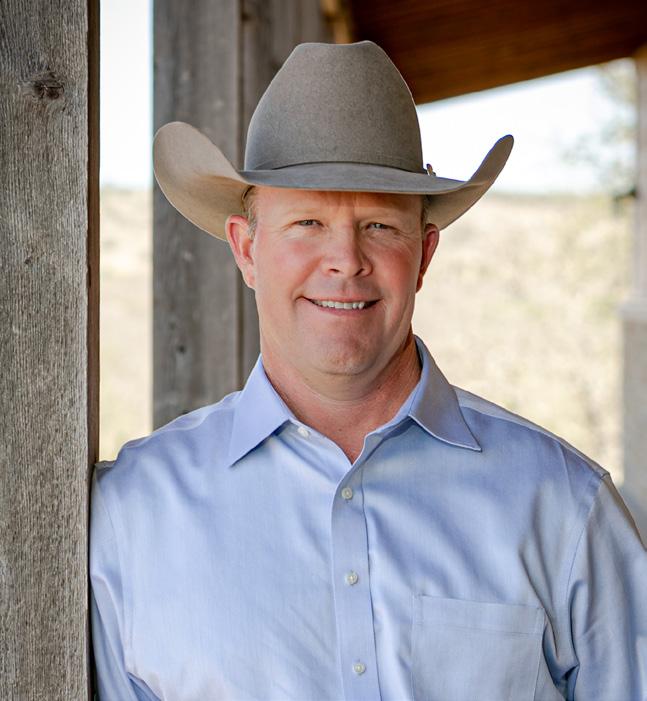
STEPHEN DIEBEL
First Vice President 3907 Salem Rd. Victoria, Texas 77904
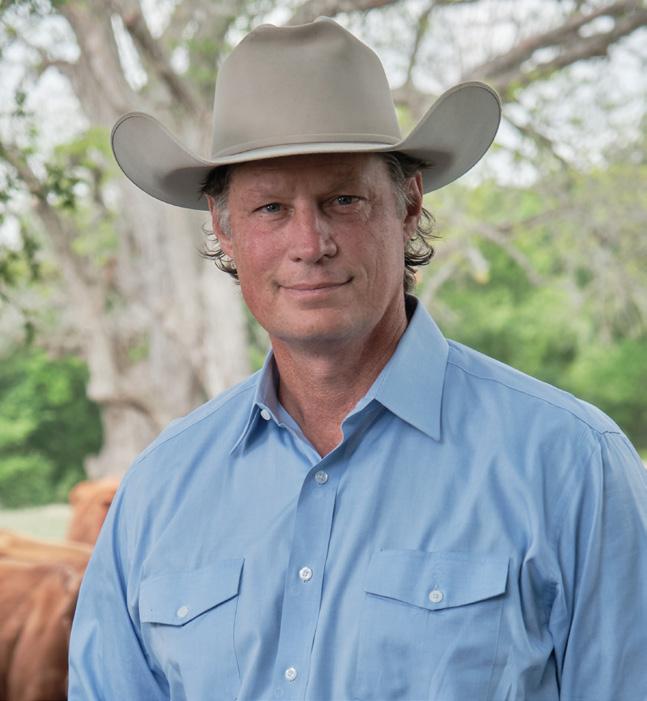
DAN GATTIS
Second Vice President and Secretary/Treasurer 213B W. 8th St. Georgetown, Texas 78626
James L. Powell San Angelo, 1988-1990
Tom Beard Alpine, 1994-1995
C. Coney Burgess Amarillo, 1997-1999
J. Mark McLaughlin San Angelo, 1999-2001
John E. Dudley Comanche, 2001-2003
Joe M. “Jody” Bellah, Throckmorton
Blake Birdwell, Canyon
E. S. F. “Swasey” Brainard II, Pampa
J. K. “Rooter” Brite Jr., Bowie
Donnell Brown, Throckmorton
Campbell Burgess, Amarillo
Deborah Clark, Henrietta
Lynn Cowden, Skellytown
Jake Cowen, Benjamin
J. B. Daniel, Crowell
James Henderson, Memphis
Bob McCan Victoria, 2003-2005
C.R. “Dick” Sherron, MD Beaumont, 2005-2007
Jon Means Van Horn, 2007-2009
G. Dave Scott Richmond, 2009-2011
Joe J. Parker Jr. Byers, 2011-2013
Clayton Henry, Wichita Falls
Brooks Hodges, Guthrie
Joe Leathers, Guthrie
Frank McLelland, Tahoka
Jeff Mitchell, Amarillo
Gage Moorhouse, Benjamin
Diaz W. Murray, Wichita Falls
J. Malcolm Shelton IV, Amarillo
Dale A. Smith, Amarillo
Jim Thompson, Breckenridge
Ross Thompson, Iowa Park
Wesley Welch, Lubbock
Pete Bonds Saginaw, 2013-2016
Richard Thorpe III, MD Winters, 2016-2018
Robert E. McKnight Jr. Fort Davis, 2018-2020
G. Hughes Abell Austin, 2020-2022
Arthur G. Uhl III San Antonio, 2022-2024
Kevin Busher, Winters
Charles M. “Charley” Christensen Jr., San Angelo
C.A. “Chili” Cole IV, San Angelo
Alan F. Curry, San Angelo
James H. Dudley IV, Horseshoe Bay
Amanda Dyer, Fort Davis
Johnny Ferguson, Big Lake
DA Harral, Fort Stockton
Ron Helm, Van Horn
Heath Hemphill, Coleman
Shelby W. Horn, Fredericksburg
Larry R. Horwood, Sterling City
Grant Jones, Rochelle
Mark W. Jones, Brady
W. Clay Jones, Brady
Ty Keeling, Boerne
Lorenzo Lasater, San Angelo
Brian T. McLaughlin, Midland
David L. Neal, San Angelo
Gerald Nobles Jr., Brady
James Oliver, Ozona
Wade Perks, San Angelo
Jessica Tate, Marfa
James Uhl, Fort McKavett
Cody Webb, Barnhart
C. Clark Welder, Fredricksburg
Ray W. Willoughby III, Eldorado
Ford Drummond, Pawhuska, Oklahoma
Edward Bordovsky Jr., Riviera
Austin Brown III, Beeville
W. Christopher Bush, Refugio
James Clement lll, Kingsville
David S. Crow, Corpus Christi
Dustin Dean, Floresville
David DeLaney, Kingsville
Robert “Bobby” Dobson, Birmingham, Alabama
James L. “Jamie” Donnell Jr., Fowlerton
J. David Eppright, Cost
Benjamin Eshleman III, Corpus Christi
Joseph B.C. Fitzsimons, Carrizo Springs
Robert “Robbie” Graff, D’Hanis
Parke Greeson Jr., Goliad
Bret Griffith, Del Rio
Heath Grigg, Kingsville
Marty R. Harris, Tilden
Anson Howard, San Antonio
William Whitby Jones III, Hebbronville
Leslie Kinsel, Cotulla
Claude Koontz, San Antonio
Steven J. Mafrige, Tilden
Richard Marbach, Victoria
Federico “Freddy” Nieto, Raymondville
T. Michael O’Connor, Victoria
Jason Peeler, Floresville
J.R. Ramirez, La Pryor
Michael Sasser, Corpus Christi
Lew Thompson, Pearsall
John E. Zacek, Victoria
Bill Cawley, Crockett
Wayne Cockrell, College Station
Herff Cornelius Jr., Wadsworth
Carlos Detering III, Houston
Gardner H. Dudley, Houston
Lloyd French IV, Houston
Cody Fry, College Station
Kelley Sullivan Georgiades, College Station
George Harrison, Bay City
Robert Hodgen, Houston
Colt Hoffmann, Marlin
Clay Kenley, Crockett
John Malazzo, Caldwell
Clive Runnells III, Austin
John Sumner Runnells III, Bay City
Tony Spears, Rosanky
John “Rocky” Sullivan, Galveston
Claudia Scott Wright, Richmond
April Bonds, Saginaw
Missy Bonds, Saginaw
John L. Cantrell, Cresson
Ian Chapman, Madill, Oklahoma
Hunter Crow, Dallas
James A. Dangelmayr, Muenster
Seth Denbow, Weatherford
Crawford Edwards, Fort Worth
John Greer, Henrietta
Jason Harlow, Dallas
Pete Hudgins, Sherman
Tom Johnson, Wortham
Ken Leiber, Fort Worth
Stefan Marchman, Fort Worth
William H. McCall, Fort Worth
Dan Nance, Haslet
Susan Roach, Fort Worth
Stephen S. “Steve” Sikes, Fort Worth
Bragg Smith III, Dallas
















































Texas & Southwestern Cattle Raisers Association directors represent six geographical regions across Texas and Oklahoma. Reference the special rangers page for a link to an interactive online map.



































William M. “Buck” Arrington, Pampa
Van Baize, Nocona
Bradford S. “Brad” Barnes, Fort Worth
Steve G. Beever, Pearsall
George Beggs IV, Fort Worth
Richard H. Bennett, San Antonio
Emry Birdwell, Henrietta
Mary Lou Bradley-Henderson, Childress
Chip Briscoe, Carrizo Springs
R.A. “Rob” Brown, Throckmorton
J.D. Cage, Muleshoe
Presnall Cage, Falfurrias
John W. Carpenter III, Dallas
Barrett D. Clark, Breckenridge
Martin W. Clement II, Kingsville
Thurman S. Clements Jr., Victoria
C.A. “Chip” Cole III, San Angelo
James T. Dangelmayr, Muenster
Nixon Dillard, Pleasanton
William C. “Billito” Donnell Jr., Alpine
Markham B. Dossett, Waco
Bob Drake, Davis, Oklahoma
James H. “Jim” Dudley, Comanche
Jay C. Evans, Dripping Springs
Trainor Evans, Mercedes
Leroy Ezer, Anahuac
Jim L. Gates, Pearsall
Richard Gates, Marfa
Mike Gibson, Paducah
Ronald J. “Ron” Gill, Chico
Frank Green, Liberty
W. H. “Billy” Green III, Albany
Milton S. Greeson Jr., Victoria
Thomas J. “Tommy” Haegelin, Concan
Dr. Philip C. Hardee, Beatrice, Alabama
Rafe Hargrove, Rotan
Tom J. Haynie, Navasota
Dr. Joe Pat Hemphill, Coleman
Ken Jordan, San Saba
Don Keeling, Fredericksburg
David W. Killam, Laredo
John Z. Kimberlin Jr., Dallas
Dan W. Kinsel III, Cotulla
Chris Lacy, Fort Davis
Steve C. Lewis, San Antonio
James E. “Jim” Link, Crowley
Coleman H. Locke, Hungerford
Ben Love, Marathon
Katharine Armstrong Love, Austin
Richard M. Lucas Jr., Houston
Robert B. Mansfield, Amarillo
Jon David Mayfield, Dublin
Jim McAdams, Seguin
James A. McAllen, Linn
William “Alan” McNeill, Beaumont
Len P. Mertz, San Angelo
Evalyn Moore, Richmond
Raymond E. Moore IV, Richmond
Bob Moorhouse, Weatherford
Tom Moorhouse, Benjamin
Beth Knolle Naiser, Sandia
Russell Noble, Ardmore, Oklahoma
Les Nunn, Pauls Valley, Oklahoma
Boots O’Neal, Guthrie
James Palmer, Roaring Springs
Rick Peebles, Baytown
Tim Pennell, Westhoff
Tom Perini, Buffalo Gap
Jim Peters, Quemado
Scott Petty Jr., San Antonio
Bill Phinizy, Gail
Frank Price, Sterling City
Gary Price, Blooming Grove
Mary Joe Reynolds-Montgomery, Fort Worth
Tom L. Roach III, Bozeman, Montana
Charles R. “Butch” Robinson, Navasota
Nolan Ryan, Round Rock
M. Stuart Sasser, Corpus Christi
Gordon E. Sauer, Fredericksburg
Wilson Scaling, Henrietta
Chris Scharbauer, Amarillo
Frates Seeligson Jr., San Antonio
Ed Small, Austin
Danny B. Stewart, Sterling City
Gerald Sullivan, Galveston
Stephen T. “Steve” Swenson, Dallas
Rick Tate, Marfa
Cliff Teinert, Albany
Richard Traylor, Batesville
Robert J. Underbrink, Houston
Tom Watson, Muleshoe
Dennis W. Webb, Barnhart
John Welch, Wolfforth
Richard Wortham, Austin
Ken Welch, Baird
Roger F. Welder, Victoria
A.B. Wharton, Vernon
W.C. “Billy” Williams, Mertzon
David W. Winters, Del Rio
Dr. M. R. “Mike” Wirtz, Brenham
Tom Woodward, Decatur
Bart Wulff, Dallas
Curtis A. Younts Jr., Belton
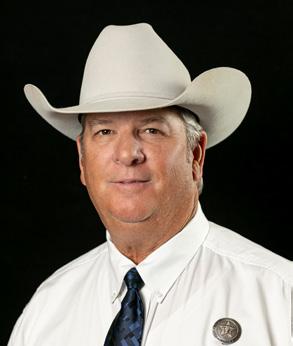
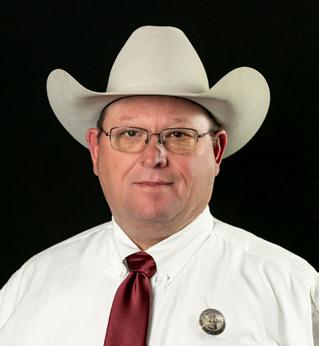



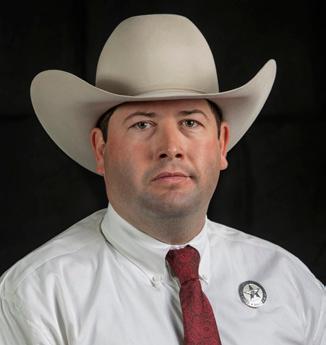


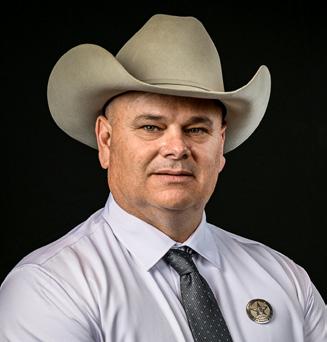
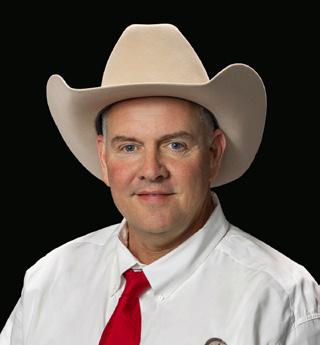
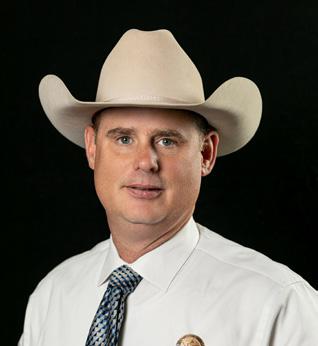
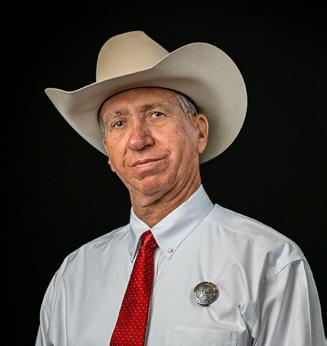

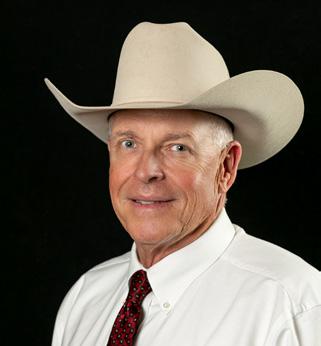


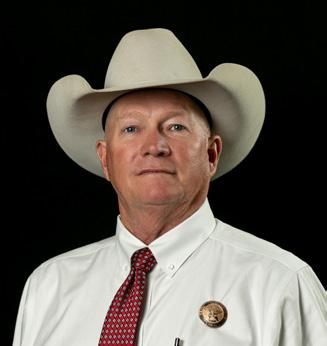
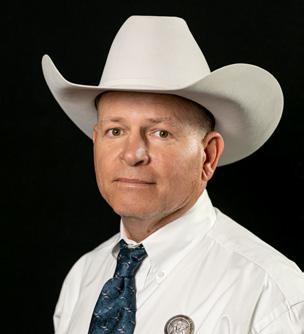


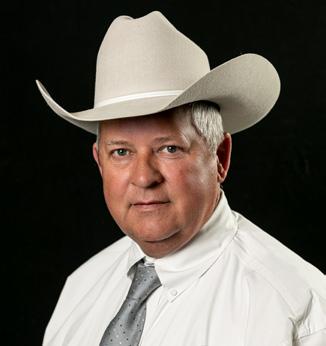
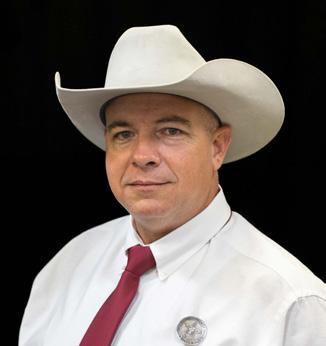
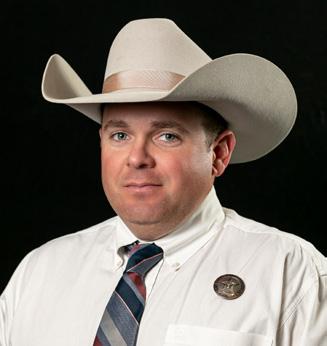
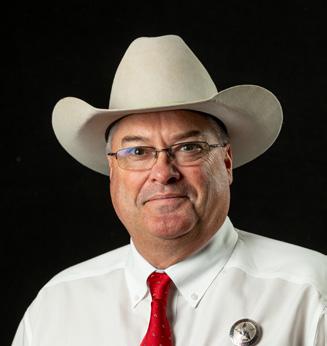


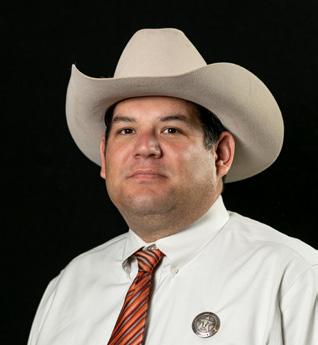

129 Ranch
Santo
4b Cattle Co.
Hext
5T Ranch
Shepherd
6G Ranch
Hallettsville
7F Ranch
Gainesville
About Time Ranch
Carbon
Audrey Adkison Burleson
AK Strategy LLC Johnson City
Anthony Anderson Gatesville
Travis Anderson Waxahachie
Armstrong Cattle Co. New Braunfels
Ball Angus Milano
Ballantine Family Sulphur Springs
Glenn Barron Santa Anna
Bent Tree Ranch Fort Worth
BKB Farms LLC Greenville
Helee Blount Plains
Mark & Cynthia Boenisch Garwood
Brady Cattle Co. LLC Rising Star
Kenneth & Mary Ann Braim Gustine
Leigha Brannon
Stephenville
Bredthauer Custom Hay Lipan
Brooks Boyd Ranch Trent
Brunson Ranch Cranfills Gap
Cannon Snap Ranch Temple
Choate Cattle Co. Comanche
Ken & Sally Collom Ivanhoe
Coward Ranch Gatesville
Crockett Ranch Argyle
Erin Cunningham Decatur
Stephen & Rebecca Dooley Godley
Double J Cattle & Coastal Ranch LLC Comanche
Double L Ranch Elgin
Lester Driesmeyer El Campo
Dube Farms Thorndale
ERJ Ranch Operations LLC Lingleville
Cutter Evans Lubbock
Kaila Fiallos Clarendon
Flying N Cattle Bedias
Connor Foreman College Station
FranMar Farm Woodville
FRS LLC Georgetown
Aaron Garcia El Paso
Curtis L. Garrett Coleman
Gibson Ranch Ovalo
Goode Farms LLC Midland
Jackson Graham Gentry, Arkansas
Hail Land & Cattle Richmond
Wally Hinkle Llano
Steven Homeyer Lewisville
Honey Locust Ponderosa Waco
Honey Rock Ranch Frisco
Hope Cattle Co. Cookville
Shawn Hubnik Cameron
Scott & Laurie Hughes Stephenville
Iron Hills Farm & Cattle Normangee
Scott Irwin North Richland Hills
J&B Cattle Co. Mason
Jim Collums Ranch Poteet
James Jirasek
Taylor

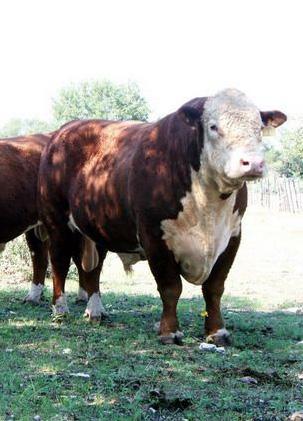

Johnson Family Ranch
Taylor
Jones Ranch
Tyler
Jordon Dudley Family Comanche
KDK Resources LP Terlingua
Keeton Ranch Aledo
Thomas Keller Franklin
Koch Ranch Millsap
KV Farms
Somerville
Jax Labaj
Austin
Cameron Lee Midland
LR Bar Ranch
Dublin
Mariposa Farm Tomball
Jackson L. McReynolds Bryan
Miller Farms Eldorado, Oklahoma
Minuteman Farms Thorndale
Dennis & Allie Motal Hallettsville
Codie Nunley Jewett
Cory Nunley Leona
O’Riley Cattle Coupland
Otte Brothers Farm
Lexington
Pennington Cattle Co.
Rule
Danny Phillips Stephenville Polasek Farms
Taylor
Kynnlee Poore Wichita Falls
Nigel Pope Kempner
David Price Liberty Hill
Pritchard Family Edmond, Oklahoma
Quarter Diamond Ranch Amarillo
RAM Ranches Fort Worth
Lane Redden Dallas
Will Robinson Fort Worth
Rockin A Replacements Sulphur Springs
Rumer Ranch Durant, Oklahoma
Peyton Schueler Friona
Michael Scruggs Thrall
Jimmy Sheppard Issaquah, Washington
Solitude Ranch Elm Mott
David Spiller Jacksboro
Spray Farms Jayton
George H. Springer Beaumont
Dale & Laura Spurlen
Dublin
Bailey Stockland Missouri City
Strongpoint Ranch Argyle
T&B Cattle Co. LLC San Angelo
Texas Disposal Systems
Austin
Tipping H Lubbock
Todo Bien Ranch Clifton
Trimm Ranch
Thomaston
Jay Valine McKinney
Voss Ranch Jarrell
Andrew T. Walker Carrizo Springs
WB Cattle LLC
Apple Springs
WE Ranch Marlin
Dakota Wood Stephenville
Yungblut Half-Circle 7 Ranch Abilene
Zipper Valley Ranch LLC Frisco


Elkhart Horse Auction
Where: Elkhart
Phone: 903-764-1495
Sale Day: Saturday
Contact: Tiffany Patterson, 903-388-7288
Atascosa Livestock Exchange
Where: Pleasanton Phone: 830-281-2516
Sale Day: Tuesday
Contact: Brandon Armstrong, 210-259-1780
Four County Auction
Where: Industry Phone: 979-357-2545
Sale Day: Tuesday
Contact: Lisa Sebastian, 979-270-3041
Muleshoe Livestock Auction
Where: Muleshoe
Phone: 806-272-4201
Sale Day: Friday
Contact: Leo Aviles, 956-437-3899
Beeville Livestock Comm.
Where: Beeville
Phone: 361-358-1727
Sale Day: Friday
Contact: Daniel Keese, 361-449-7942
Clifton Livestock Comm. LLC
Where: Clifton
Phone: 254-675-7717
Sale Day: Wednesday
Contact: Ray Davis, 254-718-5512
Meridian L/S Comm. Co.
Where: Meridian
Phone: 254-435-2988
Sale Day: Monday
Contact: Larry Brown, 254-265-1920
J & J Livestock Auction
Where: Texarkana
Phone: 903-832-3576
Sale Day: Saturday
Contact: Cheri Beal, 903-280-4554
Brazos Valley Livestock Comm.
Where: Bryan
Phone: 979-778-0904
Sale Day: Tuesday
Contact: Nina Nygard, 512-281-6753
Caldwell Livestock Comm.
Where: Caldwell
Phone: 979-567-4119
Sale Day: Wednesday
Contact: Mark Nygard, 512-281-6330
Lockhart Auction
Where: Lockhart
Phone: 512-398-3476
Sale Day: Thursday
Contact: Nina Nygard, 512-281-6753
Bruce Overstreet Livestock
Where: Pittsburg
Phone: 903-856-3440
Sale Day: Monday
Contact: Michelle Willeford, 903-767-0670
Tri County Livestock Market
Where: New Summerfield
Phone: 903-322-4940
Sale Day: Saturday
Contact: Jerry Boulware, 936-465-1597
Coleman Livestock Auction
Where: Coleman Phone: 325-625-4191
Sale Day: Wednesday
Contact: Dave Williams, 325-669-2030
Cattleman’s Columbus Livestock Auction
Where: Columbus
Phone: 979-732-2622
Sale Day: Wednesday
Contact: Wes Martin, 281-782-4412
Comanche Livestock Exchange
Where: Comanche
Phone: 325-356-5231
Sale Day: Saturday
Contact: Michael Davis, 254-879-3121
The New Gainesville Livestock Auction
Where: Gainesville
Phone: 940-665-4367
Sale Day: Friday
Contact: Robin Gibbs, 903-227-0791
Coryell County Comm.
Where: Gatesville Phone: 254-865-9121
Sale Day: Wednesday
Contact: Larry Brown, 254-265-1920
Cattleman’s Livestock Comm.
Where: Dalhart
Phone: 806-249-5505
Sale Day: Thursday
Contact: Clifton Miller, 806-570-7439
Hereford Livestock Auction
Where: Hereford
Phone: 806-240-3082
Sale Day: Tuesday
Contact: Joe Bob Via, 806-452-9280
Cuero Livestock Comm.
Where: Cuero
Phone: 361-275-2329
Sale Day: Friday
Contact: Kaylee Malatek, 979-942-0323
Texas Cattle Exchange
Where: Eastland Phone: 254-629-2288
Sale Day: Tuesday
Contact: Shondra Davis, 325-642-5542
Dublin Livestock Auction
Where: Dublin Phone: 254-445-1734
Sale Day: Friday
Contact: Mike Heck, 806-886-6554
Erath County Dairy Sale
Where: Dublin Phone: 254-968-7253
Sale Day: Friday Contact: Bob McBryde, 940-859-6217
Stephenville Cattle Co.
Where: Stephenville Phone: 254-968-4844
Sale Day: Wednesday Contact: Bob McBryde, 940-859-6217
Flatonia Livestock Comm.
Where: Flatonia Phone: 361-865-3538
Sale Day: Monday
Contact: Vance Weltner, 210-473-9099
Schulenburg Livestock Auction
Where: Schulenburg Phone: 979-743-6566
Sale Day: Saturday Contact: Vance Weltner, 210-473-9099
Floydada Livestock Sales
Where: Floydada Phone: 806-983-2153
Sale Day: Wednesday
Contact: JE Stone, 806-777-4396
Pearsall Livestock Auction
Where: Pearsall
Phone: 830-334-3653
Sale Day: Wednesday
Contact: Clarence Stevens, 210-415-0441
Gillespie Livestock Co.
Where: Fredericksburg Phone: 830-997-4394
Sale Day: Wednesday
Contact: Larry Bowden, 210-846-0380
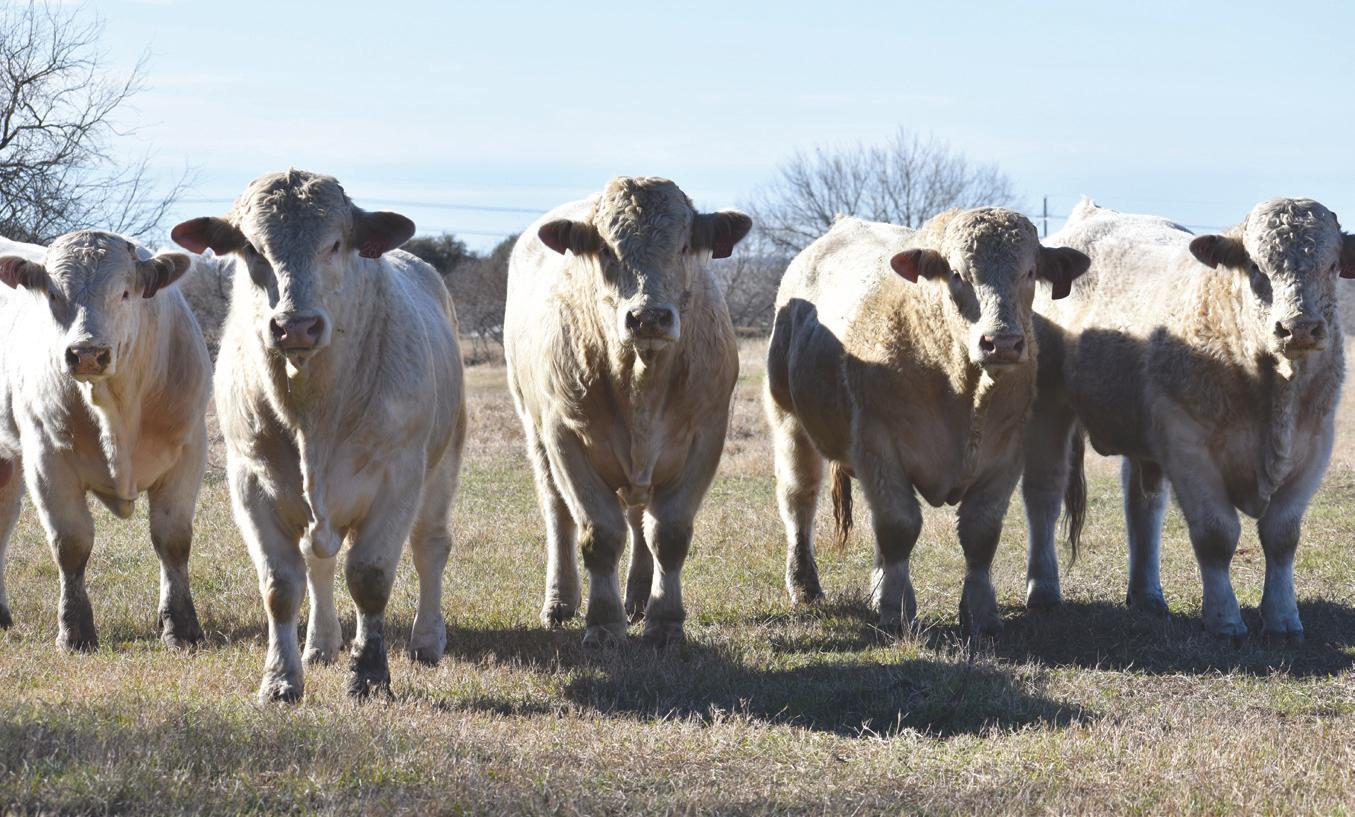
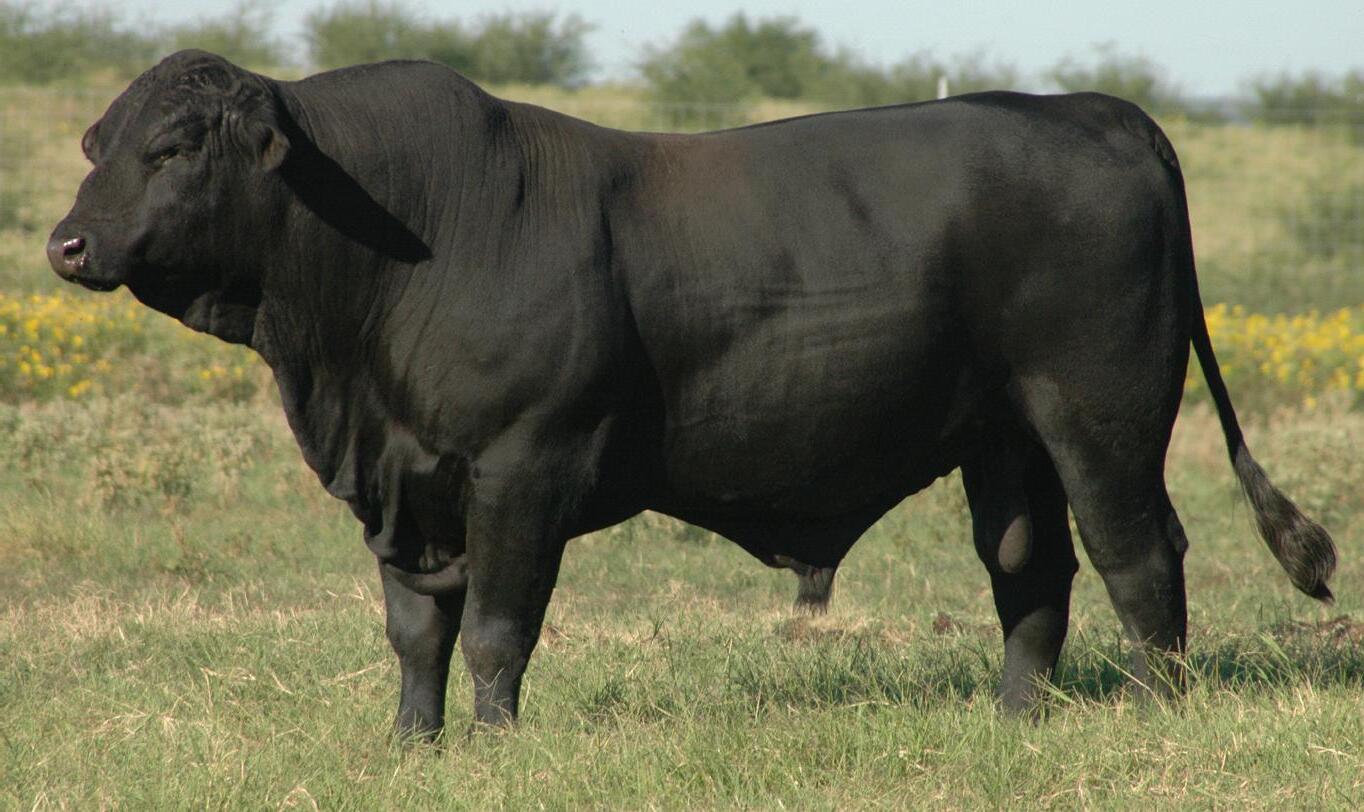
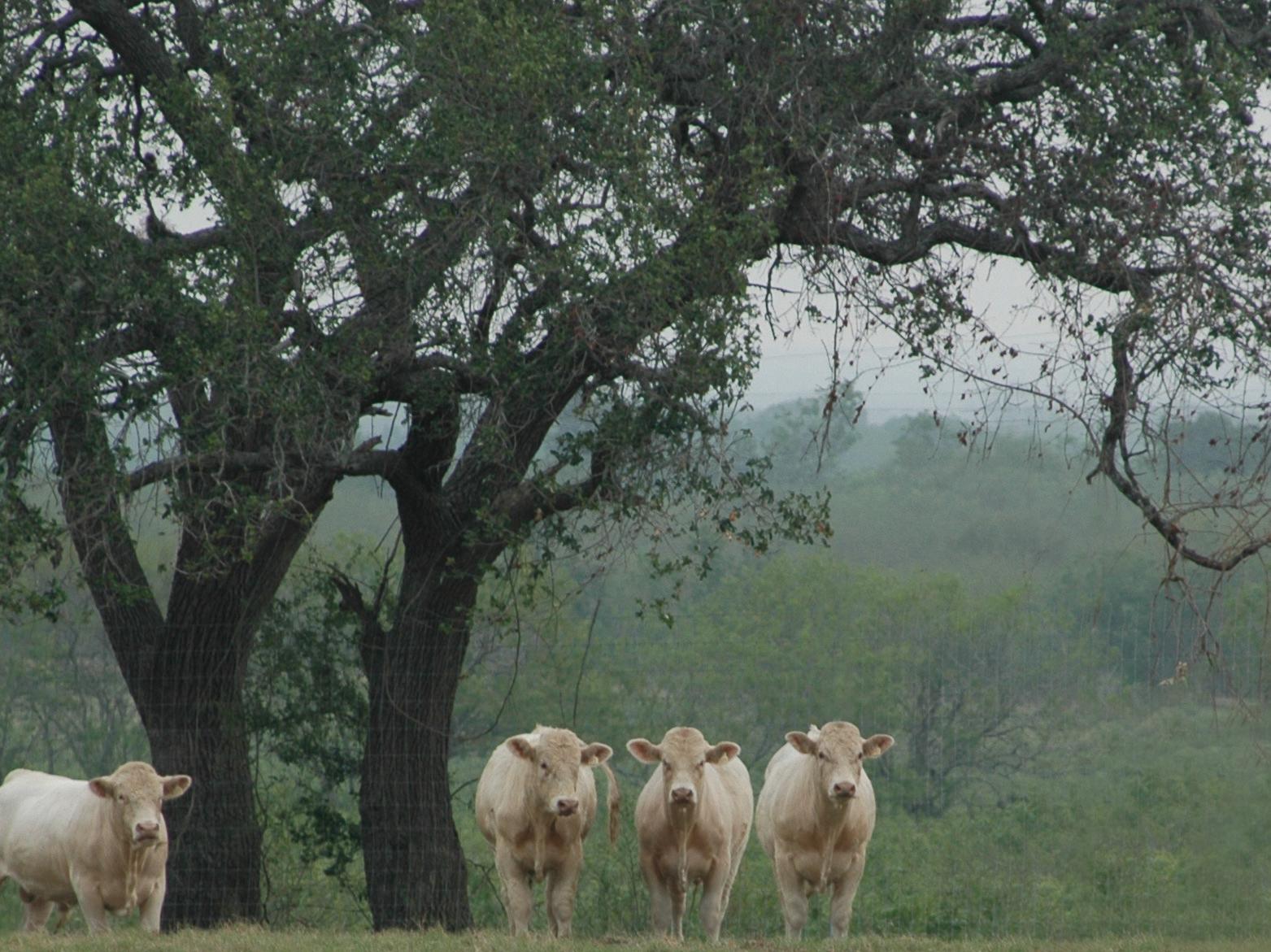
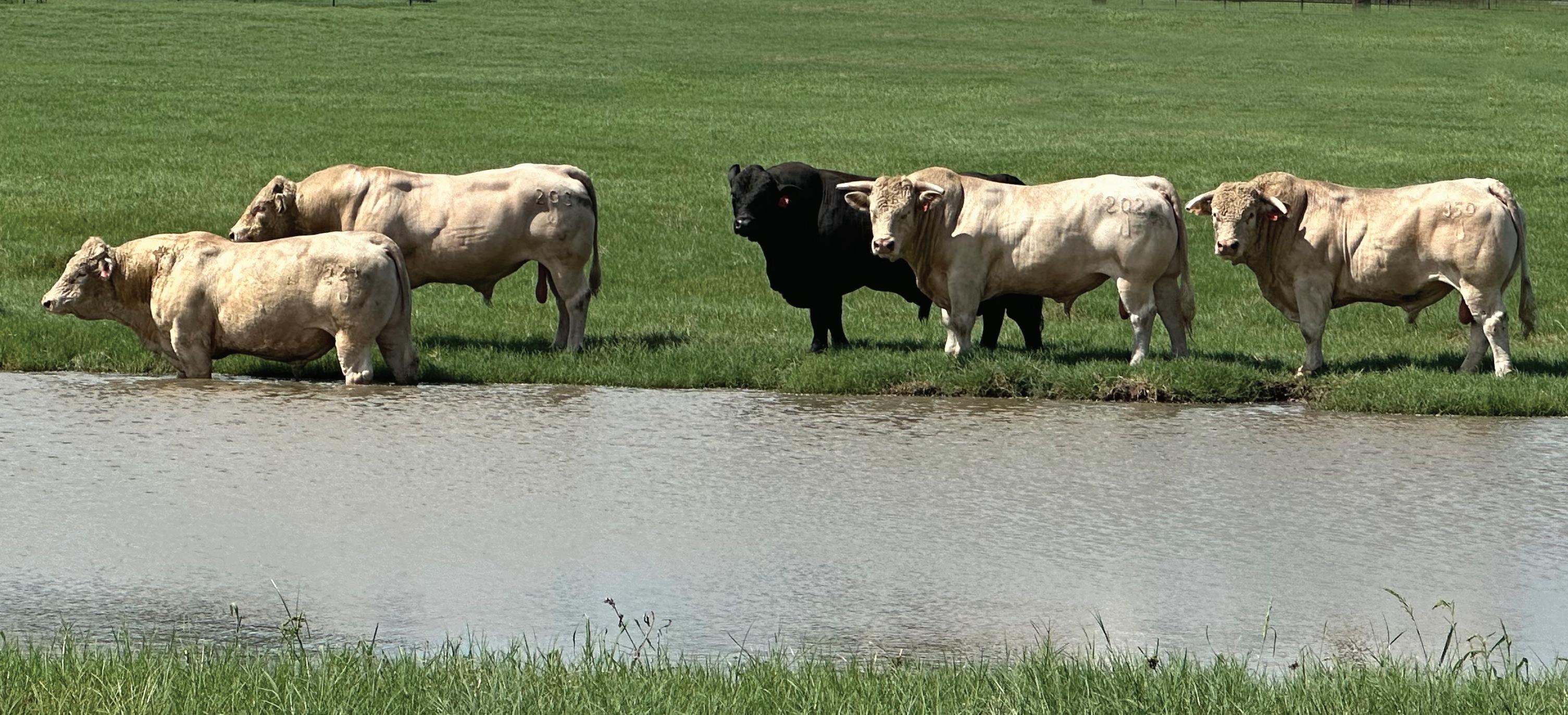
Gonzales Livestock Market
Where: Gonzales
Phone: 830-672-2845
Sale Day: Saturday
Contact: JoGayle Stavena, 979-332-2186
Nixon Livestock Comm.
Where: Nixon
Phone: 830-582-1561
Sale Day: Monday
Contact: Landyn Maguglin, 361-492-9484
Longview Livestock
Where: Longview Phone: 903-235-6385
Sale Day: Thursday
Contact: Paul Pruitt, 903-725-6200
Mid-Tex Livestock Auction
Where: Anderson Phone: 936-825-3970
Sale Day: Thursday
Contact: Rick Faught, 936-442-1039
Navasota Livestock Auction
Where: Navasota
Phone: 936-825-6545
Sale Day: Saturday
Contact: Rick Faught, 936-442-1039
Seguin Cattle Co.
Where: Seguin
Phone: 830-379-9955
Sale Day: Wednesday
Contact: Elizabeth Cortez, 830-857-1945
Hamilton Livestock Comm.
Where: Hamilton Phone: 254-386-3185
Sale Day: Tuesday
Contact: Bob McBryde, 940-859-6217
Gore Family Auction Center
Where: Silsbee
Phone: 409-782-0612
Sale Day: Saturday
Contact: Christy McCoy, 409-782-0612
Athens Comm. Co.
Where: Athens
Phone: 903-675-3333
Sale Day: Friday
Contact: Brandy Baughman, 903-440-4382
Edinburg Livestock Auction
Where: Edinburg Phone: 956-383-5671
Sale Day: Saturday
Contact: Coney Alvarez Jr., 956-437-3899
Hubbard Livestock Market
Where: Hubbard
Phone: 254-576-2584
Sale Day: Monday
Contact: Patrick Romine, 254-723-0950
Sulphur Springs Livestock Comm.
Where: Sulphur Springs
Phone: 903-885-2455
Sale Day: Monday
Contact: Paul Pruitt, 903-725-6200
East Texas Livestock Auction
Where: Crockett
Phone: 936-544-2246
Sale Day: Tuesday
Contact: Cheyenne London, 936-222-3689
Big Spring Livestock Auction
Where: Big Spring
Phone: 432-267-5881
Sale Day: Wednesday
Contact: Bruce Brandenberger, 254-977-5763
Edna Livestock Auction
Where: Edna
Phone: 361-782-7666
Sale Day: Monday
Contact: Galynn Mazoch, 979-578-1823
Kirbyville Auction Barn
Where: Kirbyville
Phone: 409-423-2612
Sale Day: Saturday
Contact: Erica Morgan, 409-509-1946
Gulf Coast Livestock Market
Where: Alice Phone: 361-664-4395
Sale Day: Tuesday
Contact: Ramiro Garcia, 361-460-0008
Johnson County Cattle Auction
Where: Cleburne Phone: 817-556-9090
Sale Day: Saturday
Contact: Lee Snyder, 254-707-1682
Karnes City Auction
Where: Karnes City Phone: 830-780-3382
Sale Day: Wednesday Contact: Douglas Brunet, 830-708-6537
Karnes County Livestock Exchange
Where: Kenedy Phone: 830-583-2574
Sale Day: Thursday
Contact: Elizabeth Cortez, 830-857-1945
Cattlemen’s Livestock Comm.
Where: Paris
Phone: 903-784-2238
Sale Day: Saturday Contact: Lana Caldwell, 903-908-0530
Paris Livestock Auction
Where: Paris Phone: 903-739-2575
Sale Day: Wednesday Contact: Robin Gibbs, 903-227-0791
Hallettsville Livestock Comm.
Where: Hallettsville Phone: 361-798-4336
Sale Day: Tuesday Contact: Kaylee Malatek, 979-942-0323
Giddings Livestock Comm.
Where: Giddings Phone: 979-542-2274
Sale Day: Monday
Contact: Nina Nygard, 512-281-6753
Lexington Livestock Comm.
Where: Lexington Phone: 979-773-2922
Sale Day: Saturday Contact: Nina Nygard, 512-281-6753
Buffalo Livestock Comm.
Where: Buffalo Phone: 903-322-4940
Sale Day: Saturday Contact: Cheyenne London, 936-222-3689
Raywood Livestock Market
Where: Raywood Phone: 936-587-4941
Sale Day: Monday Contact: Harvey Williamson, 963-334-5325
Groesbeck Auction & Livestock
Where: Groesbeck Phone: 254-729-3277
Sale Day: Thursday
Contact: Mallory Steen, 903-390-0594
Live Oak Livestock Auction
Where: Three Rivers Phone: 361-786-2553
Sale Day: Monday
Contact: Brandon Armstrong, 210-259-1780
Jordan Cattle Auction
Where: Mason Phone: 325-347-6361
Sale Day: Monday
Contact: Warren Ottmers, 830-669-2262
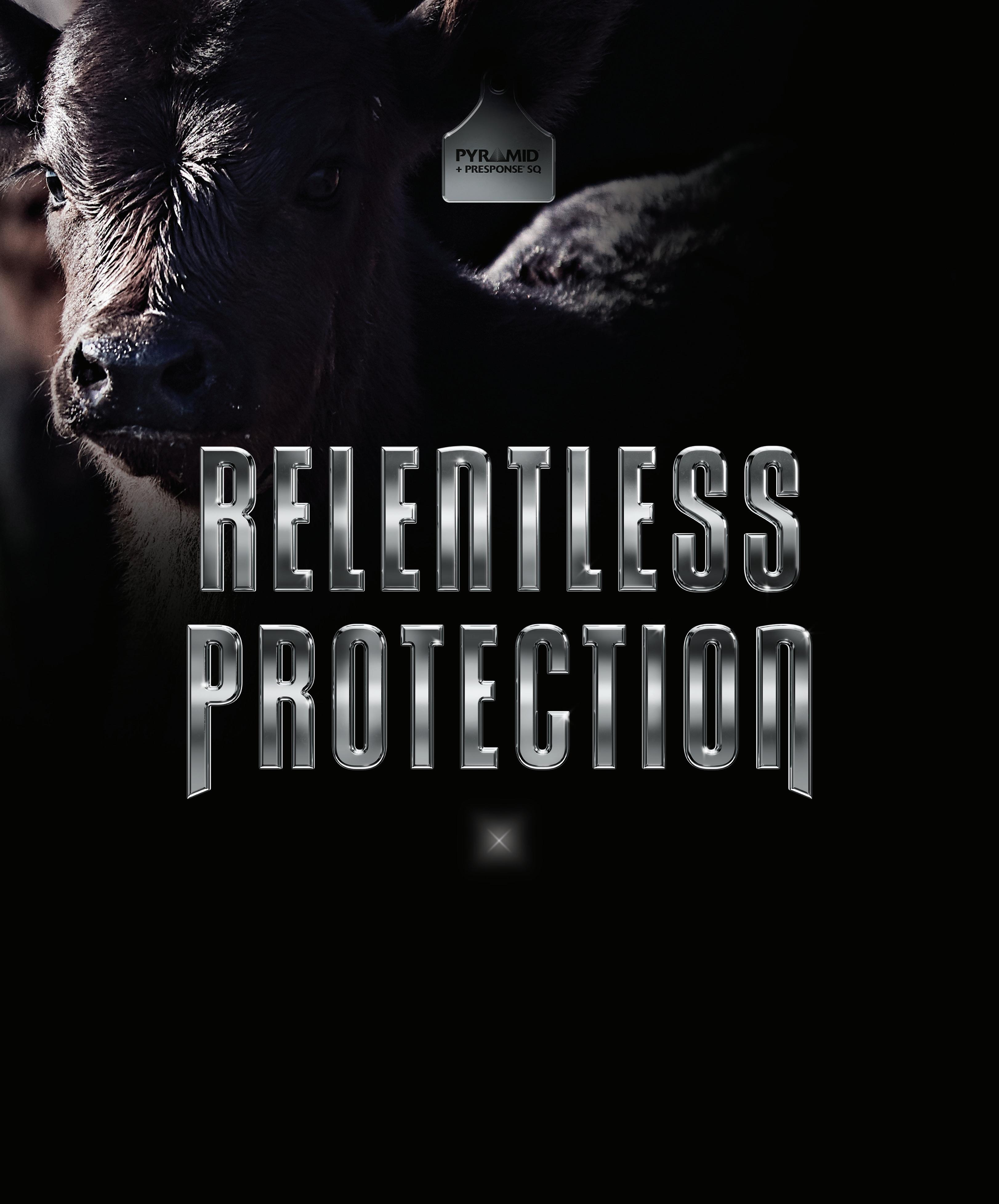
West Auction
Where: West
Phone: 254-826-3725
Sale Day: Thursday
Contact: Ray Davis, 254-718-5512
Union Comm.
Where: Hondo
Phone: 830-741-8061
Sale Day: Monday
Contact: Clarence Stevens, 210-415-0441
Milam County Livestock Auction
Where: Cameron Phone: 254-697-6697
Sale Day: Friday
Contact: Rick Faught, 936-442-1039
Nacogdoches Livestock Exchange
Where: Nacogdoches
Phone: 936-564-8661
Sale Day: Thursday
Contact: Michael Witcher, 936-556-0992
Corsicana Livestock Market
Where: Corsicana
Phone: 903-872-1631
Sale Day: Tuesday
Contact: Katy Webb, 903-388-4390
Carthage Livestock Auction LLC
Where: Carthage
Phone: 903-693-6361
Sale Day: Tuesday
Contact: Lori Blankenship, 936-234-3441
Livingston Livestock Exchange
Where: Livingston Phone: 936-327-4917
Sale Day: Saturday
Contact: Harvey Williamson, 963-334-5325
Lonestar Stockyards
Where: Amarillo
Phone: 806-677-0777
Sale Day: Tuesday
Contact: Gary McClellan, 806-334-0517
Emory Livestock Auction
Where: Emory
Phone: 903-473-2512
Sale Days: Tuesday & Saturday
Contact: Brandy Baughman, 903-440-4382
Calvert Livestock Co.
Where: Calvert
Phone: 979-364-2829
Sale Day: Friday
Contact: Ray Davis, 254-718-5512
Hunt Livestock Exchange
Where: Henderson
Phone: 903-657-2690
Sale Day: Monday
Contact: Samuel Steadman, 318-617-1141
Jordan Cattle Auction
Where: San Saba
Phone: 325-372-5159
Sale Day: Thursday
Contact: David Munden, 325-456-7253
Center Auction Co.
Where: Center
Phone: 936-598-4395
Sale Day: Wednesday
Contact: Michael Witcher, 936-556-0992
Triple G Livestock Auction LLC
Where: Rio Grande City
Phone: 956-437-1988
Sale Day: Friday
Contact: Coney Alvarez Jr., 956-437-3899
Tulia Livestock Auction
Where: Tulia Phone: 806-995-4184
Sale Day: Thursday
Contact: Tommy Thompson, 806-690-4080
Abilene Auction
Where: Abilene
Phone: 325-673-7865
Sale Day: Tuesday
Contact: Dave Williams, 325-669-2030
Stone Livestock Comm.
Where: Mt. Pleasant
Phone: 903-575-9099
Sale Day: Tuesday
Contact: Paul Pruitt, 903-725-6200
Producers Livestock Auction
Where: San Angelo
Phone: 325-653-3371
Sale Day: Thursday
Contact: Bruce Halfmann, 325-315-5972
Southwest Livestock Exchange
Where: Uvalde
Phone: 830-278-5621
Sale Day: Thursday
Contact: Clarence Stevens, 210-415-0441
Mort Livestock Exchange
Where: Canton Phone: 903-287-6386
Sale Day: Special Sales Only
Contact: Paul Pruitt, 903-725-6200
Brenham Livestock Auction
Where: Brenham
Phone: 979-836-3621
Sale Day: Friday
Contact: Lisa Sebastian, 979-270-3041
El Campo Livestock Exchange LLC
Where: El Campo
Phone: 979-543-2703
Sale Day: Tuesday
Contact: Galynn Mazoch, 979-578-1823
Wharton Livestock Auction
Where: Wharton Phone: 979-532-3660
Sale Day: Wednesday
Contact: Megan Stavena, 979-320-4228
Wichita Livestock Sales
Where: Wichita Falls Phone: 940-541-2222
Sale Day: Wednesday Contact: R.C. Langford, 832-330-7279
Decatur Livestock Market
Where: Decatur Phone: 940-627-5599
Sale Day: Monday
Contact: Rebecca Benson, 940-389-6382
Winnsboro Livestock Auction
Where: Winnsboro
Phone: 903-365-2201
Sale Day: Friday
Contact: Alan Pruitt, 903-725-6200
Graham Livestock Comm. LLC
Where: Graham Phone: 940-549-0078
Sale Day: Monday
Contact: Ronnie Ober, 817-371-7071
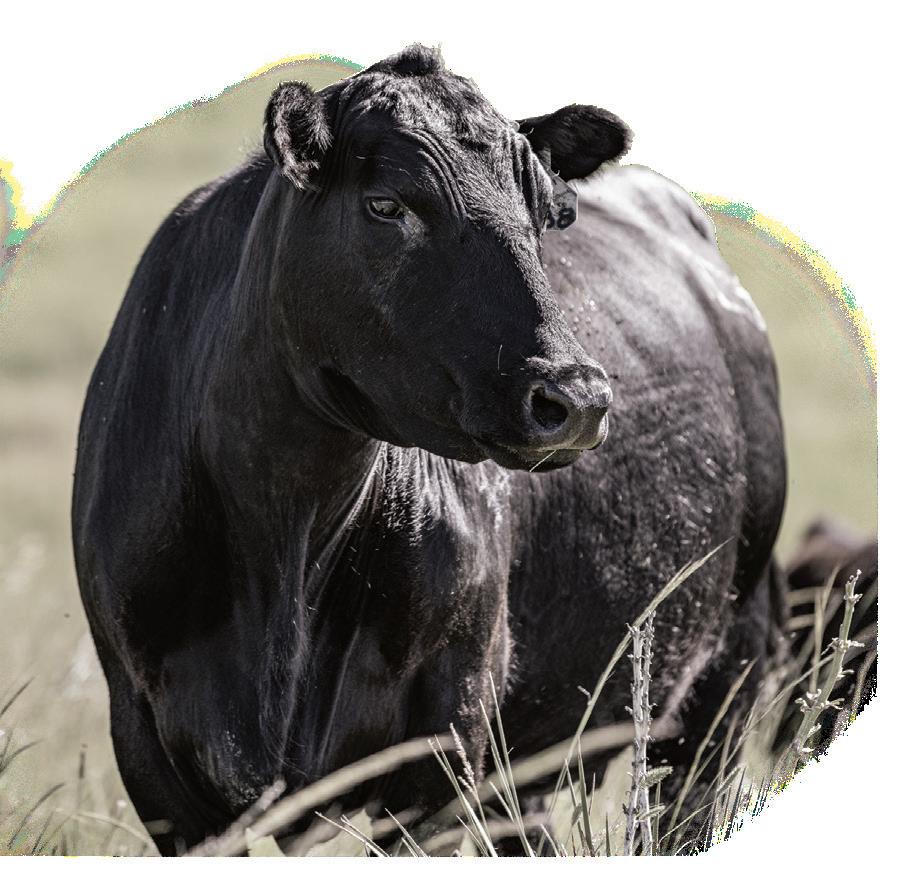
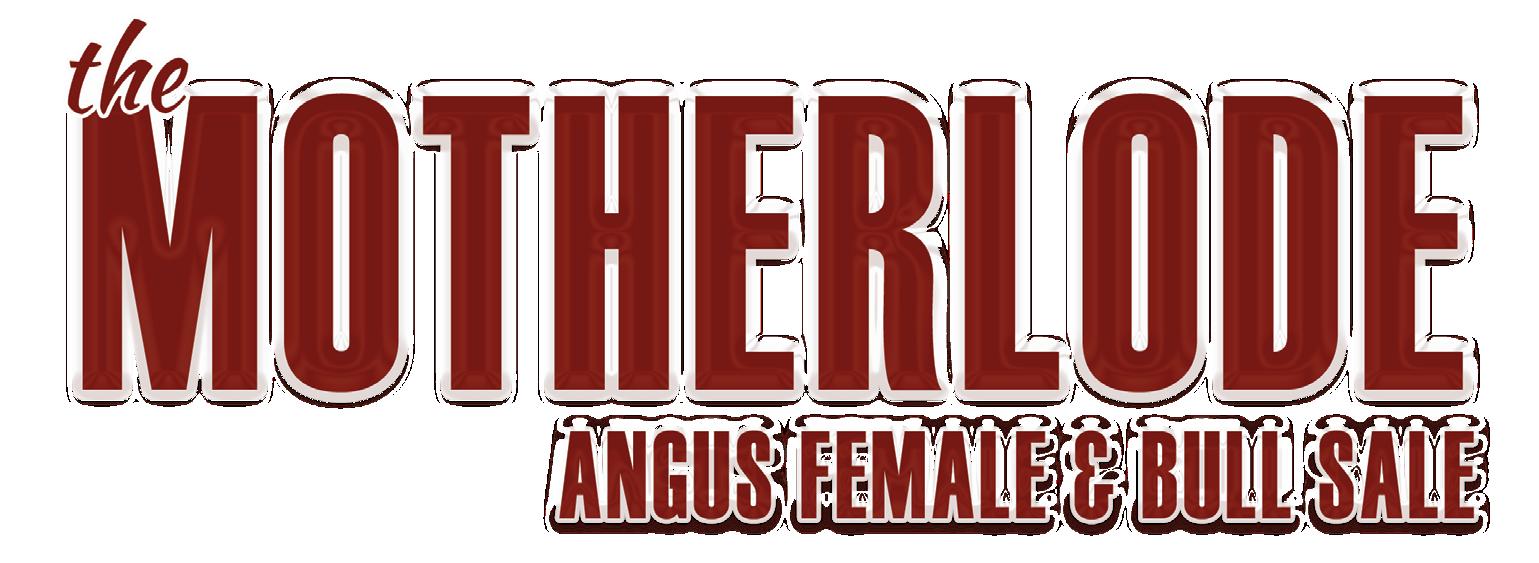

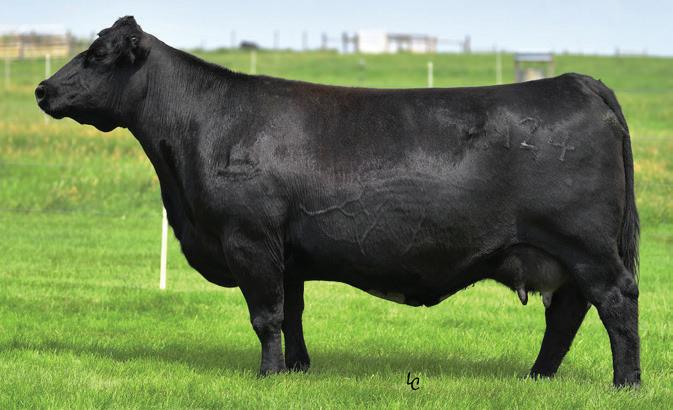
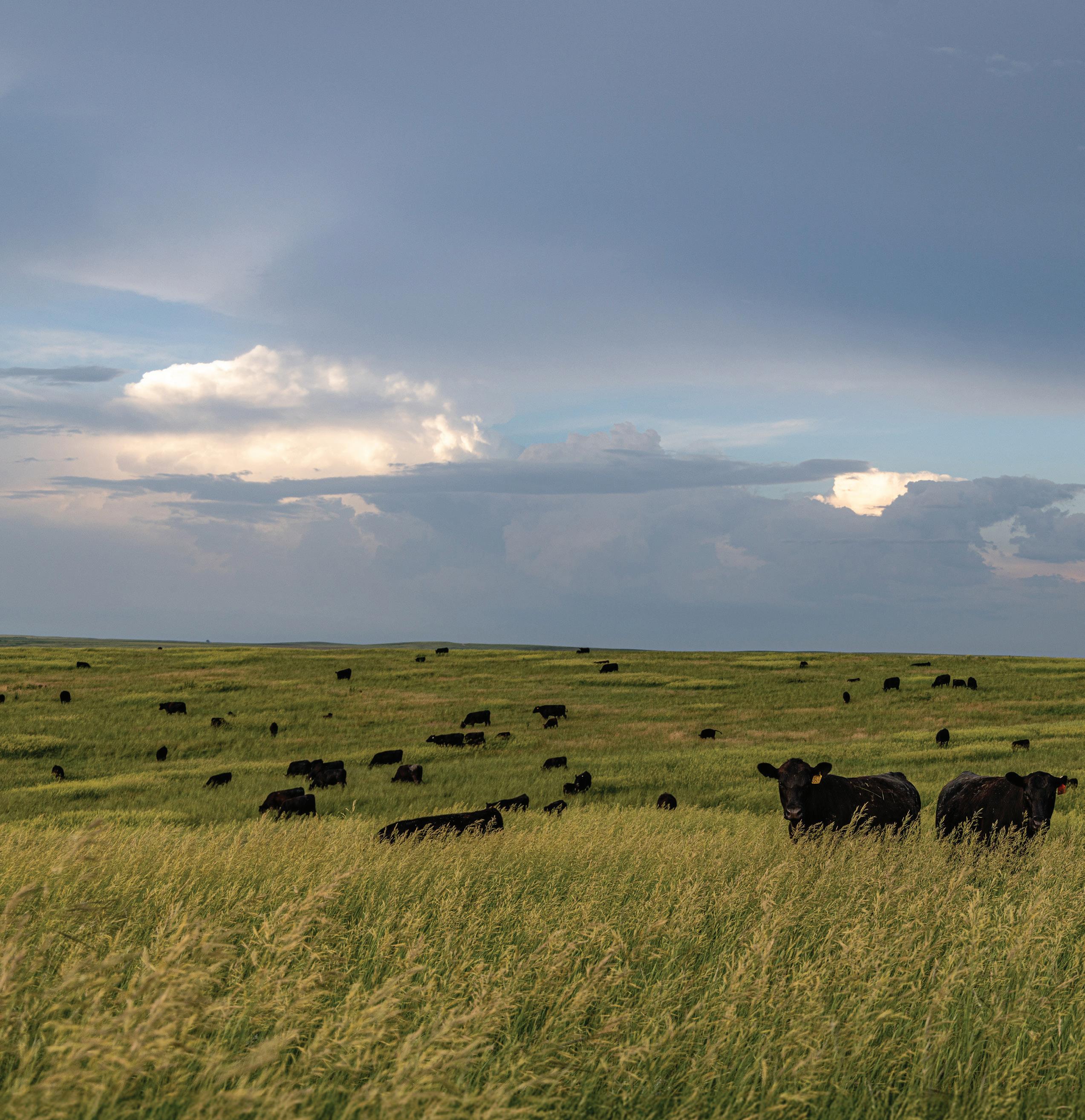
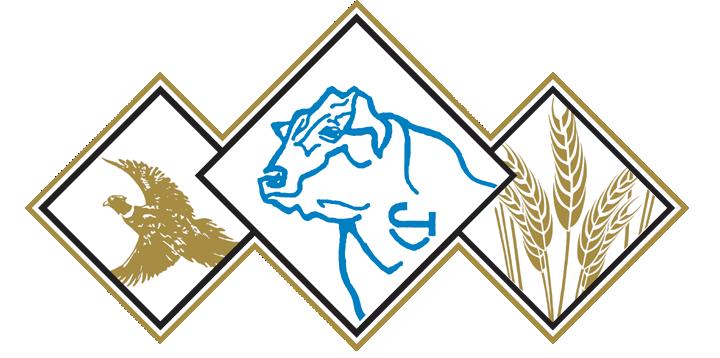

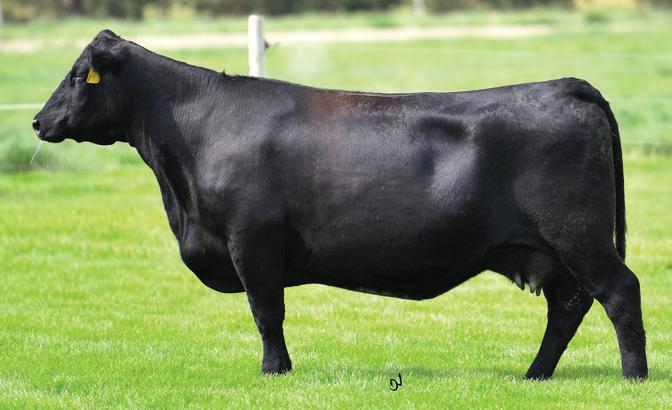
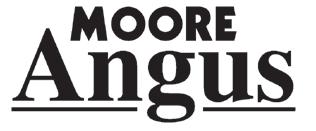
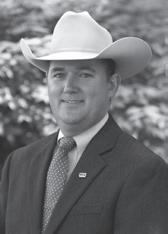
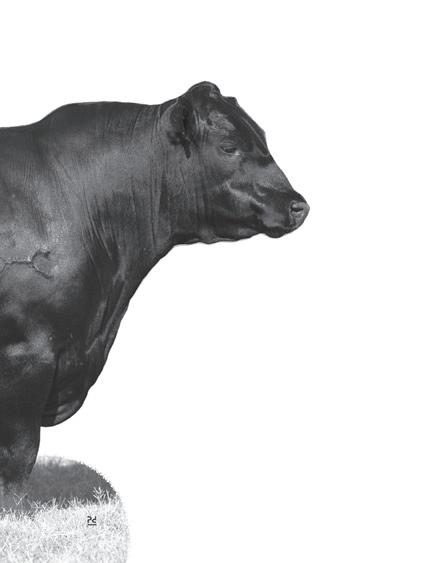


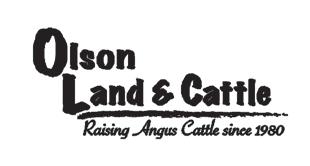

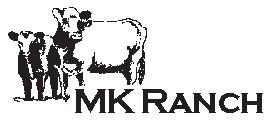

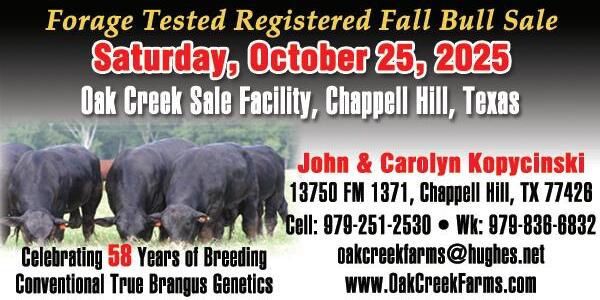



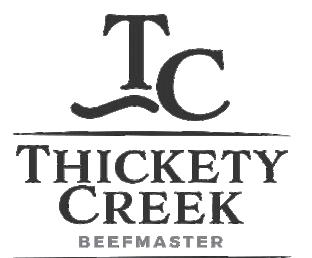












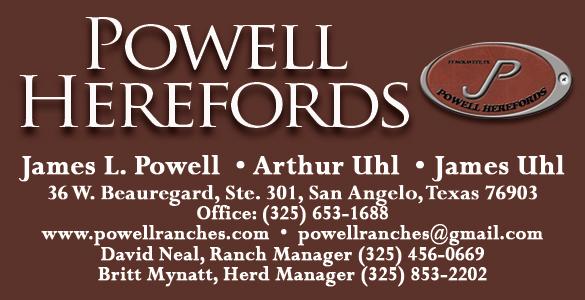

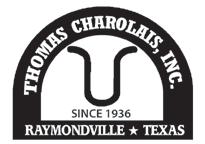
Mitch Thomas: 956-535-0936
Tonnyre Thomas Joe: 956-535-0942 thomasra@gte.net www.thomascharolais.com

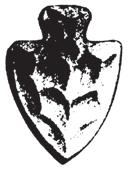
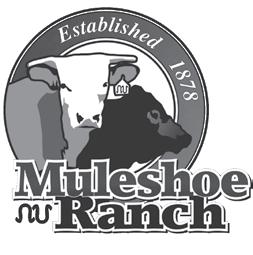
Email: john@dudleybros.com 923 Hillside Ave. Canadian, TX 79014 806-323-2906 lee@indianmoundranch.com www.indianmoundranch.com Lee & Jacqui Haygood J .T . E chols DVM P.O. Box 709 • Breckenridge, TX 76424 Of: (254) 559-9739 • Cell: (254) 559-0156 muleshoeranch@gmail.com
NOACK HEREF OR
“Quality Registered Herefords” Est.1921 – Bulls for sale at all times out of good milking cows
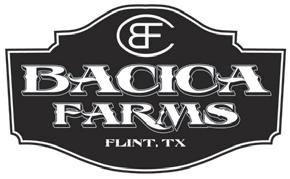

Black Herefords bacicafarms.com

Mike & Carla Bacica 11707 FM 2868 Flint, TX 75762
Mike: 903-520-0390 mbpga@aol.com
Carla: 903-530-8551 wtnca@aol.com
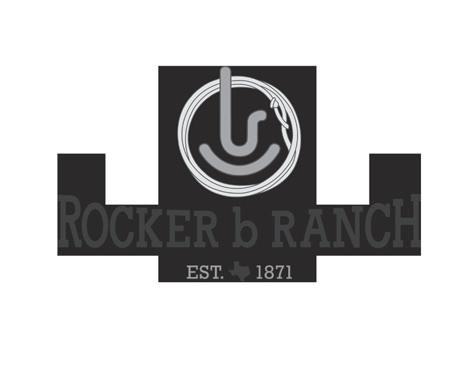

Airport Freeway Fort Worth, Texas 76117 817/831-3161

Theuret Herefords Horned Bulls and Females
2348 CR 165, Kenedy, TX 78119 theuret@sbcglobal.net 210-315-0103





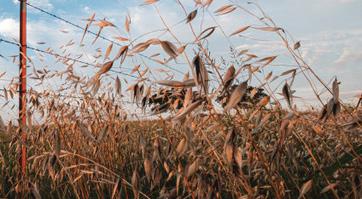


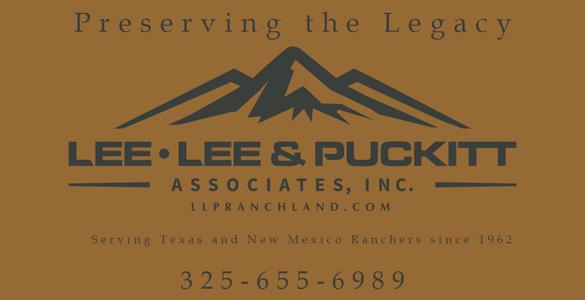

We need your listings on any types of ag properties in TX., NM, OK & CO.



LISTING! REEVES CO., TX — Organic alfalfa farm, producing mineral, feedlot, rock quarry, 2,777 acres +/-.
GUADALUPE CO., NM – Escape to wide-open freedom on the Old Route 66 Ranch — 1,540 acres of rolling hills, native pastures, and rugged beauty nestled halfway between Santa Rosa and Tucumcari, New Mexico. Just minutes off I-40 near Newkirk, perfect for ranchers, hunters, and outdoor lovers alike, this Guadalupe County gem offers room to run cattle, space to roam, and unforgettable views in every direction. Sheltering terrain draws in wildlife, making this property the real deal for those who crave privacy, purpose and the outdoors. Privacy, potential, and panoramic skies — give us a call to walk the land and make it yours.
PECOS CO., TX – 637 ac., Big water, State Classified Minerals.

Borchers Southern Y Ranches, L.P. Charla Borchers-Leon • Mary Kay Borchers 2401 N. Wheeler St. • Victoria, Texas 77901 • 361-575-1297 Santa Gertrudis • Braford F-1 Purebred • Star 5 • Crossbred Cattle


Santa Gertrudis
(817) 641-4771
BRIGGS RANCHES P.O. Box 1417 Victoria, Texas 77902 361/573-7141
Traylor Division San Roque DivisionSan Carlos Division Bloomington, TX Catarina, TXRio Grande City, TX Joe Jones-Manager • 361/897-1337
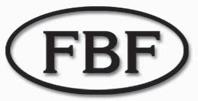
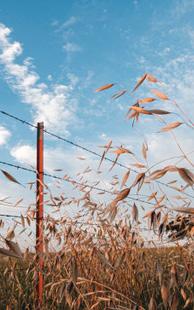
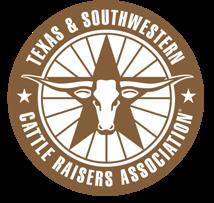
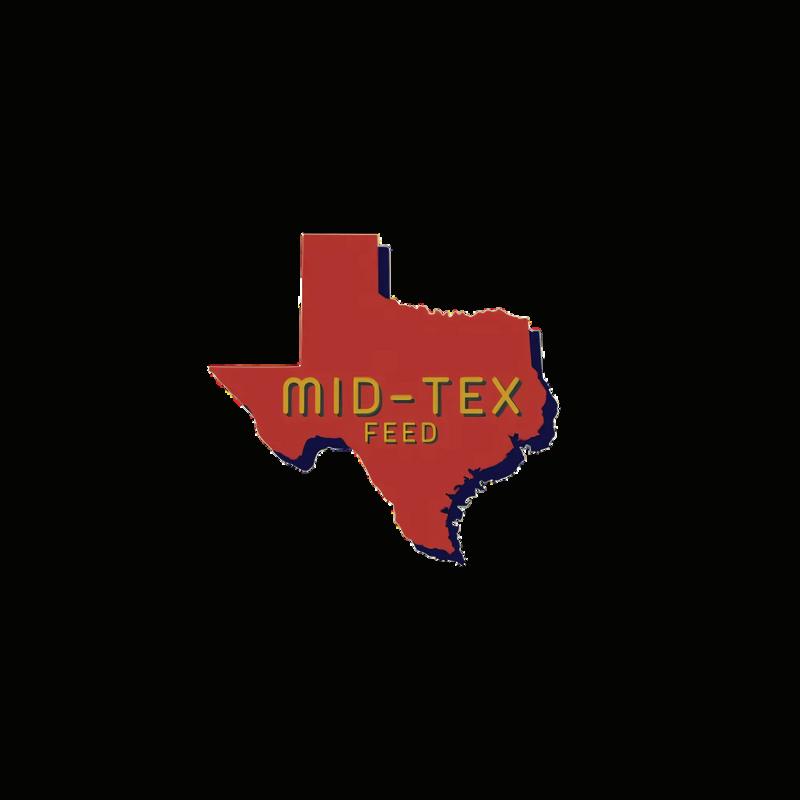




SATURDAY, NOV. 1 -
WEDNESDAY, DEC. 31
TSCRA Leadership Development Foundation Working Grant Program Applications Open
TSCRA Gilly Riojas Summer Internship Applications Open
TSCRA Cattle Raisers Convention & Expo Internship Applications Open
SATURDAY, NOV. 1JAN. 15, 2026
Cattle Raisers Insurance Open Enrollment
WEDNESDAY, NOV. 5
TSCRA Ranch Gathering Where: Floresville When: 5:30 p.m.
THURSDAY, NOV. 6
Jordan Cattle Auction: Special Bull Sale Featuring Cannon Charolais & Knox Brothers Hereford & Angus Where: San Saba When: 10 a.m.
THURSDAY, NOV. 6FRIDAY, NOV. 7
King Ranch Institute: 22nd Annual Holt Cat Symposium on Excellence in Ranch Management Where: Riviera & Online
FRIDAY, NOV. 7SATURDAY, NOV. 8
Fall Harvest Event: Wagyu Sale Where: Alvarado
SATURDAY, NOV. 8
Southwest Black Hereford Association: Southwest Cattleman’s Choice Sale Where: Watts, Oklahoma When: 12 p.m.
TSCRA & Texas Tech Football Tailgate in Partnership with Capital Farm Credit Where: Lubbock When: TBA
WEDNESDAY, NOV. 12
Jordan Cattle Auction: Special Bull Sale Featuring Barber Ranch Hereford & Express Ranch Angus Where: San Saba When: 11 a.m.
On The Road with TSCRA: NWS Educational Event in Partnership with 6666 Ranch Where: Guthrie When: 10 a.m.
SATURDAY, NOV. 13
Wichita Falls Luncheon Where: McBride’s Steakhouse, Wichita Falls When: 11:30 a.m.
Cox Concrete NWS Customer Educational Event Where: Mount Pleasant When: 5:30 p.m.
TSCRA Ranch Gathering Where: Mercedes When: 5:30 p.m.
SATURDAY, NOV. 13 - SUNDAY, NOV. 16
WRCA World Championship Ranch Rodeo Where: Amarillo
SATURDAY, NOV. 15
TSCRA Ranch Gathering Where: Amarillo When: 4 p.m.
TUESDAY, NOV. 18
Ranching 101: Soils to Supplementation - The Storyline of Nutrition Where: Online When: 1 p.m.
THURSDAY, NOV. 20
Jordan Cattle Auction: Special Bull Sale Featuring Schaefer Angus Farms & Shady Oak Farm Charolais & SimAngus Bulls Where: San Saba When: 10 a.m.
SATURDAY, NOV. 22
Jorgensen Land & Cattle: Motherlode Angus Female & Bull Sale Where: Ideal, South Dakota When: 1 p.m.
MONDAY, NOV. 24
Gardiner Angus Ranch: 23rd Annual Profit Proven Commercial Female Sale Where: Ashland, Kansas
FRIDAY, DEC. 5
J Bar Angus: 25th Annual Bull & Select Female Sale Where: Hallettsville When: 1 p.m.
SATURDAY, DEC. 6
Jordan Cattle Auction: Special Replacement Female Sale Where: San Saba When: 10 a.m.
GKB Cattle: Brangus Production Sale Where: Desdemona When: 1 p.m.
SATURDAY, DEC. 13
3rd Annual GKB Cattle & Barber Ranch Female Event Where: Desdemona When: 12 p.m.
TUESDAY, DEC. 16
Ranching 101: Turning Efforts into Earnings - Make Your Operation Profitable Where: Online When: 1 p.m.
THURSDAY, DEC. 18
Jordan Cattle Auction: Leachman
Texas Fall Stabilizer Bull Sale Where: San Saba When: 10 a.m.
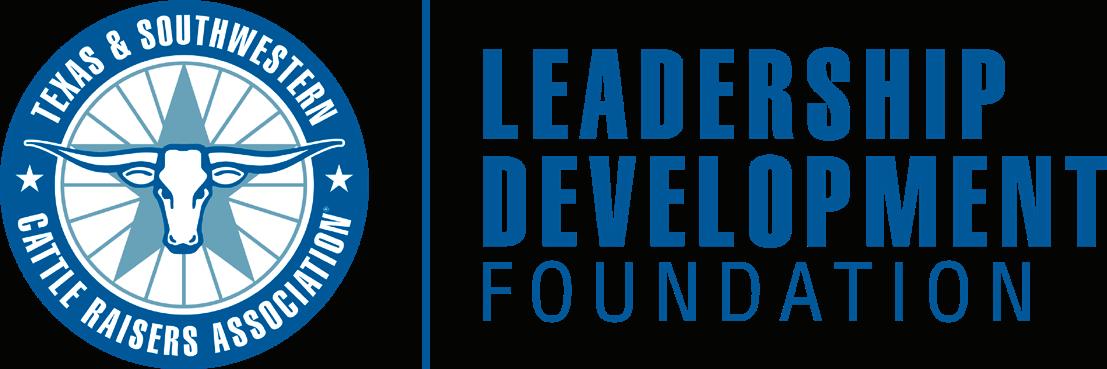
Financial capital to support individuals establishing, operating or growing a beef business.
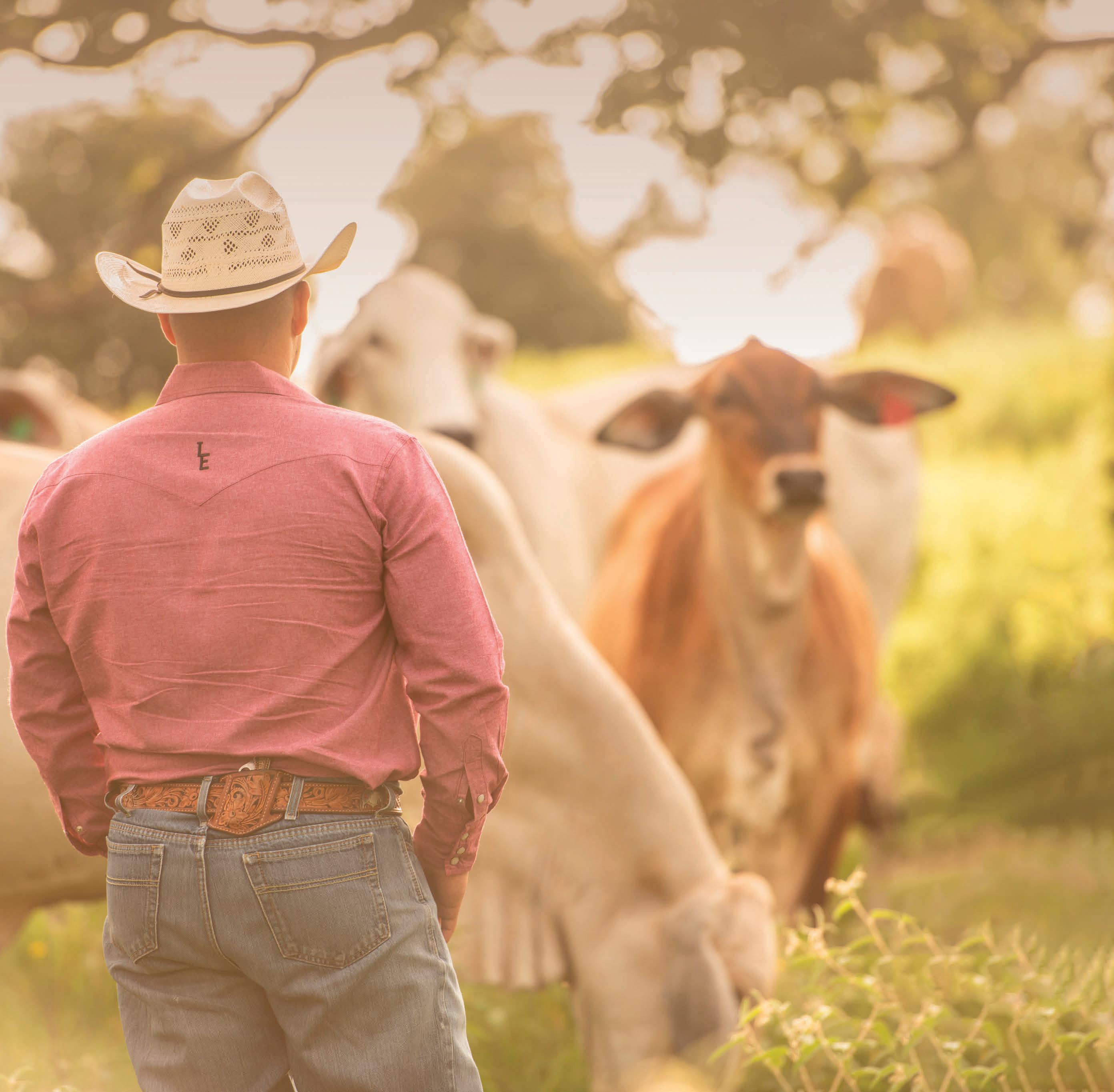
TSCRA Leadership Development Foundation Working Grant Program is now accepting applications from Texas and Oklahoma entrepreneurs in the beef value chain seeking financial support in economically disadvantaged areas.
Apply by Dec. 31 to establish or grow your beef business.

LEARN MORE


Last 3-5 years longer than other breeds

20-25% WW boost with Brangus cross
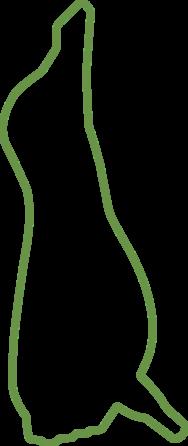
93% grade choice or higher


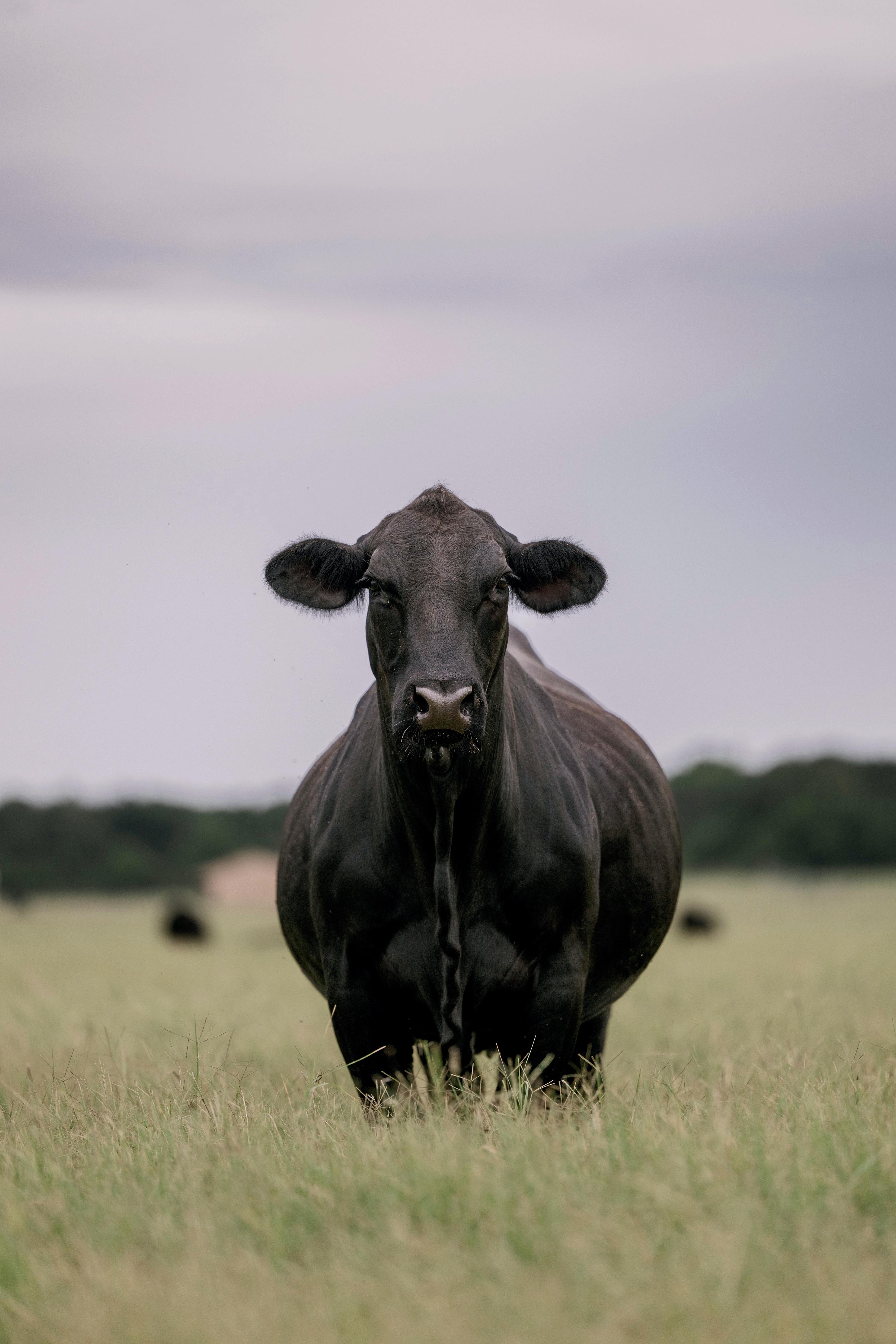



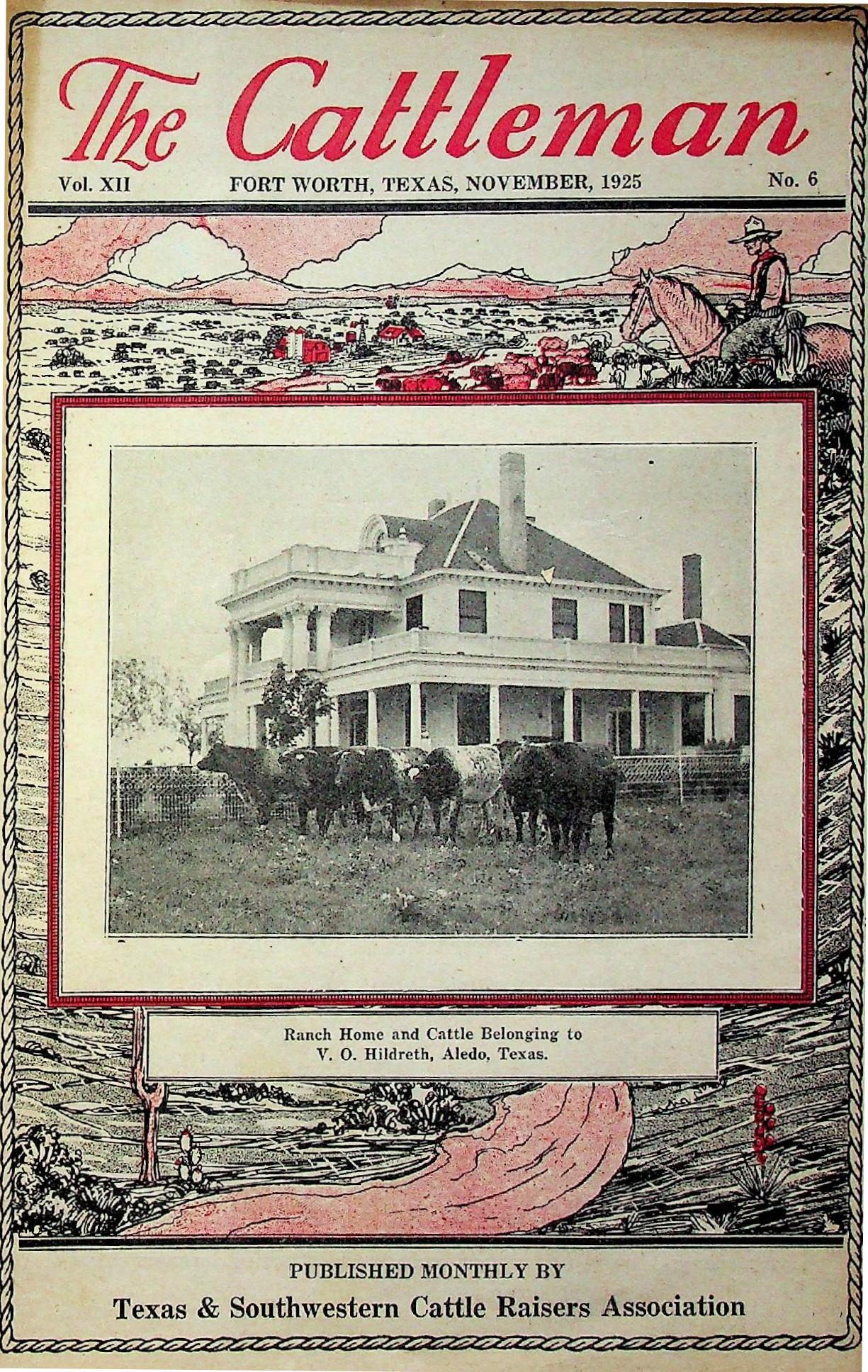
Even a century ago, cattle raisers and landowners rallied together for a repeal of the federal death tax.
A magazine article reported on a delegation of Texas citizens who appeared Oct. 20, 1925, before the ways and means committee in Washington, D.C. In their testimony, the group urged for the unconditional repeal of federal inheritance taxes.
Less than a decade prior, the Revenue Act of 1916 established the first federal estate tax. President Calvin Coolidge was quoted urging
Congress to act quickly and modify the law. The reality, as it was then and has continued to be, was that agriculture and ranching industries were hardest hit by the federal death tax.
“By the time the debts against the estates are paid, the costs of administration deducted, it means forced sales in many instances to pay the inheritance taxes, leaving sometimes practically nothing to the heirs,” the author wrote.
Pictured on the cover is a ranch home and cattle belonging to V.O. Hildreth, Aledo. T C

There’s a lot of irons in the fire when you’re a rancher. You need to manage your land, tend to the herd and maintain their health and safety. And as a professional rancher, you understand, even as good as you are, you sometimes need help. That’s where we come in. We offer insurance coverage that’s customized to your needs to protect you, your herd and your operation. That way you can focus on what’s important … all those other irons. To learn more, visit CapitalFarmCredit.com.
